What’s a fire house? Just a dorm with a garage, right? No way!! It’s where New York’s Bravest hang their helmets while pursuing arguably the most exciting career in the city. It’s where a kid might loiter on a summer afternoon: Waiting for the bells to summon firefighters to another blaze, watching the trucks roar to life, hearing the sirens and bells warn mere mortals to clear the way. (Well, fire trucks used to have shiny brass bells, and if you asked really nicely, the firemen would sometimes let you ring the bell.)
That excitement and romantic view of firemen must have inspired New York architects, because they designed some really awesome fire houses!
The elaborate stations of the early 1900s came about as New York City transitioned from volunteer corps to a paid professional force. The FDNY had its own architect, which for many years was Napoleon LeBrun. His crowning work was the station for Engine Company 31, a Loire Valley chateaux-style confection now used as television studios.
Incidentally – when you see a tower attached to or sprouting from a firehouse, that’s where they hang their hoses to dry between fires.
This photo gallery is but a small sample; you might also enjoy the “Ten House” (Engine Company 10/Ladder Company 10) website – it’s a portal into dozens of FDNY websites: www.fdnytenhouse.com/fdnylinks.htm
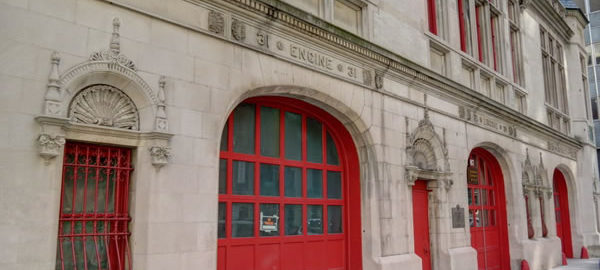
![IMG_7063_4_5Adjust [2/4/2012 1:29:19 PM] IMG_7063_4_5Adjust [2/4/2012 1:29:19 PM]](https://www.newyorkitecture.com/wp-content/gallery/nyc-firehouses/img_7063_4_5adjust.jpg)
![WAT_10_10121 [11/30/2011 11:46:52 AM] WAT_10_10121 [11/30/2011 11:46:52 AM]](https://www.newyorkitecture.com/wp-content/gallery/nyc-firehouses/wat_10_10121.jpg)
![P9150247 [9/15/2011 11:47:26 AM] P9150247 [9/15/2011 11:47:26 AM]](https://www.newyorkitecture.com/wp-content/gallery/nyc-firehouses/p9150247.jpg)
![P9150246 [9/15/2011 11:46:26 AM] P9150246 [9/15/2011 11:46:26 AM]](https://www.newyorkitecture.com/wp-content/gallery/nyc-firehouses/p9150246.jpg)
![P9150004 [9/15/2011 7:37:56 AM] P9150004 [9/15/2011 7:37:56 AM]](https://www.newyorkitecture.com/wp-content/gallery/nyc-firehouses/p9150004.jpg)
![IMG_9725_6_7_tonemapped [11/27/2011 3:25:04 PM] IMG_9725_6_7_tonemapped [11/27/2011 3:25:04 PM]](https://www.newyorkitecture.com/wp-content/gallery/nyc-firehouses/img_9725_6_7_tonemapped.jpg)
![IMG_09724_5_6Adjust [2/18/2012 1:01:56 PM] IMG_09724_5_6Adjust [2/18/2012 1:01:56 PM]](https://www.newyorkitecture.com/wp-content/gallery/nyc-firehouses/img_09724_5_6adjust.jpg)
![IMG_09718_19_20Adjust [2/18/2012 1:00:51 PM] IMG_09718_19_20Adjust [2/18/2012 1:00:51 PM]](https://www.newyorkitecture.com/wp-content/gallery/nyc-firehouses/img_09718_19_20adjust.jpg)
![IMG_09712_3_4Adjust [2/18/2012 12:58:43 PM] IMG_09712_3_4Adjust [2/18/2012 12:58:43 PM]](https://www.newyorkitecture.com/wp-content/gallery/nyc-firehouses/img_09712_3_4adjust.jpg)
![CC_13375_6_7_fused [12/17/2011 11:13:39 AM] CC_13375_6_7_fused [12/17/2011 11:13:39 AM]](https://www.newyorkitecture.com/wp-content/gallery/nyc-firehouses/cc_13375_6_7_fused.jpg)
![IMG_7027_8_9Adjust [2/4/2012 1:21:59 PM] IMG_7027_8_9Adjust [2/4/2012 1:21:59 PM]](https://www.newyorkitecture.com/wp-content/gallery/nyc-firehouses/img_7027_8_9adjust.jpg)
![IMG_5926_7_8Adjust [3/14/2012 2:04:41 PM] IMG_5926_7_8Adjust [3/14/2012 2:04:41 PM]](https://www.newyorkitecture.com/wp-content/gallery/nyc-firehouses/img_5926_7_8adjust.jpg)
![IMG_5494_5_6 [10/31/2011 1:30:09 PM] IMG_5494_5_6 [10/31/2011 1:30:09 PM]](https://www.newyorkitecture.com/wp-content/gallery/nyc-firehouses/img_5494_5_6.jpg)
![IMG_5233_4_5Adjust [3/12/2012 11:58:13 AM] IMG_5233_4_5Adjust [3/12/2012 11:58:13 AM]](https://www.newyorkitecture.com/wp-content/gallery/nyc-firehouses/img_5233_4_5adjust.jpg)
![IMG_5227_8_9Adjust [3/12/2012 11:56:25 AM] IMG_5227_8_9Adjust [3/12/2012 11:56:25 AM]](https://www.newyorkitecture.com/wp-content/gallery/nyc-firehouses/img_5227_8_9adjust.jpg)
![IMG_5215_6_7Adjust [3/12/2012 11:54:10 AM] IMG_5215_6_7Adjust [3/12/2012 11:54:10 AM]](https://www.newyorkitecture.com/wp-content/gallery/nyc-firehouses/img_5215_6_7adjust.jpg)
![IMG_5191_2_3Adjust [3/12/2012 11:50:34 AM] IMG_5191_2_3Adjust [3/12/2012 11:50:34 AM]](https://www.newyorkitecture.com/wp-content/gallery/nyc-firehouses/img_5191_2_3adjust.jpg)
![IMG_0788_89_90_tonemapped [9/30/2011 12:20:52 PM] IMG_0788_89_90_tonemapped [9/30/2011 12:20:52 PM]](https://www.newyorkitecture.com/wp-content/gallery/nyc-firehouses/img_0788_89_90_tonemapped.jpg)
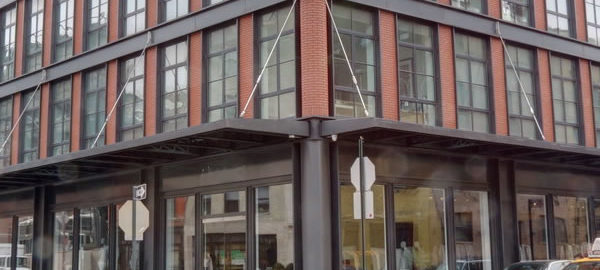
![IMG_3358_59_60Adjust [3/9/2012 11:08:54 AM] IMG_3358_59_60Adjust [3/9/2012 11:08:54 AM]](https://www.newyorkitecture.com/wp-content/gallery/gansevoort-meatpacking-district/img_3358_59_60adjust.jpg)
![IMG_6463_4_5Adjust [2/1/2012 3:35:19 PM] IMG_6463_4_5Adjust [2/1/2012 3:35:19 PM]](https://www.newyorkitecture.com/wp-content/gallery/gansevoort-meatpacking-district/img_6463_4_5adjust.jpg)
![IMG_6451_2_3Adjust [2/1/2012 3:29:15 PM] IMG_6451_2_3Adjust [2/1/2012 3:29:15 PM]](https://www.newyorkitecture.com/wp-content/gallery/gansevoort-meatpacking-district/img_6451_2_3adjust.jpg)
![IMG_6430_1_2Adjust [2/1/2012 3:21:49 PM] IMG_6430_1_2Adjust [2/1/2012 3:21:49 PM]](https://www.newyorkitecture.com/wp-content/gallery/gansevoort-meatpacking-district/img_6430_1_2adjust.jpg)
![IMG_6424_5_6Adjust [2/1/2012 3:17:49 PM] IMG_6424_5_6Adjust [2/1/2012 3:17:49 PM]](https://www.newyorkitecture.com/wp-content/gallery/gansevoort-meatpacking-district/img_6424_5_6adjust.jpg)
![IMG_3436_7_8Adjust [3/9/2012 11:36:57 AM] IMG_3436_7_8Adjust [3/9/2012 11:36:57 AM]](https://www.newyorkitecture.com/wp-content/gallery/gansevoort-meatpacking-district/img_3436_7_8adjust.jpg)
![IMG_3424_5_6Adjust [3/9/2012 11:29:55 AM] IMG_3424_5_6Adjust [3/9/2012 11:29:55 AM]](https://www.newyorkitecture.com/wp-content/gallery/gansevoort-meatpacking-district/img_3424_5_6adjust.jpg)
![IMG_3418_19_20Adjust [3/9/2012 11:26:33 AM] IMG_3418_19_20Adjust [3/9/2012 11:26:33 AM]](https://www.newyorkitecture.com/wp-content/gallery/gansevoort-meatpacking-district/img_3418_19_20adjust.jpg)
![IMG_3412_3_4Adjust [3/9/2012 11:25:22 AM] IMG_3412_3_4Adjust [3/9/2012 11:25:22 AM]](https://www.newyorkitecture.com/wp-content/gallery/gansevoort-meatpacking-district/img_3412_3_4adjust.jpg)
![IMG_3403_4_5Adjust [3/9/2012 11:24:07 AM] IMG_3403_4_5Adjust [3/9/2012 11:24:07 AM]](https://www.newyorkitecture.com/wp-content/gallery/gansevoort-meatpacking-district/img_3403_4_5adjust.jpg)
![IMG_3394_5_6Adjust [3/9/2012 11:22:42 AM] IMG_3394_5_6Adjust [3/9/2012 11:22:42 AM]](https://www.newyorkitecture.com/wp-content/gallery/gansevoort-meatpacking-district/img_3394_5_6adjust.jpg)
![IMG_3376_7_8Adjust [3/9/2012 11:19:21 AM] IMG_3376_7_8Adjust [3/9/2012 11:19:21 AM]](https://www.newyorkitecture.com/wp-content/gallery/gansevoort-meatpacking-district/img_3376_7_8adjust.jpg)
![IMG_3370_1_2Adjust [3/9/2012 11:18:04 AM] IMG_3370_1_2Adjust [3/9/2012 11:18:04 AM]](https://www.newyorkitecture.com/wp-content/gallery/gansevoort-meatpacking-district/img_3370_1_2adjust.jpg)
![IMG_3361_2_3Adjust [3/9/2012 11:14:52 AM] IMG_3361_2_3Adjust [3/9/2012 11:14:52 AM]](https://www.newyorkitecture.com/wp-content/gallery/gansevoort-meatpacking-district/img_3361_2_3adjust.jpg)
![IMG_3235_6_7Adjust [3/9/2012 10:26:17 AM] IMG_3235_6_7Adjust [3/9/2012 10:26:17 AM]](https://www.newyorkitecture.com/wp-content/gallery/gansevoort-meatpacking-district/img_3235_6_7adjust.jpg)
![IMG_3349_50_51Adjust [3/9/2012 11:05:57 AM] IMG_3349_50_51Adjust [3/9/2012 11:05:57 AM]](https://www.newyorkitecture.com/wp-content/gallery/gansevoort-meatpacking-district/img_3349_50_51adjust.jpg)
![IMG_3346_7_8Adjust [3/9/2012 11:03:44 AM] IMG_3346_7_8Adjust [3/9/2012 11:03:44 AM]](https://www.newyorkitecture.com/wp-content/gallery/gansevoort-meatpacking-district/img_3346_7_8adjust.jpg)
![IMG_3322_3_4Adjust [3/9/2012 10:58:41 AM] IMG_3322_3_4Adjust [3/9/2012 10:58:41 AM]](https://www.newyorkitecture.com/wp-content/gallery/gansevoort-meatpacking-district/img_3322_3_4adjust.jpg)
![IMG_3310_1_2Adjust [3/9/2012 10:53:13 AM] IMG_3310_1_2Adjust [3/9/2012 10:53:13 AM]](https://www.newyorkitecture.com/wp-content/gallery/gansevoort-meatpacking-district/img_3310_1_2adjust.jpg)
![IMG_3298_299_300Adjust [3/9/2012 10:48:05 AM] IMG_3298_299_300Adjust [3/9/2012 10:48:05 AM]](https://www.newyorkitecture.com/wp-content/gallery/gansevoort-meatpacking-district/img_3298_299_300adjust.jpg)
![IMG_3286_7_8Adjust [3/9/2012 10:44:45 AM] IMG_3286_7_8Adjust [3/9/2012 10:44:45 AM]](https://www.newyorkitecture.com/wp-content/gallery/gansevoort-meatpacking-district/img_3286_7_8adjust.jpg)
![IMG_3280_1_2Adjust [3/9/2012 10:43:14 AM] IMG_3280_1_2Adjust [3/9/2012 10:43:14 AM]](https://www.newyorkitecture.com/wp-content/gallery/gansevoort-meatpacking-district/img_3280_1_2adjust.jpg)
![IMG_3268_69_70Adjust [3/9/2012 10:41:16 AM] IMG_3268_69_70Adjust [3/9/2012 10:41:16 AM]](https://www.newyorkitecture.com/wp-content/gallery/gansevoort-meatpacking-district/img_3268_69_70adjust.jpg)
![IMG_3262_3_4Adjust [3/9/2012 10:38:08 AM] IMG_3262_3_4Adjust [3/9/2012 10:38:08 AM]](https://www.newyorkitecture.com/wp-content/gallery/gansevoort-meatpacking-district/img_3262_3_4adjust.jpg)
![IMG_3250_1_2Adjust [3/9/2012 10:33:31 AM] IMG_3250_1_2Adjust [3/9/2012 10:33:31 AM]](https://www.newyorkitecture.com/wp-content/gallery/gansevoort-meatpacking-district/img_3250_1_2adjust.jpg)
![IMG_3244_5_6Adjust [3/9/2012 10:31:11 AM] IMG_3244_5_6Adjust [3/9/2012 10:31:11 AM]](https://www.newyorkitecture.com/wp-content/gallery/gansevoort-meatpacking-district/img_3244_5_6adjust.jpg)
![IMG_3241_2_3Adjust [3/9/2012 10:28:18 AM] IMG_3241_2_3Adjust [3/9/2012 10:28:18 AM]](https://www.newyorkitecture.com/wp-content/gallery/gansevoort-meatpacking-district/img_3241_2_3adjust.jpg)
![IMG_3238_39_40Adjust [3/9/2012 10:26:53 AM] IMG_3238_39_40Adjust [3/9/2012 10:26:53 AM]](https://www.newyorkitecture.com/wp-content/gallery/gansevoort-meatpacking-district/img_3238_39_40adjust.jpg)
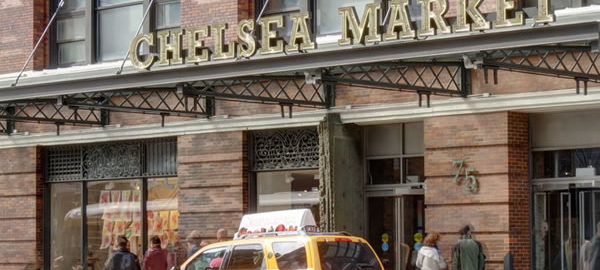
![IMG_2497_8_9Adjust [3/6/2012 1:00:15 PM] IMG_2497_8_9Adjust [3/6/2012 1:00:15 PM]](https://www.newyorkitecture.com/wp-content/gallery/chelsea/img_2497_8_9adjust.jpg)
![IMG_2509_10_11Adjust [3/6/2012 1:04:27 PM] IMG_2509_10_11Adjust [3/6/2012 1:04:27 PM]](https://www.newyorkitecture.com/wp-content/gallery/chelsea/img_2509_10_11adjust.jpg)
![IMG_2521_2_3Adjust [3/6/2012 1:06:49 PM] IMG_2521_2_3Adjust [3/6/2012 1:06:49 PM]](https://www.newyorkitecture.com/wp-content/gallery/chelsea/img_2521_2_3adjust.jpg)
![IMG_2524_5_6Adjust [3/6/2012 1:10:16 PM] IMG_2524_5_6Adjust [3/6/2012 1:10:16 PM]](https://www.newyorkitecture.com/wp-content/gallery/chelsea/img_2524_5_6adjust.jpg)
![IMG_2530_1_2Adjust [3/6/2012 1:11:53 PM] IMG_2530_1_2Adjust [3/6/2012 1:11:53 PM]](https://www.newyorkitecture.com/wp-content/gallery/chelsea/img_2530_1_2adjust.jpg)
![IMG_2536_7_8Adjust [3/6/2012 1:12:45 PM] IMG_2536_7_8Adjust [3/6/2012 1:12:45 PM]](https://www.newyorkitecture.com/wp-content/gallery/chelsea/img_2536_7_8adjust.jpg)
![IMG_2545_6_7Adjust [3/6/2012 1:14:04 PM] IMG_2545_6_7Adjust [3/6/2012 1:14:04 PM]](https://www.newyorkitecture.com/wp-content/gallery/chelsea/img_2545_6_7adjust.jpg)
![IMG_2557_8_9Adjust [3/6/2012 1:18:54 PM] IMG_2557_8_9Adjust [3/6/2012 1:18:54 PM]](https://www.newyorkitecture.com/wp-content/gallery/chelsea/img_2557_8_9adjust.jpg)
![IMG_2569_70_71Adjust [3/6/2012 1:21:25 PM] IMG_2569_70_71Adjust [3/6/2012 1:21:25 PM]](https://www.newyorkitecture.com/wp-content/gallery/chelsea/img_2569_70_71adjust.jpg)
![IMG_2584_5_6Adjust [3/6/2012 1:29:47 PM] IMG_2584_5_6Adjust [3/6/2012 1:29:47 PM]](https://www.newyorkitecture.com/wp-content/gallery/chelsea/img_2584_5_6adjust.jpg)
![IMG_2587_8_9Adjust [3/6/2012 1:30:47 PM] IMG_2587_8_9Adjust [3/6/2012 1:30:47 PM]](https://www.newyorkitecture.com/wp-content/gallery/chelsea/img_2587_8_9adjust.jpg)
![IMG_2593_4_5Adjust [3/6/2012 1:32:33 PM] IMG_2593_4_5Adjust [3/6/2012 1:32:33 PM]](https://www.newyorkitecture.com/wp-content/gallery/chelsea/img_2593_4_5adjust.jpg)
![IMG_2596_7_8Adjust [3/6/2012 1:35:30 PM] IMG_2596_7_8Adjust [3/6/2012 1:35:30 PM]](https://www.newyorkitecture.com/wp-content/gallery/chelsea/img_2596_7_8adjust.jpg)
![IMG_2605_6_7Adjust [3/6/2012 1:37:01 PM] IMG_2605_6_7Adjust [3/6/2012 1:37:01 PM]](https://www.newyorkitecture.com/wp-content/gallery/chelsea/img_2605_6_7adjust.jpg)
![IMG_2608_09_10Adjust [3/6/2012 1:37:57 PM] IMG_2608_09_10Adjust [3/6/2012 1:37:57 PM]](https://www.newyorkitecture.com/wp-content/gallery/chelsea/img_2608_09_10adjust.jpg)
![IMG_2623_4_5Adjust [3/6/2012 1:44:27 PM] IMG_2623_4_5Adjust [3/6/2012 1:44:27 PM]](https://www.newyorkitecture.com/wp-content/gallery/chelsea/img_2623_4_5adjust.jpg)
![IMG_2665_6_7Adjust [3/6/2012 2:03:41 PM] IMG_2665_6_7Adjust [3/6/2012 2:03:41 PM]](https://www.newyorkitecture.com/wp-content/gallery/chelsea/img_2665_6_7adjust.jpg)
![IMG_2680_1_2Adjust [3/6/2012 2:06:45 PM] IMG_2680_1_2Adjust [3/6/2012 2:06:45 PM]](https://www.newyorkitecture.com/wp-content/gallery/chelsea/img_2680_1_2adjust.jpg)
![IMG_2710_1_2Adjust [3/6/2012 2:21:15 PM] IMG_2710_1_2Adjust [3/6/2012 2:21:15 PM]](https://www.newyorkitecture.com/wp-content/gallery/chelsea/img_2710_1_2adjust.jpg)
![IMG_2731_2_3Adjust [3/6/2012 2:27:07 PM] IMG_2731_2_3Adjust [3/6/2012 2:27:07 PM]](https://www.newyorkitecture.com/wp-content/gallery/chelsea/img_2731_2_3adjust.jpg)
![IMG_2737_8_9Adjust [3/6/2012 2:33:46 PM] IMG_2737_8_9Adjust [3/6/2012 2:33:46 PM]](https://www.newyorkitecture.com/wp-content/gallery/chelsea/img_2737_8_9adjust.jpg)
![IMG_2911_2_3Adjust [3/7/2012 10:06:51 AM] IMG_2911_2_3Adjust [3/7/2012 10:06:51 AM]](https://www.newyorkitecture.com/wp-content/gallery/chelsea/img_2911_2_3adjust.jpg)
![IMG_2917_8_9Adjust [3/7/2012 10:08:40 AM] IMG_2917_8_9Adjust [3/7/2012 10:08:40 AM]](https://www.newyorkitecture.com/wp-content/gallery/chelsea/img_2917_8_9adjust.jpg)
![IMG_2923_4_5Adjust [3/7/2012 10:10:25 AM] IMG_2923_4_5Adjust [3/7/2012 10:10:25 AM]](https://www.newyorkitecture.com/wp-content/gallery/chelsea/img_2923_4_5adjust.jpg)
![IMG_2926_7_8Adjust [3/7/2012 10:11:09 AM] IMG_2926_7_8Adjust [3/7/2012 10:11:09 AM]](https://www.newyorkitecture.com/wp-content/gallery/chelsea/img_2926_7_8adjust.jpg)
![IMG_2929_30_31Adjust [3/7/2012 10:11:56 AM] IMG_2929_30_31Adjust [3/7/2012 10:11:56 AM]](https://www.newyorkitecture.com/wp-content/gallery/chelsea/img_2929_30_31adjust.jpg)
![IMG_2935_6_7Adjust [3/7/2012 10:13:02 AM] IMG_2935_6_7Adjust [3/7/2012 10:13:02 AM]](https://www.newyorkitecture.com/wp-content/gallery/chelsea/img_2935_6_7adjust.jpg)
![IMG_2941_2_3Adjust [3/7/2012 10:14:45 AM] IMG_2941_2_3Adjust [3/7/2012 10:14:45 AM]](https://www.newyorkitecture.com/wp-content/gallery/chelsea/img_2941_2_3adjust.jpg)
![IMG_2947_8_9Adjust [3/7/2012 10:18:26 AM] IMG_2947_8_9Adjust [3/7/2012 10:18:26 AM]](https://www.newyorkitecture.com/wp-content/gallery/chelsea/img_2947_8_9adjust.jpg)
![IMG_2956_7_8Adjust [3/7/2012 10:21:46 AM] IMG_2956_7_8Adjust [3/7/2012 10:21:46 AM]](https://www.newyorkitecture.com/wp-content/gallery/chelsea/img_2956_7_8adjust.jpg)
![IMG_2968_69_70Adjust [3/7/2012 10:25:14 AM] IMG_2968_69_70Adjust [3/7/2012 10:25:14 AM]](https://www.newyorkitecture.com/wp-content/gallery/chelsea/img_2968_69_70adjust.jpg)
![IMG_2974_5_6Adjust [3/7/2012 10:28:33 AM] IMG_2974_5_6Adjust [3/7/2012 10:28:33 AM]](https://www.newyorkitecture.com/wp-content/gallery/chelsea/img_2974_5_6adjust.jpg)
![IMG_2983_4_5Adjust [3/7/2012 10:33:36 AM] IMG_2983_4_5Adjust [3/7/2012 10:33:36 AM]](https://www.newyorkitecture.com/wp-content/gallery/chelsea/img_2983_4_5adjust.jpg)
![IMG_2989_90_91Adjust [3/7/2012 10:36:34 AM] IMG_2989_90_91Adjust [3/7/2012 10:36:34 AM]](https://www.newyorkitecture.com/wp-content/gallery/chelsea/img_2989_90_91adjust.jpg)
![IMG_3004_5_6Adjust [3/7/2012 10:43:03 AM] IMG_3004_5_6Adjust [3/7/2012 10:43:03 AM]](https://www.newyorkitecture.com/wp-content/gallery/chelsea/img_3004_5_6adjust.jpg)
![IMG_3019_20_21Adjust [3/7/2012 10:45:26 AM] IMG_3019_20_21Adjust [3/7/2012 10:45:26 AM]](https://www.newyorkitecture.com/wp-content/gallery/chelsea/img_3019_20_21adjust.jpg)
![IMG_3037_8_9Adjust [3/7/2012 10:48:21 AM] IMG_3037_8_9Adjust [3/7/2012 10:48:21 AM]](https://www.newyorkitecture.com/wp-content/gallery/chelsea/img_3037_8_9adjust.jpg)
![IMG_3043_4_5Adjust [3/7/2012 10:49:20 AM] IMG_3043_4_5Adjust [3/7/2012 10:49:20 AM]](https://www.newyorkitecture.com/wp-content/gallery/chelsea/img_3043_4_5adjust.jpg)
![IMG_3049_50_51Adjust [3/7/2012 10:50:58 AM] IMG_3049_50_51Adjust [3/7/2012 10:50:58 AM]](https://www.newyorkitecture.com/wp-content/gallery/chelsea/img_3049_50_51adjust.jpg)
![IMG_3055_6_7Adjust [3/7/2012 10:52:23 AM] IMG_3055_6_7Adjust [3/7/2012 10:52:23 AM]](https://www.newyorkitecture.com/wp-content/gallery/chelsea/img_3055_6_7adjust.jpg)
![IMG_3082_3_4Adjust [3/7/2012 10:58:40 AM] IMG_3082_3_4Adjust [3/7/2012 10:58:40 AM]](https://www.newyorkitecture.com/wp-content/gallery/chelsea/img_3082_3_4adjust.jpg)
![IMG_3106_7_8Adjust [3/7/2012 11:03:56 AM] IMG_3106_7_8Adjust [3/7/2012 11:03:56 AM]](https://www.newyorkitecture.com/wp-content/gallery/chelsea/img_3106_7_8adjust.jpg)
![IMG_3115_6_7Adjust [3/7/2012 11:06:26 AM] IMG_3115_6_7Adjust [3/7/2012 11:06:26 AM]](https://www.newyorkitecture.com/wp-content/gallery/chelsea/img_3115_6_7adjust.jpg)
![IMG_3484_5_6Adjust [3/9/2012 11:49:48 AM] IMG_3484_5_6Adjust [3/9/2012 11:49:48 AM]](https://www.newyorkitecture.com/wp-content/gallery/chelsea/img_3484_5_6adjust.jpg)
![IMG_3499_500_501Adjust [3/9/2012 11:52:38 AM] IMG_3499_500_501Adjust [3/9/2012 11:52:38 AM]](https://www.newyorkitecture.com/wp-content/gallery/chelsea/img_3499_500_501adjust.jpg)
![IMG_3511_2_3Adjust [3/9/2012 11:55:47 AM] IMG_3511_2_3Adjust [3/9/2012 11:55:47 AM]](https://www.newyorkitecture.com/wp-content/gallery/chelsea/img_3511_2_3adjust.jpg)
![IMG_3535_6_7Adjust [3/9/2012 12:04:43 PM] IMG_3535_6_7Adjust [3/9/2012 12:04:43 PM]](https://www.newyorkitecture.com/wp-content/gallery/chelsea/img_3535_6_7adjust.jpg)
![IMG_3544_5_6Adjust [3/9/2012 12:06:14 PM] IMG_3544_5_6Adjust [3/9/2012 12:06:14 PM]](https://www.newyorkitecture.com/wp-content/gallery/chelsea/img_3544_5_6adjust.jpg)
![IMG_3553_4_5Adjust [3/9/2012 12:11:46 PM] IMG_3553_4_5Adjust [3/9/2012 12:11:46 PM]](https://www.newyorkitecture.com/wp-content/gallery/chelsea/img_3553_4_5adjust.jpg)
![IMG_3556_7_8Adjust [3/9/2012 12:12:37 PM] IMG_3556_7_8Adjust [3/9/2012 12:12:37 PM]](https://www.newyorkitecture.com/wp-content/gallery/chelsea/img_3556_7_8adjust.jpg)
![IMG_3562_3_4Adjust [3/9/2012 12:14:22 PM] IMG_3562_3_4Adjust [3/9/2012 12:14:22 PM]](https://www.newyorkitecture.com/wp-content/gallery/chelsea/img_3562_3_4adjust.jpg)
![IMG_3568_69_70Adjust [3/9/2012 12:17:38 PM] IMG_3568_69_70Adjust [3/9/2012 12:17:38 PM]](https://www.newyorkitecture.com/wp-content/gallery/chelsea/img_3568_69_70adjust.jpg)
![IMG_3574_5_6Adjust [3/9/2012 12:21:43 PM] IMG_3574_5_6Adjust [3/9/2012 12:21:43 PM]](https://www.newyorkitecture.com/wp-content/gallery/chelsea/img_3574_5_6adjust.jpg)
![IMG_3601_2_3Adjust [3/9/2012 12:28:47 PM] IMG_3601_2_3Adjust [3/9/2012 12:28:47 PM]](https://www.newyorkitecture.com/wp-content/gallery/chelsea/img_3601_2_3adjust.jpg)
![IMG_3610_1_2Adjust [3/9/2012 12:33:47 PM] IMG_3610_1_2Adjust [3/9/2012 12:33:47 PM]](https://www.newyorkitecture.com/wp-content/gallery/chelsea/img_3610_1_2adjust.jpg)
![IMG_3622_3_4Adjust [3/9/2012 12:35:52 PM] IMG_3622_3_4Adjust [3/9/2012 12:35:52 PM]](https://www.newyorkitecture.com/wp-content/gallery/chelsea/img_3622_3_4adjust.jpg)
![IMG_3631_2_3Adjust [3/9/2012 12:42:39 PM] IMG_3631_2_3Adjust [3/9/2012 12:42:39 PM]](https://www.newyorkitecture.com/wp-content/gallery/chelsea/img_3631_2_3adjust.jpg)
![IMG_3634_5_6Adjust [3/9/2012 12:44:00 PM] IMG_3634_5_6Adjust [3/9/2012 12:44:00 PM]](https://www.newyorkitecture.com/wp-content/gallery/chelsea/img_3634_5_6adjust.jpg)
![IMG_3640_1_2Adjust [3/9/2012 12:44:57 PM] IMG_3640_1_2Adjust [3/9/2012 12:44:57 PM]](https://www.newyorkitecture.com/wp-content/gallery/chelsea/img_3640_1_2adjust.jpg)
![IMG_3655_6_7Adjust [3/9/2012 12:48:22 PM] IMG_3655_6_7Adjust [3/9/2012 12:48:22 PM]](https://www.newyorkitecture.com/wp-content/gallery/chelsea/img_3655_6_7adjust.jpg)
![IMG_3667_8_9Adjust [3/9/2012 12:55:14 PM] IMG_3667_8_9Adjust [3/9/2012 12:55:14 PM]](https://www.newyorkitecture.com/wp-content/gallery/chelsea/img_3667_8_9adjust.jpg)
![IMG_3673_4_5Adjust [3/9/2012 12:57:13 PM] IMG_3673_4_5Adjust [3/9/2012 12:57:13 PM]](https://www.newyorkitecture.com/wp-content/gallery/chelsea/img_3673_4_5adjust.jpg)
![IMG_3679_80_81Adjust [3/9/2012 12:58:51 PM] IMG_3679_80_81Adjust [3/9/2012 12:58:51 PM]](https://www.newyorkitecture.com/wp-content/gallery/chelsea/img_3679_80_81adjust.jpg)
![IMG_3691_2_3Adjust [3/9/2012 1:00:28 PM] IMG_3691_2_3Adjust [3/9/2012 1:00:28 PM]](https://www.newyorkitecture.com/wp-content/gallery/chelsea/img_3691_2_3adjust.jpg)
![IMG_3703_4_5Adjust [3/9/2012 1:02:59 PM] IMG_3703_4_5Adjust [3/9/2012 1:02:59 PM]](https://www.newyorkitecture.com/wp-content/gallery/chelsea/img_3703_4_5adjust.jpg)
![IMG_3727_8_9Adjust [3/9/2012 1:09:08 PM] IMG_3727_8_9Adjust [3/9/2012 1:09:08 PM]](https://www.newyorkitecture.com/wp-content/gallery/chelsea/img_3727_8_9adjust.jpg)
![IMG_3730_1_2Adjust [3/9/2012 1:11:45 PM] IMG_3730_1_2Adjust [3/9/2012 1:11:45 PM]](https://www.newyorkitecture.com/wp-content/gallery/chelsea/img_3730_1_2adjust.jpg)
![IMG_3745_6_7Adjust [3/9/2012 1:13:31 PM] IMG_3745_6_7Adjust [3/9/2012 1:13:31 PM]](https://www.newyorkitecture.com/wp-content/gallery/chelsea/img_3745_6_7adjust.jpg)
![IMG_3751_2_3Adjust [3/9/2012 1:14:43 PM] IMG_3751_2_3Adjust [3/9/2012 1:14:43 PM]](https://www.newyorkitecture.com/wp-content/gallery/chelsea/img_3751_2_3adjust.jpg)
![IMG_3766_7_8Adjust [3/9/2012 1:23:22 PM] IMG_3766_7_8Adjust [3/9/2012 1:23:22 PM]](https://www.newyorkitecture.com/wp-content/gallery/chelsea/img_3766_7_8adjust.jpg)
![IMG_3778_79_80Adjust [3/9/2012 1:30:29 PM] IMG_3778_79_80Adjust [3/9/2012 1:30:29 PM]](https://www.newyorkitecture.com/wp-content/gallery/chelsea/img_3778_79_80adjust.jpg)
![IMG_3787_8_9Adjust [3/9/2012 1:33:30 PM] IMG_3787_8_9Adjust [3/9/2012 1:33:30 PM]](https://www.newyorkitecture.com/wp-content/gallery/chelsea/img_3787_8_9adjust.jpg)
![IMG_3799_800_801Adjust [3/9/2012 1:35:57 PM] IMG_3799_800_801Adjust [3/9/2012 1:35:57 PM]](https://www.newyorkitecture.com/wp-content/gallery/chelsea/img_3799_800_801adjust.jpg)
![IMG_3892_3_4Adjust [3/11/2012 11:24:47 AM] IMG_3892_3_4Adjust [3/11/2012 11:24:47 AM]](https://www.newyorkitecture.com/wp-content/gallery/chelsea/img_3892_3_4adjust.jpg)
![IMG_3895_6_7Adjust [3/11/2012 11:27:07 AM] IMG_3895_6_7Adjust [3/11/2012 11:27:07 AM]](https://www.newyorkitecture.com/wp-content/gallery/chelsea/img_3895_6_7adjust.jpg)
![IMG_3901_2_3Adjust [3/11/2012 11:28:32 AM] IMG_3901_2_3Adjust [3/11/2012 11:28:32 AM]](https://www.newyorkitecture.com/wp-content/gallery/chelsea/img_3901_2_3adjust.jpg)
![IMG_4270_1_2Adjust [3/11/2012 1:51:35 PM] IMG_4270_1_2Adjust [3/11/2012 1:51:35 PM]](https://www.newyorkitecture.com/wp-content/gallery/chelsea/img_4270_1_2adjust.jpg)
![IMG_4276_7_8Adjust [3/11/2012 1:53:23 PM] IMG_4276_7_8Adjust [3/11/2012 1:53:23 PM]](https://www.newyorkitecture.com/wp-content/gallery/chelsea/img_4276_7_8adjust.jpg)
![IMG_4330_1_2Adjust [3/11/2012 2:13:13 PM] IMG_4330_1_2Adjust [3/11/2012 2:13:13 PM]](https://www.newyorkitecture.com/wp-content/gallery/chelsea/img_4330_1_2adjust.jpg)
![IMG_4336_7_8Adjust [3/11/2012 2:16:14 PM] IMG_4336_7_8Adjust [3/11/2012 2:16:14 PM]](https://www.newyorkitecture.com/wp-content/gallery/chelsea/img_4336_7_8adjust.jpg)
![IMG_4348_49_50Adjust [3/11/2012 2:20:41 PM] IMG_4348_49_50Adjust [3/11/2012 2:20:41 PM]](https://www.newyorkitecture.com/wp-content/gallery/chelsea/img_4348_49_50adjust.jpg)
![IMG_4384_5_6Adjust [3/11/2012 2:28:02 PM] IMG_4384_5_6Adjust [3/11/2012 2:28:02 PM]](https://www.newyorkitecture.com/wp-content/gallery/chelsea/img_4384_5_6adjust.jpg)
![IMG_4423_4_5Adjust [3/11/2012 2:37:13 PM] IMG_4423_4_5Adjust [3/11/2012 2:37:13 PM]](https://www.newyorkitecture.com/wp-content/gallery/chelsea/img_4423_4_5adjust.jpg)
![IMG_4432_3_4Adjust [3/11/2012 2:40:01 PM] IMG_4432_3_4Adjust [3/11/2012 2:40:01 PM]](https://www.newyorkitecture.com/wp-content/gallery/chelsea/img_4432_3_4adjust.jpg)
![IMG_4453_4_5Adjust [3/11/2012 2:49:49 PM] IMG_4453_4_5Adjust [3/11/2012 2:49:49 PM]](https://www.newyorkitecture.com/wp-content/gallery/chelsea/img_4453_4_5adjust.jpg)
![IMG_4462_3_4Adjust [3/11/2012 2:56:06 PM] IMG_4462_3_4Adjust [3/11/2012 2:56:06 PM]](https://www.newyorkitecture.com/wp-content/gallery/chelsea/img_4462_3_4adjust.jpg)
![IMG_4480_1_2Adjust [3/11/2012 2:59:16 PM] IMG_4480_1_2Adjust [3/11/2012 2:59:16 PM]](https://www.newyorkitecture.com/wp-content/gallery/chelsea/img_4480_1_2adjust.jpg)
![IMG_4483_4_5Adjust [3/11/2012 3:00:32 PM] IMG_4483_4_5Adjust [3/11/2012 3:00:32 PM]](https://www.newyorkitecture.com/wp-content/gallery/chelsea/img_4483_4_5adjust.jpg)
![IMG_4507_8_9Adjust [3/11/2012 3:05:08 PM] IMG_4507_8_9Adjust [3/11/2012 3:05:08 PM]](https://www.newyorkitecture.com/wp-content/gallery/chelsea/img_4507_8_9adjust.jpg)
![IMG_4516_7_8Adjust [3/11/2012 3:08:24 PM] IMG_4516_7_8Adjust [3/11/2012 3:08:24 PM]](https://www.newyorkitecture.com/wp-content/gallery/chelsea/img_4516_7_8adjust.jpg)
![IMG_4534_5_6Adjust [3/11/2012 3:11:03 PM] IMG_4534_5_6Adjust [3/11/2012 3:11:03 PM]](https://www.newyorkitecture.com/wp-content/gallery/chelsea/img_4534_5_6adjust.jpg)
![IMG_4540_1_2Adjust [3/11/2012 3:15:58 PM] IMG_4540_1_2Adjust [3/11/2012 3:15:58 PM]](https://www.newyorkitecture.com/wp-content/gallery/chelsea/img_4540_1_2adjust.jpg)
![IMG_5296_7_8Adjust [1/1/2012 1:02:46 PM] IMG_5296_7_8Adjust [1/1/2012 1:02:46 PM]](https://www.newyorkitecture.com/wp-content/gallery/chelsea/img_5296_7_8adjust.jpg)
![IMG_5302_3_4Adjust [1/1/2012 1:04:05 PM] IMG_5302_3_4Adjust [1/1/2012 1:04:05 PM]](https://www.newyorkitecture.com/wp-content/gallery/chelsea/img_5302_3_4adjust.jpg)
![IMG_5305_6_7Adjust [1/1/2012 1:04:43 PM] IMG_5305_6_7Adjust [1/1/2012 1:04:43 PM]](https://www.newyorkitecture.com/wp-content/gallery/chelsea/img_5305_6_7adjust.jpg)
![IMG_5311_2_3Adjust [1/1/2012 1:08:19 PM] IMG_5311_2_3Adjust [1/1/2012 1:08:19 PM]](https://www.newyorkitecture.com/wp-content/gallery/chelsea/img_5311_2_3adjust.jpg)
![IMG_5329_30_31Adjust [1/1/2012 1:13:46 PM] IMG_5329_30_31Adjust [1/1/2012 1:13:46 PM]](https://www.newyorkitecture.com/wp-content/gallery/chelsea/img_5329_30_31adjust.jpg)
![IMG_5332_3_4Adjust [1/1/2012 1:15:08 PM] IMG_5332_3_4Adjust [1/1/2012 1:15:08 PM]](https://www.newyorkitecture.com/wp-content/gallery/chelsea/img_5332_3_4adjust.jpg)
![IMG_5356_7_8Adjust [1/1/2012 1:25:39 PM] IMG_5356_7_8Adjust [1/1/2012 1:25:39 PM]](https://www.newyorkitecture.com/wp-content/gallery/chelsea/img_5356_7_8adjust.jpg)
![IMG_5359_60_61Adjust [1/1/2012 1:26:06 PM] IMG_5359_60_61Adjust [1/1/2012 1:26:06 PM]](https://www.newyorkitecture.com/wp-content/gallery/chelsea/img_5359_60_61adjust.jpg)
![IMG_5362_3_4Adjust [1/1/2012 1:28:08 PM] IMG_5362_3_4Adjust [1/1/2012 1:28:08 PM]](https://www.newyorkitecture.com/wp-content/gallery/chelsea/img_5362_3_4adjust.jpg)
![IMG_5374_5_6Adjust [1/1/2012 1:29:58 PM] IMG_5374_5_6Adjust [1/1/2012 1:29:58 PM]](https://www.newyorkitecture.com/wp-content/gallery/chelsea/img_5374_5_6adjust.jpg)
![IMG_5386_7_8Adjust [1/1/2012 1:34:44 PM] IMG_5386_7_8Adjust [1/1/2012 1:34:44 PM]](https://www.newyorkitecture.com/wp-content/gallery/chelsea/img_5386_7_8adjust.jpg)
![IMG_5392_3_4Adjust [1/1/2012 1:36:10 PM] IMG_5392_3_4Adjust [1/1/2012 1:36:10 PM]](https://www.newyorkitecture.com/wp-content/gallery/chelsea/img_5392_3_4adjust.jpg)
![IMG_5395_6_7Adjust [1/1/2012 1:41:10 PM] IMG_5395_6_7Adjust [1/1/2012 1:41:10 PM]](https://www.newyorkitecture.com/wp-content/gallery/chelsea/img_5395_6_7adjust.jpg)
![IMG_5398_399_400Adjust [1/1/2012 1:41:43 PM] IMG_5398_399_400Adjust [1/1/2012 1:41:43 PM]](https://www.newyorkitecture.com/wp-content/gallery/chelsea/img_5398_399_400adjust.jpg)
![IMG_5401_2_3Adjust [1/1/2012 1:42:24 PM] IMG_5401_2_3Adjust [1/1/2012 1:42:24 PM]](https://www.newyorkitecture.com/wp-content/gallery/chelsea/img_5401_2_3adjust.jpg)
![IMG_5404_5_6Adjust [1/1/2012 1:45:08 PM] IMG_5404_5_6Adjust [1/1/2012 1:45:08 PM]](https://www.newyorkitecture.com/wp-content/gallery/chelsea/img_5404_5_6adjust.jpg)
![IMG_5413_4_5Adjust [1/1/2012 1:46:39 PM] IMG_5413_4_5Adjust [1/1/2012 1:46:39 PM]](https://www.newyorkitecture.com/wp-content/gallery/chelsea/img_5413_4_5adjust.jpg)
![IMG_5428_29_30Adjust [1/1/2012 1:51:14 PM] IMG_5428_29_30Adjust [1/1/2012 1:51:14 PM]](https://www.newyorkitecture.com/wp-content/gallery/chelsea/img_5428_29_30adjust.jpg)
![IMG_5440_1_2Adjust [1/1/2012 1:54:00 PM] IMG_5440_1_2Adjust [1/1/2012 1:54:00 PM]](https://www.newyorkitecture.com/wp-content/gallery/chelsea/img_5440_1_2adjust.jpg)
![IMG_5455_6_7Adjust [1/1/2012 1:58:24 PM] IMG_5455_6_7Adjust [1/1/2012 1:58:24 PM]](https://www.newyorkitecture.com/wp-content/gallery/chelsea/img_5455_6_7adjust.jpg)
![IMG_5476_7_8Adjust [1/1/2012 2:04:07 PM] IMG_5476_7_8Adjust [1/1/2012 2:04:07 PM]](https://www.newyorkitecture.com/wp-content/gallery/chelsea/img_5476_7_8adjust.jpg)
![IMG_5479_80_81Adjust [1/1/2012 2:05:27 PM] IMG_5479_80_81Adjust [1/1/2012 2:05:27 PM]](https://www.newyorkitecture.com/wp-content/gallery/chelsea/img_5479_80_81adjust.jpg)
![IMG_5482_3_4Adjust [1/1/2012 2:06:04 PM] IMG_5482_3_4Adjust [1/1/2012 2:06:04 PM]](https://www.newyorkitecture.com/wp-content/gallery/chelsea/img_5482_3_4adjust.jpg)
![IMG_5503_4_5Adjust [1/1/2012 2:11:14 PM] IMG_5503_4_5Adjust [1/1/2012 2:11:14 PM]](https://www.newyorkitecture.com/wp-content/gallery/chelsea/img_5503_4_5adjust.jpg)
![IMG_5506_7_8Adjust [1/1/2012 2:12:59 PM] IMG_5506_7_8Adjust [1/1/2012 2:12:59 PM]](https://www.newyorkitecture.com/wp-content/gallery/chelsea/img_5506_7_8adjust.jpg)
![IMG_5512_3_4Adjust [1/1/2012 2:17:45 PM] IMG_5512_3_4Adjust [1/1/2012 2:17:45 PM]](https://www.newyorkitecture.com/wp-content/gallery/chelsea/img_5512_3_4adjust.jpg)
![IMG_5536_7_8Adjust [1/1/2012 2:22:34 PM] IMG_5536_7_8Adjust [1/1/2012 2:22:34 PM]](https://www.newyorkitecture.com/wp-content/gallery/chelsea/img_5536_7_8adjust.jpg)
![IMG_5548_49_50Adjust [1/1/2012 2:28:21 PM] IMG_5548_49_50Adjust [1/1/2012 2:28:21 PM]](https://www.newyorkitecture.com/wp-content/gallery/chelsea/img_5548_49_50adjust.jpg)
![IMG_5563_4_5Adjust [1/1/2012 2:32:33 PM] IMG_5563_4_5Adjust [1/1/2012 2:32:33 PM]](https://www.newyorkitecture.com/wp-content/gallery/chelsea/img_5563_4_5adjust.jpg)
![IMG_5566_7_8Adjust [1/1/2012 2:36:29 PM] IMG_5566_7_8Adjust [1/1/2012 2:36:29 PM]](https://www.newyorkitecture.com/wp-content/gallery/chelsea/img_5566_7_8adjust.jpg)
![IMG_5581_2_3Adjust [1/1/2012 2:41:47 PM] IMG_5581_2_3Adjust [1/1/2012 2:41:47 PM]](https://www.newyorkitecture.com/wp-content/gallery/chelsea/img_5581_2_3adjust.jpg)
![IMG_5584_5_6Adjust [1/1/2012 2:42:30 PM] IMG_5584_5_6Adjust [1/1/2012 2:42:30 PM]](https://www.newyorkitecture.com/wp-content/gallery/chelsea/img_5584_5_6adjust.jpg)
![IMG_5599_600_601Adjust [1/1/2012 2:47:59 PM] IMG_5599_600_601Adjust [1/1/2012 2:47:59 PM]](https://www.newyorkitecture.com/wp-content/gallery/chelsea/img_5599_600_601adjust.jpg)
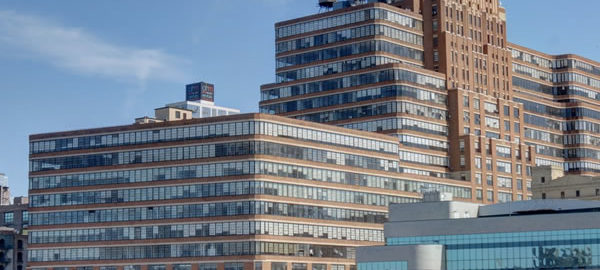
![IMG_4069_70_71Adjust [3/11/2012 12:47:39 PM] IMG_4069_70_71Adjust [3/11/2012 12:47:39 PM]](https://www.newyorkitecture.com/wp-content/gallery/west-chelsea/img_4069_70_71adjust.jpg)
![IMG_4144_5_6Adjust [3/11/2012 1:10:27 PM] IMG_4144_5_6Adjust [3/11/2012 1:10:27 PM]](https://www.newyorkitecture.com/wp-content/gallery/west-chelsea/img_4144_5_6adjust.jpg)
![IMG_4138_39_40Adjust [3/11/2012 1:09:00 PM] IMG_4138_39_40Adjust [3/11/2012 1:09:00 PM]](https://www.newyorkitecture.com/wp-content/gallery/west-chelsea/img_4138_39_40adjust.jpg)
![IMG_4126_7_8Adjust [3/11/2012 1:06:43 PM] IMG_4126_7_8Adjust [3/11/2012 1:06:43 PM]](https://www.newyorkitecture.com/wp-content/gallery/west-chelsea/img_4126_7_8adjust.jpg)
![IMG_4108_09_10Adjust [3/11/2012 1:01:29 PM] IMG_4108_09_10Adjust [3/11/2012 1:01:29 PM]](https://www.newyorkitecture.com/wp-content/gallery/west-chelsea/img_4108_09_10adjust.jpg)
![IMG_4105_6_7Adjust [3/11/2012 1:00:48 PM] IMG_4105_6_7Adjust [3/11/2012 1:00:48 PM]](https://www.newyorkitecture.com/wp-content/gallery/west-chelsea/img_4105_6_7adjust.jpg)
![IMG_4096_7_8Adjust [3/11/2012 12:56:50 PM] IMG_4096_7_8Adjust [3/11/2012 12:56:50 PM]](https://www.newyorkitecture.com/wp-content/gallery/west-chelsea/img_4096_7_8adjust.jpg)
![IMG_4090_1_2Adjust [3/11/2012 12:54:47 PM] IMG_4090_1_2Adjust [3/11/2012 12:54:47 PM]](https://www.newyorkitecture.com/wp-content/gallery/west-chelsea/img_4090_1_2adjust.jpg)
![IMG_4075_6_7Adjust [3/11/2012 12:49:32 PM] IMG_4075_6_7Adjust [3/11/2012 12:49:32 PM]](https://www.newyorkitecture.com/wp-content/gallery/west-chelsea/img_4075_6_7adjust.jpg)
![IMG_4156_7_8Adjust [3/11/2012 1:13:58 PM] IMG_4156_7_8Adjust [3/11/2012 1:13:58 PM]](https://www.newyorkitecture.com/wp-content/gallery/west-chelsea/img_4156_7_8adjust.jpg)
![IMG_4063_4_5Adjust [3/11/2012 12:45:33 PM] IMG_4063_4_5Adjust [3/11/2012 12:45:33 PM]](https://www.newyorkitecture.com/wp-content/gallery/west-chelsea/img_4063_4_5adjust.jpg)
![IMG_4054_5_6Adjust [3/11/2012 12:42:24 PM] IMG_4054_5_6Adjust [3/11/2012 12:42:24 PM]](https://www.newyorkitecture.com/wp-content/gallery/west-chelsea/img_4054_5_6adjust.jpg)
![IMG_4042_3_4Adjust [3/11/2012 12:40:21 PM] IMG_4042_3_4Adjust [3/11/2012 12:40:21 PM]](https://www.newyorkitecture.com/wp-content/gallery/west-chelsea/img_4042_3_4adjust.jpg)
![IMG_4036_7_8Adjust [3/11/2012 12:38:37 PM] IMG_4036_7_8Adjust [3/11/2012 12:38:37 PM]](https://www.newyorkitecture.com/wp-content/gallery/west-chelsea/img_4036_7_8adjust.jpg)
![IMG_4018_19_20Adjust [3/11/2012 12:36:15 PM] IMG_4018_19_20Adjust [3/11/2012 12:36:15 PM]](https://www.newyorkitecture.com/wp-content/gallery/west-chelsea/img_4018_19_20adjust.jpg)
![IMG_4009_10_11Adjust [3/11/2012 12:30:10 PM] IMG_4009_10_11Adjust [3/11/2012 12:30:10 PM]](https://www.newyorkitecture.com/wp-content/gallery/west-chelsea/img_4009_10_11adjust.jpg)
![IMG_3994_5_6Adjust [3/11/2012 12:24:13 PM] IMG_3994_5_6Adjust [3/11/2012 12:24:13 PM]](https://www.newyorkitecture.com/wp-content/gallery/west-chelsea/img_3994_5_6adjust.jpg)
![IMG_3982_3_4Adjust [3/11/2012 12:16:42 PM] IMG_3982_3_4Adjust [3/11/2012 12:16:42 PM]](https://www.newyorkitecture.com/wp-content/gallery/west-chelsea/img_3982_3_4adjust.jpg)
![IMG_4168_69_70Adjust [3/11/2012 1:18:50 PM] IMG_4168_69_70Adjust [3/11/2012 1:18:50 PM]](https://www.newyorkitecture.com/wp-content/gallery/west-chelsea/img_4168_69_70adjust.jpg)
![IMG_4183_4_5Adjust [3/11/2012 1:21:32 PM] IMG_4183_4_5Adjust [3/11/2012 1:21:32 PM]](https://www.newyorkitecture.com/wp-content/gallery/west-chelsea/img_4183_4_5adjust.jpg)
![IMG_4198_199_200Adjust [3/11/2012 1:26:13 PM] IMG_4198_199_200Adjust [3/11/2012 1:26:13 PM]](https://www.newyorkitecture.com/wp-content/gallery/west-chelsea/img_4198_199_200adjust.jpg)
![IMG_4207_8_9Adjust [3/11/2012 1:28:16 PM] IMG_4207_8_9Adjust [3/11/2012 1:28:16 PM]](https://www.newyorkitecture.com/wp-content/gallery/west-chelsea/img_4207_8_9adjust.jpg)
![IMG_4222_3_4Adjust [3/11/2012 1:30:39 PM] IMG_4222_3_4Adjust [3/11/2012 1:30:39 PM]](https://www.newyorkitecture.com/wp-content/gallery/west-chelsea/img_4222_3_4adjust.jpg)
![IMG_4234_5_6Adjust [3/11/2012 1:35:42 PM] IMG_4234_5_6Adjust [3/11/2012 1:35:42 PM]](https://www.newyorkitecture.com/wp-content/gallery/west-chelsea/img_4234_5_6adjust.jpg)
![IMG_4243_4_5Adjust [3/11/2012 1:38:43 PM] IMG_4243_4_5Adjust [3/11/2012 1:38:43 PM]](https://www.newyorkitecture.com/wp-content/gallery/west-chelsea/img_4243_4_5adjust.jpg)
![IMG_4255_6_7Adjust [3/11/2012 1:41:34 PM] IMG_4255_6_7Adjust [3/11/2012 1:41:34 PM]](https://www.newyorkitecture.com/wp-content/gallery/west-chelsea/img_4255_6_7adjust.jpg)
![IMG_4282_3_4Adjust [3/11/2012 1:56:40 PM] IMG_4282_3_4Adjust [3/11/2012 1:56:40 PM]](https://www.newyorkitecture.com/wp-content/gallery/west-chelsea/img_4282_3_4adjust.jpg)
![IMG_4300_1_2Adjust [3/11/2012 2:01:23 PM] IMG_4300_1_2Adjust [3/11/2012 2:01:23 PM]](https://www.newyorkitecture.com/wp-content/gallery/west-chelsea/img_4300_1_2adjust.jpg)
![IMG_4303_4_5Adjust [3/11/2012 2:02:40 PM] IMG_4303_4_5Adjust [3/11/2012 2:02:40 PM]](https://www.newyorkitecture.com/wp-content/gallery/west-chelsea/img_4303_4_5adjust.jpg)
![IMG_4309_10_11Adjust [3/11/2012 2:04:46 PM] IMG_4309_10_11Adjust [3/11/2012 2:04:46 PM]](https://www.newyorkitecture.com/wp-content/gallery/west-chelsea/img_4309_10_11adjust.jpg)
![IMG_4438_39_40Adjust [3/11/2012 2:46:01 PM] IMG_4438_39_40Adjust [3/11/2012 2:46:01 PM]](https://www.newyorkitecture.com/wp-content/gallery/west-chelsea/img_4438_39_40adjust.jpg)
![IMG_4450_1_2Adjust [3/11/2012 2:47:32 PM] IMG_4450_1_2Adjust [3/11/2012 2:47:32 PM]](https://www.newyorkitecture.com/wp-content/gallery/west-chelsea/img_4450_1_2adjust.jpg)
![IMG_4507_8_9Adjust [3/11/2012 3:05:08 PM] IMG_4507_8_9Adjust [3/11/2012 3:05:08 PM]](https://www.newyorkitecture.com/wp-content/gallery/west-chelsea/img_4507_8_9adjust.jpg)
![IMG_2470_1_2Adjust [3/6/2012 12:47:42 PM] IMG_2470_1_2Adjust [3/6/2012 12:47:42 PM]](https://www.newyorkitecture.com/wp-content/gallery/west-chelsea/img_2470_1_2adjust.jpg)
![IMG_2638_39_40Adjust [3/6/2012 1:54:13 PM] IMG_2638_39_40Adjust [3/6/2012 1:54:13 PM]](https://www.newyorkitecture.com/wp-content/gallery/west-chelsea/img_2638_39_40adjust.jpg)
![IMG_2629_30_31Adjust [3/6/2012 1:49:08 PM] IMG_2629_30_31Adjust [3/6/2012 1:49:08 PM]](https://www.newyorkitecture.com/wp-content/gallery/west-chelsea/img_2629_30_31adjust.jpg)
![IMG_2506_7_8Adjust [3/6/2012 1:02:08 PM] IMG_2506_7_8Adjust [3/6/2012 1:02:08 PM]](https://www.newyorkitecture.com/wp-content/gallery/west-chelsea/img_2506_7_8adjust.jpg)
![IMG_2491_2_3Adjust [3/6/2012 12:54:09 PM] IMG_2491_2_3Adjust [3/6/2012 12:54:09 PM]](https://www.newyorkitecture.com/wp-content/gallery/west-chelsea/img_2491_2_3adjust.jpg)
![IMG_2488_89_90Adjust [3/6/2012 12:52:19 PM] IMG_2488_89_90Adjust [3/6/2012 12:52:19 PM]](https://www.newyorkitecture.com/wp-content/gallery/west-chelsea/img_2488_89_90adjust.jpg)
![IMG_2479_80_81Adjust [3/6/2012 12:50:01 PM] IMG_2479_80_81Adjust [3/6/2012 12:50:01 PM]](https://www.newyorkitecture.com/wp-content/gallery/west-chelsea/img_2479_80_81adjust.jpg)
![IMG_2476_7_8Adjust [3/6/2012 12:49:22 PM] IMG_2476_7_8Adjust [3/6/2012 12:49:22 PM]](https://www.newyorkitecture.com/wp-content/gallery/west-chelsea/img_2476_7_8adjust.jpg)
![IMG_2473_4_5Adjust [3/6/2012 12:48:20 PM] IMG_2473_4_5Adjust [3/6/2012 12:48:20 PM]](https://www.newyorkitecture.com/wp-content/gallery/west-chelsea/img_2473_4_5adjust.jpg)
![IMG_2641_2_3Adjust [3/6/2012 1:54:39 PM] IMG_2641_2_3Adjust [3/6/2012 1:54:39 PM]](https://www.newyorkitecture.com/wp-content/gallery/west-chelsea/img_2641_2_3adjust.jpg)
![IMG_2458_59_60Adjust [3/6/2012 12:41:55 PM] IMG_2458_59_60Adjust [3/6/2012 12:41:55 PM]](https://www.newyorkitecture.com/wp-content/gallery/west-chelsea/img_2458_59_60adjust.jpg)
![IMG_2452_3_4Adjust [3/6/2012 12:40:20 PM] IMG_2452_3_4Adjust [3/6/2012 12:40:20 PM]](https://www.newyorkitecture.com/wp-content/gallery/west-chelsea/img_2452_3_4adjust.jpg)
![IMG_2449_50_51Adjust [3/6/2012 12:38:17 PM] IMG_2449_50_51Adjust [3/6/2012 12:38:17 PM]](https://www.newyorkitecture.com/wp-content/gallery/west-chelsea/img_2449_50_51adjust.jpg)
![IMG_2431_2_3Adjust [3/6/2012 12:34:47 PM] IMG_2431_2_3Adjust [3/6/2012 12:34:47 PM]](https://www.newyorkitecture.com/wp-content/gallery/west-chelsea/img_2431_2_3adjust.jpg)
![IMG_2425_6_7Adjust [3/6/2012 12:32:21 PM] IMG_2425_6_7Adjust [3/6/2012 12:32:21 PM]](https://www.newyorkitecture.com/wp-content/gallery/west-chelsea/img_2425_6_7adjust.jpg)
![IMG_2410_1_2Adjust [3/6/2012 12:28:24 PM] IMG_2410_1_2Adjust [3/6/2012 12:28:24 PM]](https://www.newyorkitecture.com/wp-content/gallery/west-chelsea/img_2410_1_2adjust.jpg)
![IMG_2404_5_6Adjust [3/6/2012 12:26:21 PM] IMG_2404_5_6Adjust [3/6/2012 12:26:21 PM]](https://www.newyorkitecture.com/wp-content/gallery/west-chelsea/img_2404_5_6adjust.jpg)
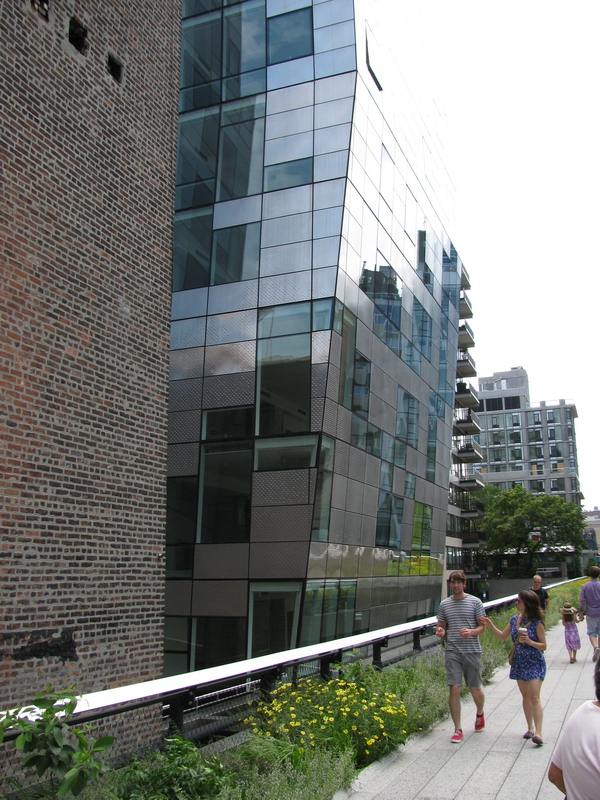
![IMG_2650_1_2Adjust [3/6/2012 1:58:10 PM] IMG_2650_1_2Adjust [3/6/2012 1:58:10 PM]](https://www.newyorkitecture.com/wp-content/gallery/west-chelsea/img_2650_1_2adjust.jpg)
![IMG_2659_60_61Adjust [3/6/2012 2:00:11 PM] IMG_2659_60_61Adjust [3/6/2012 2:00:11 PM]](https://www.newyorkitecture.com/wp-content/gallery/west-chelsea/img_2659_60_61adjust.jpg)
![IMG_2713_4_5Adjust [3/6/2012 2:23:25 PM] IMG_2713_4_5Adjust [3/6/2012 2:23:25 PM]](https://www.newyorkitecture.com/wp-content/gallery/west-chelsea/img_2713_4_5adjust.jpg)
![IMG_2740_1_2Adjust [3/6/2012 2:35:22 PM] IMG_2740_1_2Adjust [3/6/2012 2:35:22 PM]](https://www.newyorkitecture.com/wp-content/gallery/west-chelsea/img_2740_1_2adjust.jpg)
![IMG_3904_5_6Adjust [3/11/2012 11:40:07 AM] IMG_3904_5_6Adjust [3/11/2012 11:40:07 AM]](https://www.newyorkitecture.com/wp-content/gallery/west-chelsea/img_3904_5_6adjust.jpg)
![IMG_3910_1_2Adjust [3/11/2012 11:43:07 AM] IMG_3910_1_2Adjust [3/11/2012 11:43:07 AM]](https://www.newyorkitecture.com/wp-content/gallery/west-chelsea/img_3910_1_2adjust.jpg)
![IMG_3916_7_8Adjust [3/11/2012 11:45:44 AM] IMG_3916_7_8Adjust [3/11/2012 11:45:44 AM]](https://www.newyorkitecture.com/wp-content/gallery/west-chelsea/img_3916_7_8adjust.jpg)
![IMG_3922_3_4Adjust [3/11/2012 11:46:42 AM] IMG_3922_3_4Adjust [3/11/2012 11:46:42 AM]](https://www.newyorkitecture.com/wp-content/gallery/west-chelsea/img_3922_3_4adjust.jpg)
![IMG_3928_29_30Adjust [3/11/2012 11:50:21 AM] IMG_3928_29_30Adjust [3/11/2012 11:50:21 AM]](https://www.newyorkitecture.com/wp-content/gallery/west-chelsea/img_3928_29_30adjust.jpg)
![IMG_3934_5_6Adjust [3/11/2012 11:51:26 AM] IMG_3934_5_6Adjust [3/11/2012 11:51:26 AM]](https://www.newyorkitecture.com/wp-content/gallery/west-chelsea/img_3934_5_6adjust.jpg)
![IMG_3937_8_9Adjust [3/11/2012 11:56:09 AM] IMG_3937_8_9Adjust [3/11/2012 11:56:09 AM]](https://www.newyorkitecture.com/wp-content/gallery/west-chelsea/img_3937_8_9adjust.jpg)
![IMG_3943_4_5Adjust [3/11/2012 12:02:44 PM] IMG_3943_4_5Adjust [3/11/2012 12:02:44 PM]](https://www.newyorkitecture.com/wp-content/gallery/west-chelsea/img_3943_4_5adjust.jpg)
![IMG_3946_7_8Adjust [3/11/2012 12:04:26 PM] IMG_3946_7_8Adjust [3/11/2012 12:04:26 PM]](https://www.newyorkitecture.com/wp-content/gallery/west-chelsea/img_3946_7_8adjust.jpg)
![IMG_3955_6_7Adjust [3/11/2012 12:06:45 PM] IMG_3955_6_7Adjust [3/11/2012 12:06:45 PM]](https://www.newyorkitecture.com/wp-content/gallery/west-chelsea/img_3955_6_7adjust.jpg)
![IMG_3958_59_60Adjust [3/11/2012 12:11:02 PM] IMG_3958_59_60Adjust [3/11/2012 12:11:02 PM]](https://www.newyorkitecture.com/wp-content/gallery/west-chelsea/img_3958_59_60adjust.jpg)
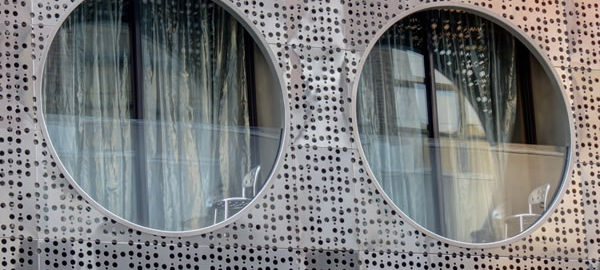
![IMG_4183_4_5Adjust [3/11/2012 1:21:32 PM] IMG_4183_4_5Adjust [3/11/2012 1:21:32 PM]](https://www.newyorkitecture.com/wp-content/gallery/windows-the-eyes-of-the-building/img_4183_4_5adjust.jpg)
![P9150261 [9/15/2011 12:10:19 PM] P9150261 [9/15/2011 12:10:19 PM]](https://www.newyorkitecture.com/wp-content/gallery/windows-the-eyes-of-the-building/p9150261.jpg)
![P9150260 [9/15/2011 12:09:53 PM] P9150260 [9/15/2011 12:09:53 PM]](https://www.newyorkitecture.com/wp-content/gallery/windows-the-eyes-of-the-building/p9150260.jpg)
![P9150244 [9/15/2011 11:44:41 AM] P9150244 [9/15/2011 11:44:41 AM]](https://www.newyorkitecture.com/wp-content/gallery/windows-the-eyes-of-the-building/p9150244.jpg)
![P9150223 [9/15/2011 11:21:02 AM] P9150223 [9/15/2011 11:21:02 AM]](https://www.newyorkitecture.com/wp-content/gallery/windows-the-eyes-of-the-building/p9150223.jpg)
![P9150213 [9/15/2011 11:04:57 AM] P9150213 [9/15/2011 11:04:57 AM]](https://www.newyorkitecture.com/wp-content/gallery/windows-the-eyes-of-the-building/p9150213.jpg)
![IMG_09673_4_5Adjust [2/18/2012 12:43:35 PM] IMG_09673_4_5Adjust [2/18/2012 12:43:35 PM]](https://www.newyorkitecture.com/wp-content/gallery/windows-the-eyes-of-the-building/img_09673_4_5adjust.jpg)
![IMG_09613_4_5Adjust [2/18/2012 12:26:08 PM] IMG_09613_4_5Adjust [2/18/2012 12:26:08 PM]](https://www.newyorkitecture.com/wp-content/gallery/windows-the-eyes-of-the-building/img_09613_4_5adjust.jpg)
![IMG_6736_7_8Adjust [2/4/2012 11:52:53 AM] IMG_6736_7_8Adjust [2/4/2012 11:52:53 AM]](https://www.newyorkitecture.com/wp-content/gallery/windows-the-eyes-of-the-building/img_6736_7_8adjust.jpg)
![IMG_6430_1_2Adjust [2/1/2012 3:21:49 PM] IMG_6430_1_2Adjust [2/1/2012 3:21:49 PM]](https://www.newyorkitecture.com/wp-content/gallery/windows-the-eyes-of-the-building/img_6430_1_2adjust.jpg)
![IMG_5599_600_601Adjust [1/1/2012 2:47:59 PM] IMG_5599_600_601Adjust [1/1/2012 2:47:59 PM]](https://www.newyorkitecture.com/wp-content/gallery/windows-the-eyes-of-the-building/img_5599_600_601adjust.jpg)
![IMG_5482_3_4Adjust_2 [3/14/2012 11:51:53 AM] IMG_5482_3_4Adjust_2 [3/14/2012 11:51:53 AM]](https://www.newyorkitecture.com/wp-content/gallery/windows-the-eyes-of-the-building/img_5482_3_4adjust_2.jpg)
![IMG_5482_3_4Adjust [1/1/2012 2:06:04 PM] IMG_5482_3_4Adjust [1/1/2012 2:06:04 PM]](https://www.newyorkitecture.com/wp-content/gallery/windows-the-eyes-of-the-building/img_5482_3_4adjust.jpg)
![IMG_4990_1_2Adjust [3/12/2012 10:47:37 AM] IMG_4990_1_2Adjust [3/12/2012 10:47:37 AM]](https://www.newyorkitecture.com/wp-content/gallery/windows-the-eyes-of-the-building/img_4990_1_2adjust.jpg)
![IMG_4932 [10/28/2011 12:50:50 PM] IMG_4932 [10/28/2011 12:50:50 PM]](https://www.newyorkitecture.com/wp-content/gallery/windows-the-eyes-of-the-building/img_4932.jpg)
![IMG_0211_2_3Adjust [2/19/2012 12:09:53 PM] IMG_0211_2_3Adjust [2/19/2012 12:09:53 PM]](https://www.newyorkitecture.com/wp-content/gallery/windows-the-eyes-of-the-building/img_0211_2_3adjust.jpg)
![IMG_3859_60_61Adjust [3/9/2012 2:05:36 PM] IMG_3859_60_61Adjust [3/9/2012 2:05:36 PM]](https://www.newyorkitecture.com/wp-content/gallery/windows-the-eyes-of-the-building/img_3859_60_61adjust.jpg)
![IMG_3748_49_50Adjust [3/9/2012 1:13:43 PM] IMG_3748_49_50Adjust [3/9/2012 1:13:43 PM]](https://www.newyorkitecture.com/wp-content/gallery/windows-the-eyes-of-the-building/img_3748_49_50adjust.jpg)
![IMG_3283_4_5Adjust [3/9/2012 10:44:34 AM] IMG_3283_4_5Adjust [3/9/2012 10:44:34 AM]](https://www.newyorkitecture.com/wp-content/gallery/windows-the-eyes-of-the-building/img_3283_4_5adjust.jpg)
![IMG_2682 [10/10/2011 10:54:38 AM] IMG_2682 [10/10/2011 10:54:38 AM]](https://www.newyorkitecture.com/wp-content/gallery/windows-the-eyes-of-the-building/img_2682.jpg)
![IMG_2678 [10/10/2011 10:47:59 AM] IMG_2678 [10/10/2011 10:47:59 AM]](https://www.newyorkitecture.com/wp-content/gallery/windows-the-eyes-of-the-building/img_2678.jpg)
![IMG_2643 [10/10/2011 10:35:02 AM] IMG_2643 [10/10/2011 10:35:02 AM]](https://www.newyorkitecture.com/wp-content/gallery/windows-the-eyes-of-the-building/img_2643.jpg)
![IMG_2449_50_51Adjust [3/6/2012 12:38:17 PM] IMG_2449_50_51Adjust [3/6/2012 12:38:17 PM]](https://www.newyorkitecture.com/wp-content/gallery/windows-the-eyes-of-the-building/img_2449_50_51adjust.jpg)
![IMG_2431_2_3Adjust [3/6/2012 12:34:47 PM] IMG_2431_2_3Adjust [3/6/2012 12:34:47 PM]](https://www.newyorkitecture.com/wp-content/gallery/windows-the-eyes-of-the-building/img_2431_2_3adjust.jpg)
![IMG_0934_5_6Adjust [2/20/2012 1:21:37 PM] IMG_0934_5_6Adjust [2/20/2012 1:21:37 PM]](https://www.newyorkitecture.com/wp-content/gallery/windows-the-eyes-of-the-building/img_0934_5_6adjust.jpg)
![IMG_0847_8_9Adjust [2/20/2012 12:48:32 PM] IMG_0847_8_9Adjust [2/20/2012 12:48:32 PM]](https://www.newyorkitecture.com/wp-content/gallery/windows-the-eyes-of-the-building/img_0847_8_9adjust.jpg)
![IMG_0583_4_5Adjust [2/19/2012 2:45:29 PM] IMG_0583_4_5Adjust [2/19/2012 2:45:29 PM]](https://www.newyorkitecture.com/wp-content/gallery/windows-the-eyes-of-the-building/img_0583_4_5adjust.jpg)
![IMG_0505 [9/30/2011 9:46:42 AM] IMG_0505 [9/30/2011 9:46:42 AM]](https://www.newyorkitecture.com/wp-content/gallery/windows-the-eyes-of-the-building/img_0505.jpg)
![IMG_0430_1_2Adjust [2/19/2012 1:56:02 PM] IMG_0430_1_2Adjust [2/19/2012 1:56:02 PM]](https://www.newyorkitecture.com/wp-content/gallery/windows-the-eyes-of-the-building/img_0430_1_2adjust.jpg)
![IMG_0409_10_11Adjust [2/19/2012 1:49:32 PM] IMG_0409_10_11Adjust [2/19/2012 1:49:32 PM]](https://www.newyorkitecture.com/wp-content/gallery/windows-the-eyes-of-the-building/img_0409_10_11adjust.jpg)
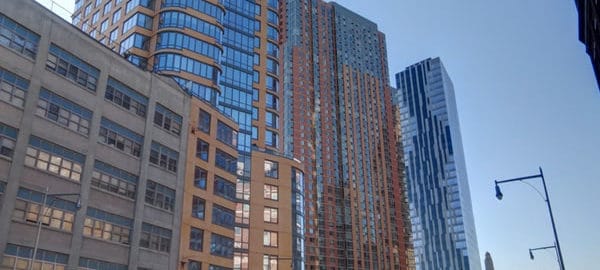
![C_IMG_7735_6_7Adjust [4/5/2012 7:31:27 AM] C_IMG_7735_6_7Adjust [4/5/2012 7:31:27 AM]](https://www.newyorkitecture.com/wp-content/gallery/three-sisters-downtown-brooklyn/c_img_7735_6_7adjust.jpg)
![IMG_8137_8_9Adjust [4/5/2012 10:27:32 AM] IMG_8137_8_9Adjust [4/5/2012 10:27:32 AM]](https://www.newyorkitecture.com/wp-content/gallery/three-sisters-downtown-brooklyn/img_8137_8_9adjust.jpg)
![IMG_7888_89_90Adjust [4/5/2012 8:47:47 AM] IMG_7888_89_90Adjust [4/5/2012 8:47:47 AM]](https://www.newyorkitecture.com/wp-content/gallery/three-sisters-downtown-brooklyn/img_7888_89_90adjust.jpg)
![IMG_7693_4_5Adjust [4/5/2012 7:25:17 AM] IMG_7693_4_5Adjust [4/5/2012 7:25:17 AM]](https://www.newyorkitecture.com/wp-content/gallery/three-sisters-downtown-brooklyn/img_7693_4_5adjust.jpg)
![IMG_7642_3_4Adjust [4/5/2012 7:11:07 AM] IMG_7642_3_4Adjust [4/5/2012 7:11:07 AM]](https://www.newyorkitecture.com/wp-content/gallery/three-sisters-downtown-brooklyn/img_7642_3_4adjust.jpg)
![D_IMG_7654_5_6Adjust [4/5/2012 7:13:21 AM] D_IMG_7654_5_6Adjust [4/5/2012 7:13:21 AM]](https://www.newyorkitecture.com/wp-content/gallery/three-sisters-downtown-brooklyn/d_img_7654_5_6adjust.jpg)
![D_IMG_6937_8_9Adjust [4/4/2012 9:12:45 AM] D_IMG_6937_8_9Adjust [4/4/2012 9:12:45 AM]](https://www.newyorkitecture.com/wp-content/gallery/three-sisters-downtown-brooklyn/d_img_6937_8_9adjust.jpg)
![C_IMG_7777_8_9Adjust [4/5/2012 7:46:51 AM] C_IMG_7777_8_9Adjust [4/5/2012 7:46:51 AM]](https://www.newyorkitecture.com/wp-content/gallery/three-sisters-downtown-brooklyn/c_img_7777_8_9adjust.jpg)
![C_IMG_7744_5_6Adjust [4/5/2012 7:35:41 AM] C_IMG_7744_5_6Adjust [4/5/2012 7:35:41 AM]](https://www.newyorkitecture.com/wp-content/gallery/three-sisters-downtown-brooklyn/c_img_7744_5_6adjust.jpg)
![C_IMG_7741_2_3Adjust [4/5/2012 7:34:28 AM] C_IMG_7741_2_3Adjust [4/5/2012 7:34:28 AM]](https://www.newyorkitecture.com/wp-content/gallery/three-sisters-downtown-brooklyn/c_img_7741_2_3adjust.jpg)
![A_IMG_7750_1_2Adjust [4/5/2012 7:40:41 AM] A_IMG_7750_1_2Adjust [4/5/2012 7:40:41 AM]](https://www.newyorkitecture.com/wp-content/gallery/three-sisters-downtown-brooklyn/a_img_7750_1_2adjust.jpg)
![C_IMG_6880_1_2Adjust [4/4/2012 9:04:57 AM] C_IMG_6880_1_2Adjust [4/4/2012 9:04:57 AM]](https://www.newyorkitecture.com/wp-content/gallery/three-sisters-downtown-brooklyn/c_img_6880_1_2adjust.jpg)
![B_IMG_8362_3_4Adjust [4/6/2012 9:27:57 AM] B_IMG_8362_3_4Adjust [4/6/2012 9:27:57 AM]](https://www.newyorkitecture.com/wp-content/gallery/three-sisters-downtown-brooklyn/b_img_8362_3_4adjust.jpg)
![B_IMG_8359_60_61Adjust [4/6/2012 9:27:24 AM] B_IMG_8359_60_61Adjust [4/6/2012 9:27:24 AM]](https://www.newyorkitecture.com/wp-content/gallery/three-sisters-downtown-brooklyn/b_img_8359_60_61adjust.jpg)
![B_IMG_7669_70_71Adjust [4/5/2012 7:17:29 AM] B_IMG_7669_70_71Adjust [4/5/2012 7:17:29 AM]](https://www.newyorkitecture.com/wp-content/gallery/three-sisters-downtown-brooklyn/b_img_7669_70_71adjust.jpg)
![B_IMG_7411_2_3Adjust [4/4/2012 12:04:00 PM] B_IMG_7411_2_3Adjust [4/4/2012 12:04:00 PM]](https://www.newyorkitecture.com/wp-content/gallery/three-sisters-downtown-brooklyn/b_img_7411_2_3adjust.jpg)
![B_IMG_6961_2_3Adjust [4/4/2012 9:19:19 AM] B_IMG_6961_2_3Adjust [4/4/2012 9:19:19 AM]](https://www.newyorkitecture.com/wp-content/gallery/three-sisters-downtown-brooklyn/b_img_6961_2_3adjust.jpg)
![B_IMG_6868_69_70Adjust [4/4/2012 9:02:21 AM] B_IMG_6868_69_70Adjust [4/4/2012 9:02:21 AM]](https://www.newyorkitecture.com/wp-content/gallery/three-sisters-downtown-brooklyn/b_img_6868_69_70adjust.jpg)
![AA_IMG_6820_1_2Adjust [4/4/2012 8:49:05 AM] AA_IMG_6820_1_2Adjust [4/4/2012 8:49:05 AM]](https://www.newyorkitecture.com/wp-content/gallery/three-sisters-downtown-brooklyn/aa_img_6820_1_2adjust.jpg)
![A_IMG_7765_6_7Adjust [4/5/2012 7:44:42 AM] A_IMG_7765_6_7Adjust [4/5/2012 7:44:42 AM]](https://www.newyorkitecture.com/wp-content/gallery/three-sisters-downtown-brooklyn/a_img_7765_6_7adjust.jpg)
![C_IMG_6880_1_2Adjust [4/4/2012 9:04:57 AM]](https://www.newyorkitecture.com/wp-content/flagallery/three-sisters/thumbs/thumbs_c_img_6880_1_2adjust.jpg)
![D_IMG_6937_8_9Adjust [4/4/2012 9:12:45 AM]](https://www.newyorkitecture.com/wp-content/flagallery/three-sisters/thumbs/thumbs_d_img_6937_8_9adjust.jpg)
![B_IMG_6868_69_70Adjust [4/4/2012 9:02:21 AM]](https://www.newyorkitecture.com/wp-content/flagallery/three-sisters/thumbs/thumbs_b_img_6868_69_70adjust.jpg)
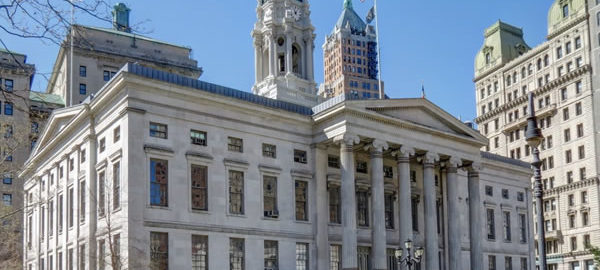
![[Downtown Brooklyn] IMG_6283_4_5Adjust [4/3/2012 9:29:11 AM] [Downtown Brooklyn] IMG_6283_4_5Adjust [4/3/2012 9:29:11 AM]](https://www.newyorkitecture.com/wp-content/gallery/downtown-brooklyn-civic-center/a01_6283_4_5adjust.jpg)
![[Downtown Brooklyn] IMG_6310_1_2Adjust [4/3/2012 9:37:52 AM] [Downtown Brooklyn] IMG_6310_1_2Adjust [4/3/2012 9:37:52 AM]](https://www.newyorkitecture.com/wp-content/gallery/downtown-brooklyn-civic-center/a02_6310_1_2adjust.jpg)
![[Downtown Brooklyn] IMG_6316_7_8Adjust [4/3/2012 9:39:26 AM] [Downtown Brooklyn] IMG_6316_7_8Adjust [4/3/2012 9:39:26 AM]](https://www.newyorkitecture.com/wp-content/gallery/downtown-brooklyn-civic-center/a03_6316_7_8adjust.jpg)
![[Downtown Brooklyn] IMG_6328_29_30Adjust [4/3/2012 9:46:04 AM] [Downtown Brooklyn] IMG_6328_29_30Adjust [4/3/2012 9:46:04 AM]](https://www.newyorkitecture.com/wp-content/gallery/downtown-brooklyn-civic-center/a04_6328_29_30adjust.jpg)
![[Downtown Brooklyn] IMG_6334_5_6Adjust [4/3/2012 9:48:01 AM] [Downtown Brooklyn] IMG_6334_5_6Adjust [4/3/2012 9:48:01 AM]](https://www.newyorkitecture.com/wp-content/gallery/downtown-brooklyn-civic-center/a05_6334_5_6adjust.jpg)
![[Downtown Brooklyn] IMG_6343_4_5Adjust [4/3/2012 9:51:30 AM] [Downtown Brooklyn] IMG_6343_4_5Adjust [4/3/2012 9:51:30 AM]](https://www.newyorkitecture.com/wp-content/gallery/downtown-brooklyn-civic-center/a06_6343_4_5adjust.jpg)
![[Downtown Brooklyn] IMG_6358_59_60Adjust [4/3/2012 9:56:29 AM] [Downtown Brooklyn] IMG_6358_59_60Adjust [4/3/2012 9:56:29 AM]](https://www.newyorkitecture.com/wp-content/gallery/downtown-brooklyn-civic-center/a07_6358_59_60adjust.jpg)
![[Downtown Brooklyn] IMG_6364_5_6Adjust [4/3/2012 9:58:11 AM] [Downtown Brooklyn] IMG_6364_5_6Adjust [4/3/2012 9:58:11 AM]](https://www.newyorkitecture.com/wp-content/gallery/downtown-brooklyn-civic-center/a08_6364_5_6adjust.jpg)
![[Downtown Brooklyn] IMG_6367_8_9Adjust [4/3/2012 10:00:09 AM] [Downtown Brooklyn] IMG_6367_8_9Adjust [4/3/2012 10:00:09 AM]](https://www.newyorkitecture.com/wp-content/gallery/downtown-brooklyn-civic-center/a09_6367_8_9adjust.jpg)
![[Downtown Brooklyn] IMG_6352_3_4Adjust [4/3/2012 9:53:11 AM] [Downtown Brooklyn] IMG_6352_3_4Adjust [4/3/2012 9:53:11 AM]](https://www.newyorkitecture.com/wp-content/gallery/downtown-brooklyn-civic-center/a10_6352_3_4adjust.jpg)
![[Downtown Brooklyn] IMG_8020_1_2Adjust [4/5/2012 9:30:19 AM] [Downtown Brooklyn] IMG_8020_1_2Adjust [4/5/2012 9:30:19 AM]](https://www.newyorkitecture.com/wp-content/gallery/downtown-brooklyn-civic-center/a11_8020_1_2adjust.jpg)
![[Downtown Brooklyn] IMG_8026_7_8Adjust [4/5/2012 9:33:46 AM] [Downtown Brooklyn] IMG_8026_7_8Adjust [4/5/2012 9:33:46 AM]](https://www.newyorkitecture.com/wp-content/gallery/downtown-brooklyn-civic-center/a12_8026_7_8adjust.jpg)
![[Downtown Brooklyn] IMG_8038_39_40Adjust [4/5/2012 9:35:34 AM] [Downtown Brooklyn] IMG_8038_39_40Adjust [4/5/2012 9:35:34 AM]](https://www.newyorkitecture.com/wp-content/gallery/downtown-brooklyn-civic-center/a13_8038_39_40adjust.jpg)
![[Downtown Brooklyn] IMG_6373_4_5Adjust [4/3/2012 10:05:29 AM] [Downtown Brooklyn] IMG_6373_4_5Adjust [4/3/2012 10:05:29 AM]](https://www.newyorkitecture.com/wp-content/gallery/downtown-brooklyn-civic-center/a14_6373_4_5adjust.jpg)
![[Downtown Brooklyn] IMG_6379_80_81Adjust [4/3/2012 10:06:17 AM] [Downtown Brooklyn] IMG_6379_80_81Adjust [4/3/2012 10:06:17 AM]](https://www.newyorkitecture.com/wp-content/gallery/downtown-brooklyn-civic-center/a15_6379_80_81adjust.jpg)
![[Downtown Brooklyn] IMG_8059_60_61Adjust [4/5/2012 9:38:25 AM] [Downtown Brooklyn] IMG_8059_60_61Adjust [4/5/2012 9:38:25 AM]](https://www.newyorkitecture.com/wp-content/gallery/downtown-brooklyn-civic-center/a16_8059_60_61adjust.jpg)
![[Downtown Brooklyn] IMG_8098_099_100Adjust [4/5/2012 9:50:02 AM] [Downtown Brooklyn] IMG_8098_099_100Adjust [4/5/2012 9:50:02 AM]](https://www.newyorkitecture.com/wp-content/gallery/downtown-brooklyn-civic-center/a17_8098_099_100adjust.jpg)
![[Downtown Brooklyn] IMG_6298_299_300Adjust [4/3/2012 9:33:17 AM] [Downtown Brooklyn] IMG_6298_299_300Adjust [4/3/2012 9:33:17 AM]](https://www.newyorkitecture.com/wp-content/gallery/downtown-brooklyn-civic-center/b_6298_299_300adjust.jpg)
![[Downtown Brooklyn] IMG_7984_5_6Adjust [4/5/2012 9:20:04 AM] [Downtown Brooklyn] IMG_7984_5_6Adjust [4/5/2012 9:20:04 AM]](https://www.newyorkitecture.com/wp-content/gallery/downtown-brooklyn-civic-center/b_7984_5_6adjust.jpg)
![[Downtown Brooklyn] IMG_7990_1_2Adjust [4/5/2012 9:21:34 AM] [Downtown Brooklyn] IMG_7990_1_2Adjust [4/5/2012 9:21:34 AM]](https://www.newyorkitecture.com/wp-content/gallery/downtown-brooklyn-civic-center/b_7990_1_2adjust.jpg)
![[Downtown Brooklyn] IMG_6382_3_4Adjust [4/3/2012 10:07:33 AM] [Downtown Brooklyn] IMG_6382_3_4Adjust [4/3/2012 10:07:33 AM]](https://www.newyorkitecture.com/wp-content/gallery/downtown-brooklyn-civic-center/c01_6382_3_4adjust.jpg)
![[Downtown Brooklyn] IMG_8104_5_6Adjust [4/5/2012 9:54:56 AM] [Downtown Brooklyn] IMG_8104_5_6Adjust [4/5/2012 9:54:56 AM]](https://www.newyorkitecture.com/wp-content/gallery/downtown-brooklyn-civic-center/c01a_8104_5_6adjust.jpg)
![[Downtown Brooklyn] IMG_6421_2_3Adjust [4/3/2012 10:19:08 AM] [Downtown Brooklyn] IMG_6421_2_3Adjust [4/3/2012 10:19:08 AM]](https://www.newyorkitecture.com/wp-content/gallery/downtown-brooklyn-civic-center/c02_6421_2_3adjust.jpg)
![[Downtown Brooklyn] IMG_8008_09_10Adjust [4/5/2012 9:27:58 AM] [Downtown Brooklyn] IMG_8008_09_10Adjust [4/5/2012 9:27:58 AM]](https://www.newyorkitecture.com/wp-content/gallery/downtown-brooklyn-civic-center/c02a_8008_09_10adjust.jpg)
![[Downtown Brooklyn] IMG_8080_1_2Adjust [4/5/2012 9:46:39 AM] [Downtown Brooklyn] IMG_8080_1_2Adjust [4/5/2012 9:46:39 AM]](https://www.newyorkitecture.com/wp-content/gallery/downtown-brooklyn-civic-center/c03_8080_1_2adjust.jpg)
![[Downtown Brooklyn] IMG_7549_50_51Adjust [4/4/2012 1:04:49 PM] [Downtown Brooklyn] IMG_7549_50_51Adjust [4/4/2012 1:04:49 PM]](https://www.newyorkitecture.com/wp-content/gallery/downtown-brooklyn-civic-center/c04_7549_50_51adjust.jpg)
![[Downtown Brooklyn] IMG_6553_4_5Adjust [4/3/2012 11:03:52 AM] [Downtown Brooklyn] IMG_6553_4_5Adjust [4/3/2012 11:03:52 AM]](https://www.newyorkitecture.com/wp-content/gallery/downtown-brooklyn-civic-center/c05_6553_4_5adjust.jpg)
![[Downtown Brooklyn] IMG_7558_59_60Adjust [4/4/2012 1:08:51 PM] [Downtown Brooklyn] IMG_7558_59_60Adjust [4/4/2012 1:08:51 PM]](https://www.newyorkitecture.com/wp-content/gallery/downtown-brooklyn-civic-center/c06_7558_59_60adjust.jpg)
![[Downtown Brooklyn] IMG_6595_6_7Adjust [4/3/2012 11:18:35 AM] [Downtown Brooklyn] IMG_6595_6_7Adjust [4/3/2012 11:18:35 AM]](https://www.newyorkitecture.com/wp-content/gallery/downtown-brooklyn-civic-center/c07_6595_6_7adjust.jpg)
![[Downtown Brooklyn] IMG_6622_3_4Adjust [4/3/2012 11:25:33 AM] [Downtown Brooklyn] IMG_6622_3_4Adjust [4/3/2012 11:25:33 AM]](https://www.newyorkitecture.com/wp-content/gallery/downtown-brooklyn-civic-center/c08_6622_3_4adjust.jpg)
![[Downtown Brooklyn] IMG_6436_7_8Adjust [4/3/2012 10:27:12 AM] [Downtown Brooklyn] IMG_6436_7_8Adjust [4/3/2012 10:27:12 AM]](https://www.newyorkitecture.com/wp-content/gallery/downtown-brooklyn-civic-center/d01_6436_7_8adjust.jpg)
![[Downtown Brooklyn] IMG_6448_49_50Adjust [4/3/2012 10:32:31 AM] [Downtown Brooklyn] IMG_6448_49_50Adjust [4/3/2012 10:32:31 AM]](https://www.newyorkitecture.com/wp-content/gallery/downtown-brooklyn-civic-center/d02_6448_49_50adjust.jpg)
![[Downtown Brooklyn] IMG_6460_1_2Adjust [4/3/2012 10:34:50 AM] [Downtown Brooklyn] IMG_6460_1_2Adjust [4/3/2012 10:34:50 AM]](https://www.newyorkitecture.com/wp-content/gallery/downtown-brooklyn-civic-center/d03_6460_1_2adjust.jpg)
![[Downtown Brooklyn] IMG_6475_6_7Adjust [4/3/2012 10:37:48 AM] [Downtown Brooklyn] IMG_6475_6_7Adjust [4/3/2012 10:37:48 AM]](https://www.newyorkitecture.com/wp-content/gallery/downtown-brooklyn-civic-center/d04_6475_6_7adjust.jpg)
![[Downtown Brooklyn] IMG_6487_8_9Adjust [4/3/2012 10:39:15 AM] [Downtown Brooklyn] IMG_6487_8_9Adjust [4/3/2012 10:39:15 AM]](https://www.newyorkitecture.com/wp-content/gallery/downtown-brooklyn-civic-center/d05_6487_8_9adjust.jpg)
![[Downtown Brooklyn] IMG_6493_4_5Adjust [4/3/2012 10:43:32 AM] [Downtown Brooklyn] IMG_6493_4_5Adjust [4/3/2012 10:43:32 AM]](https://www.newyorkitecture.com/wp-content/gallery/downtown-brooklyn-civic-center/d06_6493_4_5adjust.jpg)
![[Downtown Brooklyn] IMG_6502_3_4Adjust [4/3/2012 10:45:38 AM] [Downtown Brooklyn] IMG_6502_3_4Adjust [4/3/2012 10:45:38 AM]](https://www.newyorkitecture.com/wp-content/gallery/downtown-brooklyn-civic-center/d07_6502_3_4adjust.jpg)
![[Downtown Brooklyn] IMG_6514_5_6Adjust [4/3/2012 10:48:49 AM] [Downtown Brooklyn] IMG_6514_5_6Adjust [4/3/2012 10:48:49 AM]](https://www.newyorkitecture.com/wp-content/gallery/downtown-brooklyn-civic-center/d08_6514_5_6adjust.jpg)
![[Downtown Brooklyn] IMG_6559_60_61Adjust [4/3/2012 11:06:14 AM] [Downtown Brooklyn] IMG_6559_60_61Adjust [4/3/2012 11:06:14 AM]](https://www.newyorkitecture.com/wp-content/gallery/downtown-brooklyn-civic-center/d09_6559_60_61adjust.jpg)
![[Downtown Brooklyn] IMG_6517_8_9Adjust [4/3/2012 10:51:06 AM] [Downtown Brooklyn] IMG_6517_8_9Adjust [4/3/2012 10:51:06 AM]](https://www.newyorkitecture.com/wp-content/gallery/downtown-brooklyn-civic-center/d10_6517_8_9adjust.jpg)
![[Downtown Brooklyn] IMG_6538_39_40Adjust [4/3/2012 11:01:31 AM] [Downtown Brooklyn] IMG_6538_39_40Adjust [4/3/2012 11:01:31 AM]](https://www.newyorkitecture.com/wp-content/gallery/downtown-brooklyn-civic-center/d11_6538_39_40adjust.jpg)
![[Downtown Brooklyn] IMG_8182_3_4Adjust [4/6/2012 8:22:48 AM] [Downtown Brooklyn] IMG_8182_3_4Adjust [4/6/2012 8:22:48 AM]](https://www.newyorkitecture.com/wp-content/gallery/downtown-brooklyn-civic-center/d11_8182_3_4adjust.jpg)
![[Downtown Brooklyn] IMG_6577_8_9Adjust [4/3/2012 11:15:11 AM] [Downtown Brooklyn] IMG_6577_8_9Adjust [4/3/2012 11:15:11 AM]](https://www.newyorkitecture.com/wp-content/gallery/downtown-brooklyn-civic-center/d12_6577_8_9adjust.jpg)
![[Downtown Brooklyn] IMG_6586_7_8Adjust [4/3/2012 11:16:19 AM] [Downtown Brooklyn] IMG_6586_7_8Adjust [4/3/2012 11:16:19 AM]](https://www.newyorkitecture.com/wp-content/gallery/downtown-brooklyn-civic-center/d13_6586_7_8adjust.jpg)
![[Downtown Brooklyn] IMG_7612_3_4Adjust [4/4/2012 1:41:50 PM] [Downtown Brooklyn] IMG_7612_3_4Adjust [4/4/2012 1:41:50 PM]](https://www.newyorkitecture.com/wp-content/gallery/downtown-brooklyn-civic-center/d14_7612_3_4adjust.jpg)
![[Downtown Brooklyn] IMG_6607_8_9Adjust [4/3/2012 11:20:28 AM] [Downtown Brooklyn] IMG_6607_8_9Adjust [4/3/2012 11:20:28 AM]](https://www.newyorkitecture.com/wp-content/gallery/downtown-brooklyn-civic-center/d15_6607_8_9adjust.jpg)
![[Downtown Brooklyn] IMG_6628_29_30Adjust [4/3/2012 11:30:17 AM] [Downtown Brooklyn] IMG_6628_29_30Adjust [4/3/2012 11:30:17 AM]](https://www.newyorkitecture.com/wp-content/gallery/downtown-brooklyn-civic-center/d16_6628_29_30adjust.jpg)
![[Downtown Brooklyn] IMG_6634_5_6Adjust [4/3/2012 11:32:15 AM] [Downtown Brooklyn] IMG_6634_5_6Adjust [4/3/2012 11:32:15 AM]](https://www.newyorkitecture.com/wp-content/gallery/downtown-brooklyn-civic-center/d17_6634_5_6adjust.jpg)
![[Downtown Brooklyn] IMG_6649_50_51Adjust [4/3/2012 11:36:02 AM] [Downtown Brooklyn] IMG_6649_50_51Adjust [4/3/2012 11:36:02 AM]](https://www.newyorkitecture.com/wp-content/gallery/downtown-brooklyn-civic-center/d18_6649_50_51adjust.jpg)
![[Downtown Brooklyn] IMG_6655_6_7Adjust [4/3/2012 11:37:39 AM] [Downtown Brooklyn] IMG_6655_6_7Adjust [4/3/2012 11:37:39 AM]](https://www.newyorkitecture.com/wp-content/gallery/downtown-brooklyn-civic-center/d19_6655_6_7adjust.jpg)
![[Downtown Brooklyn] IMG_6781_2_3Adjust [4/3/2012 12:27:12 PM] [Downtown Brooklyn] IMG_6781_2_3Adjust [4/3/2012 12:27:12 PM]](https://www.newyorkitecture.com/wp-content/gallery/downtown-brooklyn-civic-center/d20_6781_2_3adjust.jpg)
![[Downtown Brooklyn] IMG_6787_8_9Adjust [4/3/2012 12:28:54 PM] [Downtown Brooklyn] IMG_6787_8_9Adjust [4/3/2012 12:28:54 PM]](https://www.newyorkitecture.com/wp-content/gallery/downtown-brooklyn-civic-center/d21_6787_8_9adjust.jpg)
![[Downtown Brooklyn] IMG_7633_4_5Adjust [4/4/2012 1:57:50 PM] [Downtown Brooklyn] IMG_7633_4_5Adjust [4/4/2012 1:57:50 PM]](https://www.newyorkitecture.com/wp-content/gallery/downtown-brooklyn-civic-center/d22_7633_4_5adjust.jpg)
![[Downtown Brooklyn] IMG_6790_1_2Adjust [4/3/2012 12:29:50 PM] [Downtown Brooklyn] IMG_6790_1_2Adjust [4/3/2012 12:29:50 PM]](https://www.newyorkitecture.com/wp-content/gallery/downtown-brooklyn-civic-center/d23_6790_1_2adjust.jpg)
![[Downtown Brooklyn] IMG_6916_7_8Adjust [4/4/2012 9:08:42 AM] [Downtown Brooklyn] IMG_6916_7_8Adjust [4/4/2012 9:08:42 AM]](https://www.newyorkitecture.com/wp-content/gallery/downtown-brooklyn-civic-center/e01_6916_7_8adjust.jpg)
![[Downtown Brooklyn] IMG_6952_3_4Adjust [4/4/2012 9:15:02 AM] [Downtown Brooklyn] IMG_6952_3_4Adjust [4/4/2012 9:15:02 AM]](https://www.newyorkitecture.com/wp-content/gallery/downtown-brooklyn-civic-center/e02_6952_3_4adjust.jpg)
![[Downtown Brooklyn] IMG_6853_4_5Adjust [4/4/2012 8:56:59 AM] [Downtown Brooklyn] IMG_6853_4_5Adjust [4/4/2012 8:56:59 AM]](https://www.newyorkitecture.com/wp-content/gallery/downtown-brooklyn-civic-center/e03_6853_4_5adjust.jpg)
![[Downtown Brooklyn] IMG_6928_29_30Adjust [4/4/2012 9:10:36 AM] [Downtown Brooklyn] IMG_6928_29_30Adjust [4/4/2012 9:10:36 AM]](https://www.newyorkitecture.com/wp-content/gallery/downtown-brooklyn-civic-center/e04_6928_29_30adjust.jpg)
![[Downtown Brooklyn] IMG_8341_2_3Adjust [4/6/2012 9:20:57 AM] [Downtown Brooklyn] IMG_8341_2_3Adjust [4/6/2012 9:20:57 AM]](https://www.newyorkitecture.com/wp-content/gallery/downtown-brooklyn-civic-center/e05_8341_2_3adjust.jpg)
![[Downtown Brooklyn] IMG_8353_4_5Adjust [4/6/2012 9:21:56 AM] [Downtown Brooklyn] IMG_8353_4_5Adjust [4/6/2012 9:21:56 AM]](https://www.newyorkitecture.com/wp-content/gallery/downtown-brooklyn-civic-center/e06_8353_4_5adjust.jpg)
![[Downtown Brooklyn] IMG_8374_5_6Adjust [4/6/2012 9:34:00 AM] [Downtown Brooklyn] IMG_8374_5_6Adjust [4/6/2012 9:34:00 AM]](https://www.newyorkitecture.com/wp-content/gallery/downtown-brooklyn-civic-center/e07_8374_5_6adjust.jpg)
![[Downtown Brooklyn] IMG_8383_4_5Adjust [4/6/2012 9:37:28 AM] [Downtown Brooklyn] IMG_8383_4_5Adjust [4/6/2012 9:37:28 AM]](https://www.newyorkitecture.com/wp-content/gallery/downtown-brooklyn-civic-center/e08_8383_4_5adjust.jpg)
![[Downtown Brooklyn] IMG_6976_7_8Adjust [4/4/2012 9:24:30 AM] [Downtown Brooklyn] IMG_6976_7_8Adjust [4/4/2012 9:24:30 AM]](https://www.newyorkitecture.com/wp-content/gallery/downtown-brooklyn-civic-center/e09_6976_7_8adjust.jpg)
![[Downtown Brooklyn] IMG_6988_89_90Adjust [4/4/2012 9:27:36 AM] [Downtown Brooklyn] IMG_6988_89_90Adjust [4/4/2012 9:27:36 AM]](https://www.newyorkitecture.com/wp-content/gallery/downtown-brooklyn-civic-center/e10_6988_89_90adjust.jpg)
![[Downtown Brooklyn] IMG_6970_1_2Adjust [4/4/2012 9:22:17 AM] [Downtown Brooklyn] IMG_6970_1_2Adjust [4/4/2012 9:22:17 AM]](https://www.newyorkitecture.com/wp-content/gallery/downtown-brooklyn-civic-center/e11_6970_1_2adjust.jpg)
![[Downtown Brooklyn] IMG_6973_4_5Adjust [4/4/2012 9:22:58 AM] [Downtown Brooklyn] IMG_6973_4_5Adjust [4/4/2012 9:22:58 AM]](https://www.newyorkitecture.com/wp-content/gallery/downtown-brooklyn-civic-center/e12_6973_4_5adjust.jpg)
![[Downtown Brooklyn] IMG_7513_4_5Adjust [4/4/2012 12:38:47 PM] [Downtown Brooklyn] IMG_7513_4_5Adjust [4/4/2012 12:38:47 PM]](https://www.newyorkitecture.com/wp-content/gallery/downtown-brooklyn-civic-center/e13_7513_4_5adjust.jpg)
![[Downtown Brooklyn] IMG_7879_80_81Adjust [4/5/2012 8:44:14 AM] [Downtown Brooklyn] IMG_7879_80_81Adjust [4/5/2012 8:44:14 AM]](https://www.newyorkitecture.com/wp-content/gallery/downtown-brooklyn-civic-center/e14_7879_80_81adjust.jpg)
![[Downtown Brooklyn] IMG_8284_5_6Adjust [4/6/2012 8:58:38 AM] [Downtown Brooklyn] IMG_8284_5_6Adjust [4/6/2012 8:58:38 AM]](https://www.newyorkitecture.com/wp-content/gallery/downtown-brooklyn-civic-center/e15_8284_5_6adjust.jpg)
![[Downtown Brooklyn] IMG_8242_3_4Adjust [4/6/2012 8:44:45 AM] [Downtown Brooklyn] IMG_8242_3_4Adjust [4/6/2012 8:44:45 AM]](https://www.newyorkitecture.com/wp-content/gallery/downtown-brooklyn-civic-center/e16_8242_3_4adjust.jpg)
![[Downtown Brooklyn] IMG_8251_2_3Adjust [4/6/2012 8:47:35 AM] [Downtown Brooklyn] IMG_8251_2_3Adjust [4/6/2012 8:47:35 AM]](https://www.newyorkitecture.com/wp-content/gallery/downtown-brooklyn-civic-center/e17_8251_2_3adjust.jpg)
![[Downtown Brooklyn] IMG_8269_70_71Adjust [4/6/2012 8:50:01 AM] [Downtown Brooklyn] IMG_8269_70_71Adjust [4/6/2012 8:50:01 AM]](https://www.newyorkitecture.com/wp-content/gallery/downtown-brooklyn-civic-center/e18_8269_70_71adjust.jpg)
![[Downtown Brooklyn] IMG_8272_3_4Adjust [4/6/2012 8:55:49 AM] [Downtown Brooklyn] IMG_8272_3_4Adjust [4/6/2012 8:55:49 AM]](https://www.newyorkitecture.com/wp-content/gallery/downtown-brooklyn-civic-center/e19_8272_3_4adjust.jpg)
![[Downtown Brooklyn] IMG_8299_300_301Adjust [4/6/2012 9:00:24 AM] [Downtown Brooklyn] IMG_8299_300_301Adjust [4/6/2012 9:00:24 AM]](https://www.newyorkitecture.com/wp-content/gallery/downtown-brooklyn-civic-center/e20_8299_300_301adjust.jpg)
![[Downtown Brooklyn] IMG_7405_6_7Adjust [4/4/2012 12:02:25 PM] [Downtown Brooklyn] IMG_7405_6_7Adjust [4/4/2012 12:02:25 PM]](https://www.newyorkitecture.com/wp-content/gallery/downtown-brooklyn-civic-center/f01_7405_6_7adjust.jpg)
![[Downtown Brooklyn] IMG_7015_6_7Adjust [4/4/2012 9:39:16 AM] [Downtown Brooklyn] IMG_7015_6_7Adjust [4/4/2012 9:39:16 AM]](https://www.newyorkitecture.com/wp-content/gallery/downtown-brooklyn-civic-center/f02_7015_6_7adjust.jpg)
![[Downtown Brooklyn] IMG_7018_19_20Adjust [4/4/2012 9:41:31 AM] [Downtown Brooklyn] IMG_7018_19_20Adjust [4/4/2012 9:41:31 AM]](https://www.newyorkitecture.com/wp-content/gallery/downtown-brooklyn-civic-center/f03_7018_19_20adjust.jpg)
![[Downtown Brooklyn] IMG_7027_8_9Adjust [4/4/2012 9:42:22 AM] [Downtown Brooklyn] IMG_7027_8_9Adjust [4/4/2012 9:42:22 AM]](https://www.newyorkitecture.com/wp-content/gallery/downtown-brooklyn-civic-center/f04_7027_8_9adjust.jpg)
![[Downtown Brooklyn] IMG_7036_7_8Adjust [4/4/2012 9:45:21 AM] [Downtown Brooklyn] IMG_7036_7_8Adjust [4/4/2012 9:45:21 AM]](https://www.newyorkitecture.com/wp-content/gallery/downtown-brooklyn-civic-center/f05_7036_7_8adjust.jpg)
![[Downtown Brooklyn] IMG_7381_2_3Adjust [4/4/2012 11:56:33 AM] [Downtown Brooklyn] IMG_7381_2_3Adjust [4/4/2012 11:56:33 AM]](https://www.newyorkitecture.com/wp-content/gallery/downtown-brooklyn-civic-center/f06_7381_2_3adjust.jpg)
![[Downtown Brooklyn] IMG_7420_1_2Adjust [4/4/2012 12:05:22 PM] [Downtown Brooklyn] IMG_7420_1_2Adjust [4/4/2012 12:05:22 PM]](https://www.newyorkitecture.com/wp-content/gallery/downtown-brooklyn-civic-center/f07_7420_1_2adjust.jpg)
![[Downtown Brooklyn] IMG_7285_6_7Adjust [4/4/2012 11:29:34 AM] [Downtown Brooklyn] IMG_7285_6_7Adjust [4/4/2012 11:29:34 AM]](https://www.newyorkitecture.com/wp-content/gallery/downtown-brooklyn-civic-center/f08_7285_6_7adjust.jpg)
![[Downtown Brooklyn] IMG_7357_8_9Adjust [4/4/2012 11:50:57 AM] [Downtown Brooklyn] IMG_7357_8_9Adjust [4/4/2012 11:50:57 AM]](https://www.newyorkitecture.com/wp-content/gallery/downtown-brooklyn-civic-center/f09_7357_8_9adjust.jpg)
![[Downtown Brooklyn] IMG_7366_7_8Adjust [4/4/2012 11:51:59 AM] [Downtown Brooklyn] IMG_7366_7_8Adjust [4/4/2012 11:51:59 AM]](https://www.newyorkitecture.com/wp-content/gallery/downtown-brooklyn-civic-center/f10_7366_7_8adjust.jpg)
![[Downtown Brooklyn] IMG_7429_30_31Adjust [4/4/2012 12:09:30 PM] [Downtown Brooklyn] IMG_7429_30_31Adjust [4/4/2012 12:09:30 PM]](https://www.newyorkitecture.com/wp-content/gallery/downtown-brooklyn-civic-center/f11_7429_30_31adjust.jpg)
![[Downtown Brooklyn] IMG_7456_7_8Adjust [4/4/2012 12:20:03 PM] [Downtown Brooklyn] IMG_7456_7_8Adjust [4/4/2012 12:20:03 PM]](https://www.newyorkitecture.com/wp-content/gallery/downtown-brooklyn-civic-center/f12_7456_7_8adjust.jpg)
![[Downtown Brooklyn] IMG_7462_3_4Adjust [4/4/2012 12:21:12 PM] [Downtown Brooklyn] IMG_7462_3_4Adjust [4/4/2012 12:21:12 PM]](https://www.newyorkitecture.com/wp-content/gallery/downtown-brooklyn-civic-center/f13_7462_3_4adjust.jpg)
![[Downtown Brooklyn] IMG_7435_6_7Adjust [4/4/2012 12:11:18 PM] [Downtown Brooklyn] IMG_7435_6_7Adjust [4/4/2012 12:11:18 PM]](https://www.newyorkitecture.com/wp-content/gallery/downtown-brooklyn-civic-center/f14_7435_6_7adjust.jpg)
![[Downtown Brooklyn] IMG_7441_2_3Adjust [4/4/2012 12:12:30 PM] [Downtown Brooklyn] IMG_7441_2_3Adjust [4/4/2012 12:12:30 PM]](https://www.newyorkitecture.com/wp-content/gallery/downtown-brooklyn-civic-center/f15_7441_2_3adjust.jpg)
![[Downtown Brooklyn] IMG_7447_8_9Adjust [4/4/2012 12:13:58 PM] [Downtown Brooklyn] IMG_7447_8_9Adjust [4/4/2012 12:13:58 PM]](https://www.newyorkitecture.com/wp-content/gallery/downtown-brooklyn-civic-center/f16_7447_8_9adjust.jpg)
![[Downtown Brooklyn] IMG_7006_7_8Adjust [4/4/2012 9:35:01 AM] [Downtown Brooklyn] IMG_7006_7_8Adjust [4/4/2012 9:35:01 AM]](https://www.newyorkitecture.com/wp-content/gallery/downtown-brooklyn-civic-center/g01_7006_7_8adjust.jpg)
![[Downtown Brooklyn] IMG_7324_5_6Adjust [4/4/2012 11:38:55 AM] [Downtown Brooklyn] IMG_7324_5_6Adjust [4/4/2012 11:38:55 AM]](https://www.newyorkitecture.com/wp-content/gallery/downtown-brooklyn-civic-center/g01_7324_5_6adjust.jpg)
![[Downtown Brooklyn] IMG_7330_1_2Adjust [4/4/2012 11:43:04 AM] [Downtown Brooklyn] IMG_7330_1_2Adjust [4/4/2012 11:43:04 AM]](https://www.newyorkitecture.com/wp-content/gallery/downtown-brooklyn-civic-center/g02_7330_1_2adjust.jpg)
![[Downtown Brooklyn] IMG_7339_40_41Adjust [4/4/2012 11:44:35 AM] [Downtown Brooklyn] IMG_7339_40_41Adjust [4/4/2012 11:44:35 AM]](https://www.newyorkitecture.com/wp-content/gallery/downtown-brooklyn-civic-center/g03_7339_40_41adjust.jpg)
![[Downtown Brooklyn] IMG_7471_2_3Adjust [4/4/2012 12:27:18 PM] [Downtown Brooklyn] IMG_7471_2_3Adjust [4/4/2012 12:27:18 PM]](https://www.newyorkitecture.com/wp-content/gallery/downtown-brooklyn-civic-center/g04_7471_2_3adjust.jpg)
![[Downtown Brooklyn] IMG_7489_90_91Adjust [4/4/2012 12:32:37 PM] [Downtown Brooklyn] IMG_7489_90_91Adjust [4/4/2012 12:32:37 PM]](https://www.newyorkitecture.com/wp-content/gallery/downtown-brooklyn-civic-center/g05_7489_90_91adjust.jpg)
![[Downtown Brooklyn] IMG_7525_6_7Adjust [4/4/2012 12:42:13 PM] [Downtown Brooklyn] IMG_7525_6_7Adjust [4/4/2012 12:42:13 PM]](https://www.newyorkitecture.com/wp-content/gallery/downtown-brooklyn-civic-center/g06_7525_6_7adjust.jpg)
![[Downtown Brooklyn] IMG_7483_4_5Adjust [4/4/2012 12:31:39 PM] [Downtown Brooklyn] IMG_7483_4_5Adjust [4/4/2012 12:31:39 PM]](https://www.newyorkitecture.com/wp-content/gallery/downtown-brooklyn-civic-center/g07_7483_4_5adjust.jpg)
![[Downtown Brooklyn] IMG_7498_499_500Adjust [4/4/2012 12:34:26 PM] [Downtown Brooklyn] IMG_7498_499_500Adjust [4/4/2012 12:34:26 PM]](https://www.newyorkitecture.com/wp-content/gallery/downtown-brooklyn-civic-center/g08_7498_499_500adjust.jpg)
![[Downtown Brooklyn] IMG_7504_5_6Adjust [4/4/2012 12:35:51 PM] [Downtown Brooklyn] IMG_7504_5_6Adjust [4/4/2012 12:35:51 PM]](https://www.newyorkitecture.com/wp-content/gallery/downtown-brooklyn-civic-center/g09_7504_5_6adjust.jpg)
![[Downtown Brooklyn] IMG_7534_5_6Adjust [4/4/2012 12:49:39 PM] [Downtown Brooklyn] IMG_7534_5_6Adjust [4/4/2012 12:49:39 PM]](https://www.newyorkitecture.com/wp-content/gallery/downtown-brooklyn-civic-center/g10_7534_5_6adjust.jpg)
![[Downtown Brooklyn] IMG_7561_2_3Adjust [4/4/2012 1:13:35 PM] [Downtown Brooklyn] IMG_7561_2_3Adjust [4/4/2012 1:13:35 PM]](https://www.newyorkitecture.com/wp-content/gallery/downtown-brooklyn-civic-center/g11_7561_2_3adjust.jpg)
![[Downtown Brooklyn] IMG_7579_80_81Adjust [4/4/2012 1:20:34 PM] [Downtown Brooklyn] IMG_7579_80_81Adjust [4/4/2012 1:20:34 PM]](https://www.newyorkitecture.com/wp-content/gallery/downtown-brooklyn-civic-center/g12_7579_80_81adjust.jpg)
![[Downtown Brooklyn] IMG_7585_6_7Adjust [4/4/2012 1:25:45 PM] [Downtown Brooklyn] IMG_7585_6_7Adjust [4/4/2012 1:25:45 PM]](https://www.newyorkitecture.com/wp-content/gallery/downtown-brooklyn-civic-center/g13_7585_6_7adjust.jpg)
![[Downtown Brooklyn] IMG_7603_4_5Adjust [4/4/2012 1:30:46 PM] [Downtown Brooklyn] IMG_7603_4_5Adjust [4/4/2012 1:30:46 PM]](https://www.newyorkitecture.com/wp-content/gallery/downtown-brooklyn-civic-center/g14_7603_4_5adjust.jpg)
![[Downtown Brooklyn] IMG_7621_2_3Adjust [4/4/2012 1:45:50 PM] [Downtown Brooklyn] IMG_7621_2_3Adjust [4/4/2012 1:45:50 PM]](https://www.newyorkitecture.com/wp-content/gallery/downtown-brooklyn-civic-center/g15_7621_2_3adjust.jpg)
![[Downtown Brooklyn] IMG_7819_20_21Adjust [4/5/2012 8:07:31 AM] [Downtown Brooklyn] IMG_7819_20_21Adjust [4/5/2012 8:07:31 AM]](https://www.newyorkitecture.com/wp-content/gallery/downtown-brooklyn-civic-center/g16_7819_20_21adjust.jpg)
![[Downtown Brooklyn] IMG_7843_4_5Adjust [4/5/2012 8:13:27 AM] [Downtown Brooklyn] IMG_7843_4_5Adjust [4/5/2012 8:13:27 AM]](https://www.newyorkitecture.com/wp-content/gallery/downtown-brooklyn-civic-center/g17_7843_4_5adjust.jpg)
![[Downtown Brooklyn] IMG_7816_7_8Adjust [4/5/2012 8:03:39 AM] [Downtown Brooklyn] IMG_7816_7_8Adjust [4/5/2012 8:03:39 AM]](https://www.newyorkitecture.com/wp-content/gallery/downtown-brooklyn-civic-center/g18_7816_7_8adjust.jpg)
![[Downtown Brooklyn] IMG_7789_90_91Adjust [4/5/2012 7:50:10 AM] [Downtown Brooklyn] IMG_7789_90_91Adjust [4/5/2012 7:50:10 AM]](https://www.newyorkitecture.com/wp-content/gallery/downtown-brooklyn-civic-center/g19_7789_90_91adjust.jpg)
![[Downtown Brooklyn] IMG_7804_5_6Adjust [4/5/2012 7:57:57 AM] [Downtown Brooklyn] IMG_7804_5_6Adjust [4/5/2012 7:57:57 AM]](https://www.newyorkitecture.com/wp-content/gallery/downtown-brooklyn-civic-center/g20_7804_5_6adjust.jpg)
![[Downtown Brooklyn] IMG_7801_2_3Adjust [4/5/2012 7:56:13 AM] [Downtown Brooklyn] IMG_7801_2_3Adjust [4/5/2012 7:56:13 AM]](https://www.newyorkitecture.com/wp-content/gallery/downtown-brooklyn-civic-center/g21_7801_2_3adjust.jpg)
![[Downtown Brooklyn] IMG_7888_89_90Adjust [4/5/2012 8:47:47 AM] [Downtown Brooklyn] IMG_7888_89_90Adjust [4/5/2012 8:47:47 AM]](https://www.newyorkitecture.com/wp-content/gallery/downtown-brooklyn-civic-center/g22_7888_89_90adjust.jpg)
![[Downtown Brooklyn] IMG_8332_3_4Adjust [4/6/2012 9:11:01 AM] [Downtown Brooklyn] IMG_8332_3_4Adjust [4/6/2012 9:11:01 AM]](https://www.newyorkitecture.com/wp-content/gallery/downtown-brooklyn-civic-center/g22_8332_3_4adjust.jpg)
![[Downtown Brooklyn] IMG_7912_3_4Adjust [4/5/2012 8:54:19 AM] [Downtown Brooklyn] IMG_7912_3_4Adjust [4/5/2012 8:54:19 AM]](https://www.newyorkitecture.com/wp-content/gallery/downtown-brooklyn-civic-center/g23_7912_3_4adjust.jpg)
![[Downtown Brooklyn] IMG_7852_3_4Adjust [4/5/2012 8:18:38 AM] [Downtown Brooklyn] IMG_7852_3_4Adjust [4/5/2012 8:18:38 AM]](https://www.newyorkitecture.com/wp-content/gallery/downtown-brooklyn-civic-center/g24_7852_3_4adjust.jpg)
![[Downtown Brooklyn] IMG_8314_5_6Adjust [4/6/2012 9:07:14 AM] [Downtown Brooklyn] IMG_8314_5_6Adjust [4/6/2012 9:07:14 AM]](https://www.newyorkitecture.com/wp-content/gallery/downtown-brooklyn-civic-center/g24_8314_5_6adjust.jpg)
![[Downtown Brooklyn] IMG_8308_09_10Adjust [4/6/2012 9:04:20 AM] [Downtown Brooklyn] IMG_8308_09_10Adjust [4/6/2012 9:04:20 AM]](https://www.newyorkitecture.com/wp-content/gallery/downtown-brooklyn-civic-center/g24b_8308_09_10adjust.jpg)
![[Downtown Brooklyn] IMG_7858_59_60Adjust [4/5/2012 8:21:01 AM] [Downtown Brooklyn] IMG_7858_59_60Adjust [4/5/2012 8:21:01 AM]](https://www.newyorkitecture.com/wp-content/gallery/downtown-brooklyn-civic-center/g25_7858_59_60adjust.jpg)
![[Downtown Brooklyn] IMG_7861_2_3Adjust [4/5/2012 8:22:51 AM] [Downtown Brooklyn] IMG_7861_2_3Adjust [4/5/2012 8:22:51 AM]](https://www.newyorkitecture.com/wp-content/gallery/downtown-brooklyn-civic-center/g26_7861_2_3adjust.jpg)
![[Downtown Brooklyn] IMG_8206_7_8Adjust [4/6/2012 8:28:31 AM] [Downtown Brooklyn] IMG_8206_7_8Adjust [4/6/2012 8:28:31 AM]](https://www.newyorkitecture.com/wp-content/gallery/downtown-brooklyn-civic-center/g27_8206_7_8adjust.jpg)
![[Downtown Brooklyn] IMG_8215_6_7Adjust [4/6/2012 8:29:44 AM] [Downtown Brooklyn] IMG_8215_6_7Adjust [4/6/2012 8:29:44 AM]](https://www.newyorkitecture.com/wp-content/gallery/downtown-brooklyn-civic-center/g28_8215_6_7adjust.jpg)
![[Downtown Brooklyn] IMG_7867_8_9Adjust [4/5/2012 8:34:50 AM] [Downtown Brooklyn] IMG_7867_8_9Adjust [4/5/2012 8:34:50 AM]](https://www.newyorkitecture.com/wp-content/gallery/downtown-brooklyn-civic-center/g29_7867_8_9adjust.jpg)
![[Downtown Brooklyn] IMG_7939_40_41Adjust [4/5/2012 9:06:31 AM] [Downtown Brooklyn] IMG_7939_40_41Adjust [4/5/2012 9:06:31 AM]](https://www.newyorkitecture.com/wp-content/gallery/downtown-brooklyn-civic-center/g30_7939_40_41adjust.jpg)
![[Downtown Brooklyn] IMG_7966_7_8Adjust [4/5/2012 9:15:37 AM] [Downtown Brooklyn] IMG_7966_7_8Adjust [4/5/2012 9:15:37 AM]](https://www.newyorkitecture.com/wp-content/gallery/downtown-brooklyn-civic-center/g31_7966_7_8adjust.jpg)
![[Downtown Brooklyn] IMG_7930_1_2Adjust [4/5/2012 9:03:20 AM] [Downtown Brooklyn] IMG_7930_1_2Adjust [4/5/2012 9:03:20 AM]](https://www.newyorkitecture.com/wp-content/gallery/downtown-brooklyn-civic-center/g32_7930_1_2adjust.jpg)
![[Downtown Brooklyn] IMG_8236_7_8Adjust [4/6/2012 8:36:19 AM] [Downtown Brooklyn] IMG_8236_7_8Adjust [4/6/2012 8:36:19 AM]](https://www.newyorkitecture.com/wp-content/gallery/downtown-brooklyn-civic-center/g33_8236_7_8adjust.jpg)
![[Downtown Brooklyn] IMG_8389_90_91Adjust [4/6/2012 9:45:37 AM] [Downtown Brooklyn] IMG_8389_90_91Adjust [4/6/2012 9:45:37 AM]](https://www.newyorkitecture.com/wp-content/gallery/downtown-brooklyn-civic-center/g34_8389_90_91adjust.jpg)
![[Downtown Brooklyn] IMG_7183_4_5Adjust [4/4/2012 10:53:28 AM] [Downtown Brooklyn] IMG_7183_4_5Adjust [4/4/2012 10:53:28 AM]](https://www.newyorkitecture.com/wp-content/gallery/downtown-brooklyn-civic-center/g35_7183_4_5adjust.jpg)
![[Downtown Brooklyn] IMG_7045_6_7Adjust [4/4/2012 9:48:41 AM] [Downtown Brooklyn] IMG_7045_6_7Adjust [4/4/2012 9:48:41 AM]](https://www.newyorkitecture.com/wp-content/gallery/downtown-brooklyn-civic-center/l_7045_6_7adjust.jpg)
![[Downtown Brooklyn] IMG_7069_70_71Adjust [4/4/2012 10:11:21 AM] [Downtown Brooklyn] IMG_7069_70_71Adjust [4/4/2012 10:11:21 AM]](https://www.newyorkitecture.com/wp-content/gallery/downtown-brooklyn-civic-center/l_7069_70_71adjust.jpg)
![[Downtown Brooklyn] IMG_8161_2_3Adjust [4/5/2012 10:38:42 AM] [Downtown Brooklyn] IMG_8161_2_3Adjust [4/5/2012 10:38:42 AM]](https://www.newyorkitecture.com/wp-content/gallery/downtown-brooklyn-civic-center/l_8161_2_3adjust.jpg)
![[Downtown Brooklyn] IMG_6958_59_60Adjust [4/4/2012 9:17:28 AM] [Downtown Brooklyn] IMG_6958_59_60Adjust [4/4/2012 9:17:28 AM]](https://www.newyorkitecture.com/wp-content/gallery/downtown-brooklyn-civic-center/x_6958_59_60adjust.jpg)
![[Downtown Brooklyn] IMG_7726_7_8Adjust [4/5/2012 7:30:32 AM] [Downtown Brooklyn] IMG_7726_7_8Adjust [4/5/2012 7:30:32 AM]](https://www.newyorkitecture.com/wp-content/gallery/downtown-brooklyn-civic-center/x_7726_7_8adjust.jpg)
![[Downtown Brooklyn] IMG_7750_1_2Adjust [4/5/2012 7:40:41 AM] [Downtown Brooklyn] IMG_7750_1_2Adjust [4/5/2012 7:40:41 AM]](https://www.newyorkitecture.com/wp-content/gallery/downtown-brooklyn-civic-center/x_7750_1_2adjust.jpg)
![[Downtown Brooklyn] IMG_8368_69_70Adjust [4/6/2012 9:33:05 AM] [Downtown Brooklyn] IMG_8368_69_70Adjust [4/6/2012 9:33:05 AM]](https://www.newyorkitecture.com/wp-content/gallery/downtown-brooklyn-civic-center/x_8368_69_70adjust.jpg)
![[Downtown Brooklyn] IMG_6820_1_2Adjust [4/4/2012 8:49:05 AM] [Downtown Brooklyn] IMG_6820_1_2Adjust [4/4/2012 8:49:05 AM]](https://www.newyorkitecture.com/wp-content/gallery/downtown-brooklyn-civic-center/xx_6820_1_2adjust.jpg)
![[Downtown Brooklyn] IMG_6961_2_3Adjust [4/4/2012 9:19:19 AM] [Downtown Brooklyn] IMG_6961_2_3Adjust [4/4/2012 9:19:19 AM]](https://www.newyorkitecture.com/wp-content/gallery/downtown-brooklyn-civic-center/xx_6961_2_3adjust.jpg)
![[Downtown Brooklyn] IMG_7654_5_6Adjust [4/5/2012 7:13:21 AM] [Downtown Brooklyn] IMG_7654_5_6Adjust [4/5/2012 7:13:21 AM]](https://www.newyorkitecture.com/wp-content/gallery/downtown-brooklyn-civic-center/xy_7654_5_6adjust.jpg)
![[Downtown Brooklyn] IMG_6880_1_2Adjust [4/4/2012 9:04:57 AM] [Downtown Brooklyn] IMG_6880_1_2Adjust [4/4/2012 9:04:57 AM]](https://www.newyorkitecture.com/wp-content/gallery/downtown-brooklyn-civic-center/xz_6880_1_2adjust.jpg)
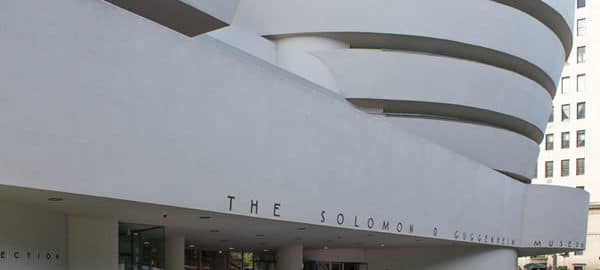
![[Frank Lloyd Wright] IMG_2084_resize [6/5/2012 9:53:12 AM] [Frank Lloyd Wright] IMG_2084_resize [6/5/2012 9:53:12 AM]](https://www.newyorkitecture.com/wp-content/gallery/the-wright-stuff/img_2084_resize.jpg)
![[Frank Lloyd Wright] IMG_2190_resize [6/6/2012 10:04:39 AM] [Frank Lloyd Wright] IMG_2190_resize [6/6/2012 10:04:39 AM]](https://www.newyorkitecture.com/wp-content/gallery/the-wright-stuff/img_2190_resize.jpg)
![[Frank Lloyd Wright] IMG_2189_resize [6/6/2012 10:04:22 AM] [Frank Lloyd Wright] IMG_2189_resize [6/6/2012 10:04:22 AM]](https://www.newyorkitecture.com/wp-content/gallery/the-wright-stuff/img_2189_resize.jpg)
![[Frank Lloyd Wright] IMG_2182_resize [6/6/2012 10:00:52 AM] [Frank Lloyd Wright] IMG_2182_resize [6/6/2012 10:00:52 AM]](https://www.newyorkitecture.com/wp-content/gallery/the-wright-stuff/img_2182_resize.jpg)
![[Frank Lloyd Wright] IMG_2180_resize [6/6/2012 9:59:42 AM] [Frank Lloyd Wright] IMG_2180_resize [6/6/2012 9:59:42 AM]](https://www.newyorkitecture.com/wp-content/gallery/the-wright-stuff/img_2180_resize.jpg)
![[Frank Lloyd Wright] IMG_2179_resize [6/6/2012 9:58:47 AM] [Frank Lloyd Wright] IMG_2179_resize [6/6/2012 9:58:47 AM]](https://www.newyorkitecture.com/wp-content/gallery/the-wright-stuff/img_2179_resize.jpg)
![[Frank Lloyd Wright] IMG_2178_resize [6/6/2012 9:58:36 AM] [Frank Lloyd Wright] IMG_2178_resize [6/6/2012 9:58:36 AM]](https://www.newyorkitecture.com/wp-content/gallery/the-wright-stuff/img_2178_resize.jpg)
![[Frank Lloyd Wright] IMG_2177_resize [6/6/2012 9:58:18 AM] [Frank Lloyd Wright] IMG_2177_resize [6/6/2012 9:58:18 AM]](https://www.newyorkitecture.com/wp-content/gallery/the-wright-stuff/img_2177_resize.jpg)
![[Frank Lloyd Wright] IMG_2176_resize [6/6/2012 9:57:53 AM] [Frank Lloyd Wright] IMG_2176_resize [6/6/2012 9:57:53 AM]](https://www.newyorkitecture.com/wp-content/gallery/the-wright-stuff/img_2176_resize.jpg)
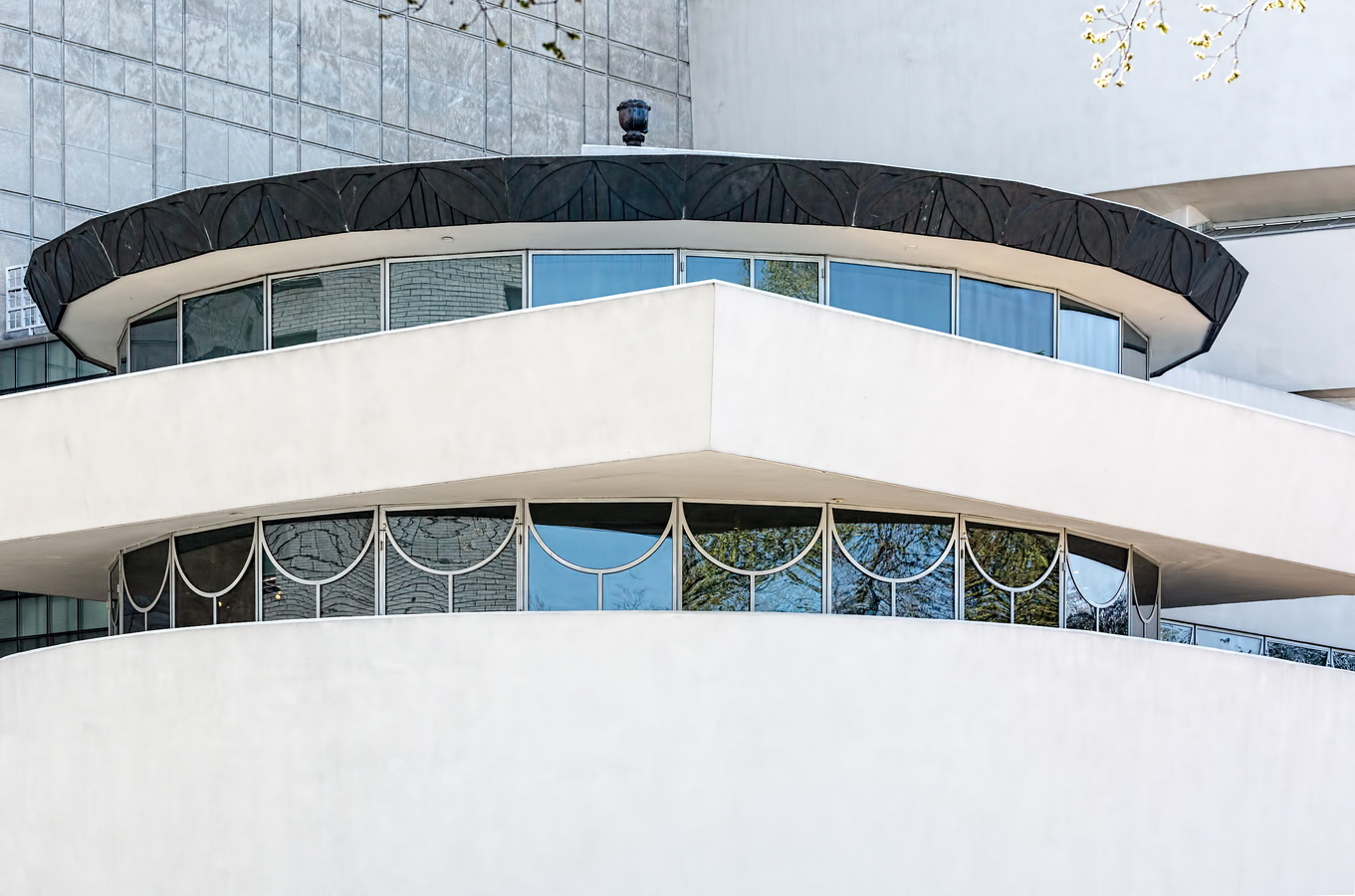
![[Frank Lloyd Wright] IMG_2078_resize [6/5/2012 9:50:07 AM] [Frank Lloyd Wright] IMG_2078_resize [6/5/2012 9:50:07 AM]](https://www.newyorkitecture.com/wp-content/gallery/the-wright-stuff/img_2078_resize.jpg)
![[Frank Lloyd Wright] IMG_2076_resize [6/5/2012 9:49:14 AM] [Frank Lloyd Wright] IMG_2076_resize [6/5/2012 9:49:14 AM]](https://www.newyorkitecture.com/wp-content/gallery/the-wright-stuff/img_2076_resize.jpg)
![[Frank Lloyd Wright] IMG_2073_resize [6/5/2012 9:48:02 AM] [Frank Lloyd Wright] IMG_2073_resize [6/5/2012 9:48:02 AM]](https://www.newyorkitecture.com/wp-content/gallery/the-wright-stuff/img_2073_resize.jpg)
![[Frank Lloyd Wright] IMG_2072_resize [6/5/2012 9:46:27 AM] [Frank Lloyd Wright] IMG_2072_resize [6/5/2012 9:46:27 AM]](https://www.newyorkitecture.com/wp-content/gallery/the-wright-stuff/img_2072_resize.jpg)
![[Frank Lloyd Wright] IMG_2069_resize [6/5/2012 9:45:56 AM] [Frank Lloyd Wright] IMG_2069_resize [6/5/2012 9:45:56 AM]](https://www.newyorkitecture.com/wp-content/gallery/the-wright-stuff/img_2069_resize.jpg)
![[Frank Lloyd Wright] IMG_1974_resize [6/5/2012 8:30:42 AM] [Frank Lloyd Wright] IMG_1974_resize [6/5/2012 8:30:42 AM]](https://www.newyorkitecture.com/wp-content/gallery/the-wright-stuff/img_1974_resize.jpg)
![[Frank Lloyd Wright] IMG_1959_resize [6/5/2012 8:23:02 AM] [Frank Lloyd Wright] IMG_1959_resize [6/5/2012 8:23:02 AM]](https://www.newyorkitecture.com/wp-content/gallery/the-wright-stuff/img_1959_resize.jpg)
![[Frank Lloyd Wright] IMG_1953_resize [6/5/2012 8:16:28 AM] [Frank Lloyd Wright] IMG_1953_resize [6/5/2012 8:16:28 AM]](https://www.newyorkitecture.com/wp-content/gallery/the-wright-stuff/img_1953_resize.jpg)
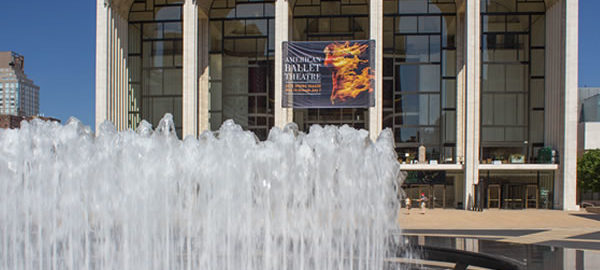
![[Lincoln Center] IMG_2633 [6/8/2012 12:54:00 PM] [Lincoln Center] IMG_2633 [6/8/2012 12:54:00 PM]](https://www.newyorkitecture.com/wp-content/gallery/lincoln-center/img_2633_resize.jpg)
![[Lincoln Center] IMG_2904_resize [6/8/2012 2:54:39 PM] [Lincoln Center] IMG_2904_resize [6/8/2012 2:54:39 PM]](https://www.newyorkitecture.com/wp-content/gallery/lincoln-center/img_2904_resize.jpg)
![[Lincoln Center] IMG_2895_resize [6/8/2012 2:49:05 PM] [Lincoln Center] IMG_2895_resize [6/8/2012 2:49:05 PM]](https://www.newyorkitecture.com/wp-content/gallery/lincoln-center/img_2895_resize.jpg)
![[Lincoln Center] IMG_2889_resize [6/8/2012 2:48:35 PM] [Lincoln Center] IMG_2889_resize [6/8/2012 2:48:35 PM]](https://www.newyorkitecture.com/wp-content/gallery/lincoln-center/img_2889_resize.jpg)
![[Lincoln Center] IMG_2861_resize [6/8/2012 2:32:40 PM] [Lincoln Center] IMG_2861_resize [6/8/2012 2:32:40 PM]](https://www.newyorkitecture.com/wp-content/gallery/lincoln-center/img_2861_resize.jpg)
![[Lincoln Center] IMG_2692_resize [6/8/2012 1:13:30 PM] [Lincoln Center] IMG_2692_resize [6/8/2012 1:13:30 PM]](https://www.newyorkitecture.com/wp-content/gallery/lincoln-center/img_2692_resize.jpg)
![[Lincoln Center] IMG_2687_resize [6/8/2012 1:11:37 PM] [Lincoln Center] IMG_2687_resize [6/8/2012 1:11:37 PM]](https://www.newyorkitecture.com/wp-content/gallery/lincoln-center/img_2687_resize.jpg)
![[Lincoln Center] IMG_2682_resize [6/8/2012 1:10:38 PM] [Lincoln Center] IMG_2682_resize [6/8/2012 1:10:38 PM]](https://www.newyorkitecture.com/wp-content/gallery/lincoln-center/img_2682_resize.jpg)
![[Lincoln Center] IMG_2675_resize [6/8/2012 1:06:32 PM] [Lincoln Center] IMG_2675_resize [6/8/2012 1:06:32 PM]](https://www.newyorkitecture.com/wp-content/gallery/lincoln-center/img_2675_resize.jpg)
![[Lincoln Center] IMG_2669_resize [6/8/2012 1:04:13 PM] [Lincoln Center] IMG_2669_resize [6/8/2012 1:04:13 PM]](https://www.newyorkitecture.com/wp-content/gallery/lincoln-center/img_2669_resize.jpg)
![[Lincoln Center] IMG_2660_resize [6/8/2012 1:01:28 PM] [Lincoln Center] IMG_2660_resize [6/8/2012 1:01:28 PM]](https://www.newyorkitecture.com/wp-content/gallery/lincoln-center/img_2660_resize.jpg)
![[Lincoln Center] IMG_2657_resize [6/8/2012 1:00:24 PM] [Lincoln Center] IMG_2657_resize [6/8/2012 1:00:24 PM]](https://www.newyorkitecture.com/wp-content/gallery/lincoln-center/img_2657_resize.jpg)
![[Lincoln Center] IMG_2656_resize [6/8/2012 1:00:13 PM] [Lincoln Center] IMG_2656_resize [6/8/2012 1:00:13 PM]](https://www.newyorkitecture.com/wp-content/gallery/lincoln-center/img_2656_resize.jpg)
![[Lincoln Center] IMG_2649_resize [6/8/2012 12:59:04 PM] [Lincoln Center] IMG_2649_resize [6/8/2012 12:59:04 PM]](https://www.newyorkitecture.com/wp-content/gallery/lincoln-center/img_2649_resize.jpg)
![[Lincoln Center] IMG_2639_resize [6/8/2012 12:56:59 PM] [Lincoln Center] IMG_2639_resize [6/8/2012 12:56:59 PM]](https://www.newyorkitecture.com/wp-content/gallery/lincoln-center/img_2639_resize.jpg)
![[Lincoln Center] IMG_1644_resize [5/31/2012 9:51:49 AM] [Lincoln Center] IMG_1644_resize [5/31/2012 9:51:49 AM]](https://www.newyorkitecture.com/wp-content/gallery/lincoln-center/img_1644_resize.jpg)
![[Lincoln Center] IMG_2570_resize [6/8/2012 12:30:48 PM] [Lincoln Center] IMG_2570_resize [6/8/2012 12:30:48 PM]](https://www.newyorkitecture.com/wp-content/gallery/lincoln-center/img_2570_resize.jpg)
![[Lincoln Center] IMG_1759_resize [5/31/2012 10:31:51 AM] [Lincoln Center] IMG_1759_resize [5/31/2012 10:31:51 AM]](https://www.newyorkitecture.com/wp-content/gallery/lincoln-center/img_1759_resize.jpg)
![[Lincoln Center] IMG_1748_resize [5/31/2012 10:28:56 AM] [Lincoln Center] IMG_1748_resize [5/31/2012 10:28:56 AM]](https://www.newyorkitecture.com/wp-content/gallery/lincoln-center/img_1748_resize.jpg)
![[Lincoln Center] IMG_1742_resize [5/31/2012 10:26:19 AM] [Lincoln Center] IMG_1742_resize [5/31/2012 10:26:19 AM]](https://www.newyorkitecture.com/wp-content/gallery/lincoln-center/img_1742_resize.jpg)
![[Lincoln Center] IMG_1736_resize [5/31/2012 10:22:00 AM] [Lincoln Center] IMG_1736_resize [5/31/2012 10:22:00 AM]](https://www.newyorkitecture.com/wp-content/gallery/lincoln-center/img_1736_resize.jpg)
![[Lincoln Center] IMG_1731_resize [5/31/2012 10:19:53 AM] [Lincoln Center] IMG_1731_resize [5/31/2012 10:19:53 AM]](https://www.newyorkitecture.com/wp-content/gallery/lincoln-center/img_1731_resize.jpg)
![[Lincoln Center] IMG_1699_resize [5/31/2012 10:15:02 AM] [Lincoln Center] IMG_1699_resize [5/31/2012 10:15:02 AM]](https://www.newyorkitecture.com/wp-content/gallery/lincoln-center/img_1699_resize.jpg)
![[Lincoln Center] IMG_1696_resize [5/31/2012 10:14:50 AM] [Lincoln Center] IMG_1696_resize [5/31/2012 10:14:50 AM]](https://www.newyorkitecture.com/wp-content/gallery/lincoln-center/img_1696_resize.jpg)
![[Lincoln Center] IMG_1667_resize [5/31/2012 10:06:49 AM] [Lincoln Center] IMG_1667_resize [5/31/2012 10:06:49 AM]](https://www.newyorkitecture.com/wp-content/gallery/lincoln-center/img_1667_resize.jpg)
![[Lincoln Center] IMG_1660_resize [5/31/2012 10:00:57 AM] [Lincoln Center] IMG_1660_resize [5/31/2012 10:00:57 AM]](https://www.newyorkitecture.com/wp-content/gallery/lincoln-center/img_1660_resize.jpg)
![[Lincoln Center] IMG_1659_resize [5/31/2012 9:59:39 AM] [Lincoln Center] IMG_1659_resize [5/31/2012 9:59:39 AM]](https://www.newyorkitecture.com/wp-content/gallery/lincoln-center/img_1659_resize.jpg)
![[Lincoln Center] IMG_1655_resize [5/31/2012 9:58:28 AM] [Lincoln Center] IMG_1655_resize [5/31/2012 9:58:28 AM]](https://www.newyorkitecture.com/wp-content/gallery/lincoln-center/img_1655_resize.jpg)
![[Lincoln Center] IMG_1652_resize [5/31/2012 9:57:25 AM] [Lincoln Center] IMG_1652_resize [5/31/2012 9:57:25 AM]](https://www.newyorkitecture.com/wp-content/gallery/lincoln-center/img_1652_resize.jpg)
![[Lincoln Center] IMG_1645_resize [5/31/2012 9:51:57 AM] [Lincoln Center] IMG_1645_resize [5/31/2012 9:51:57 AM]](https://www.newyorkitecture.com/wp-content/gallery/lincoln-center/img_1645_resize.jpg)
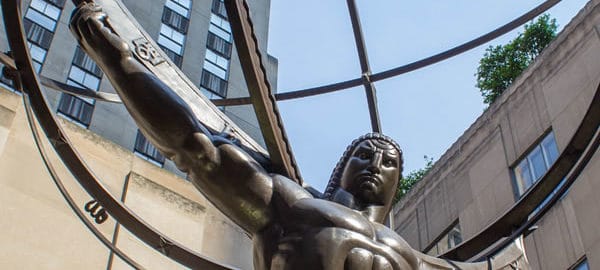
![[Fifth Avenue Swath] A00_4145 [6/20/2012 9:45:55 AM] [Fifth Avenue Swath] A00_4145 [6/20/2012 9:45:55 AM]](https://www.newyorkitecture.com/wp-content/gallery/fifth-avenue-swath/a00_4145_resize.jpg)
![[Fifth Avenue Swath] A00_4173 [6/20/2012 9:58:02 AM] [Fifth Avenue Swath] A00_4173 [6/20/2012 9:58:02 AM]](https://www.newyorkitecture.com/wp-content/gallery/fifth-avenue-swath/a00_4173_resize.jpg)
![[Fifth Avenue Swath] A00_4189 [6/20/2012 10:07:36 AM] [Fifth Avenue Swath] A00_4189 [6/20/2012 10:07:36 AM]](https://www.newyorkitecture.com/wp-content/gallery/fifth-avenue-swath/a00_4189_resize.jpg)
![[Fifth Avenue Swath] A00_5143 [7/7/2012 9:09:57 AM] [Fifth Avenue Swath] A00_5143 [7/7/2012 9:09:57 AM]](https://www.newyorkitecture.com/wp-content/gallery/fifth-avenue-swath/a00_5143_resize.jpg)
![[Fifth Avenue Swath] A00_5165 [7/7/2012 9:17:44 AM] [Fifth Avenue Swath] A00_5165 [7/7/2012 9:17:44 AM]](https://www.newyorkitecture.com/wp-content/gallery/fifth-avenue-swath/a00_5165_resize.jpg)
![[Fifth Avenue Swath] A00_5217 [7/7/2012 9:39:56 AM] [Fifth Avenue Swath] A00_5217 [7/7/2012 9:39:56 AM]](https://www.newyorkitecture.com/wp-content/gallery/fifth-avenue-swath/a00_5217_resize.jpg)
![[Fifth Avenue Swath] A00_5234 [7/7/2012 9:47:23 AM] [Fifth Avenue Swath] A00_5234 [7/7/2012 9:47:23 AM]](https://www.newyorkitecture.com/wp-content/gallery/fifth-avenue-swath/a00_5234_resize.jpg)
![[Fifth Avenue Swath] A00_5395 [7/7/2012 1:22:29 PM] [Fifth Avenue Swath] A00_5395 [7/7/2012 1:22:29 PM]](https://www.newyorkitecture.com/wp-content/gallery/fifth-avenue-swath/a00_5395_resize.jpg)
![[Fifth Avenue Swath] AB0_4183 [6/20/2012 10:02:37 AM] [Fifth Avenue Swath] AB0_4183 [6/20/2012 10:02:37 AM]](https://www.newyorkitecture.com/wp-content/gallery/fifth-avenue-swath/ab0_4183_resize.jpg)
![[Fifth Avenue Swath] AB0_5117 [7/7/2012 9:00:25 AM] [Fifth Avenue Swath] AB0_5117 [7/7/2012 9:00:25 AM]](https://www.newyorkitecture.com/wp-content/gallery/fifth-avenue-swath/ab0_5117_resize.jpg)
![[Fifth Avenue Swath] AB0_5203 [7/7/2012 9:32:36 AM] [Fifth Avenue Swath] AB0_5203 [7/7/2012 9:32:36 AM]](https://www.newyorkitecture.com/wp-content/gallery/fifth-avenue-swath/ab0_5203_resize.jpg)
![[Fifth Avenue Swath] AC00_4095 [6/20/2012 9:19:15 AM] [Fifth Avenue Swath] AC00_4095 [6/20/2012 9:19:15 AM]](https://www.newyorkitecture.com/wp-content/gallery/fifth-avenue-swath/ac00_4095_resize.jpg)
![[Fifth Avenue Swath] AC00_4098 [6/20/2012 9:19:44 AM] [Fifth Avenue Swath] AC00_4098 [6/20/2012 9:19:44 AM]](https://www.newyorkitecture.com/wp-content/gallery/fifth-avenue-swath/ac00_4098_resize.jpg)
![[Fifth Avenue Swath] AC00_4100 [6/20/2012 9:21:10 AM] [Fifth Avenue Swath] AC00_4100 [6/20/2012 9:21:10 AM]](https://www.newyorkitecture.com/wp-content/gallery/fifth-avenue-swath/ac00_4100_resize.jpg)
![[Fifth Avenue Swath] AC00_4109 [6/20/2012 9:25:14 AM] [Fifth Avenue Swath] AC00_4109 [6/20/2012 9:25:14 AM]](https://www.newyorkitecture.com/wp-content/gallery/fifth-avenue-swath/ac00_4109_resize.jpg)
![[Fifth Avenue Swath] AC00_4112 [6/20/2012 9:25:40 AM] [Fifth Avenue Swath] AC00_4112 [6/20/2012 9:25:40 AM]](https://www.newyorkitecture.com/wp-content/gallery/fifth-avenue-swath/ac00_4112_resize.jpg)
![[Fifth Avenue Swath] AC00_4114 [6/20/2012 9:27:33 AM] [Fifth Avenue Swath] AC00_4114 [6/20/2012 9:27:33 AM]](https://www.newyorkitecture.com/wp-content/gallery/fifth-avenue-swath/ac00_4114_resize.jpg)
![[Fifth Avenue Swath] AC00_4119 [6/20/2012 9:31:52 AM] [Fifth Avenue Swath] AC00_4119 [6/20/2012 9:31:52 AM]](https://www.newyorkitecture.com/wp-content/gallery/fifth-avenue-swath/ac00_4119_resize.jpg)
![[Fifth Avenue Swath] AC00_4123 [6/20/2012 9:34:35 AM] [Fifth Avenue Swath] AC00_4123 [6/20/2012 9:34:35 AM]](https://www.newyorkitecture.com/wp-content/gallery/fifth-avenue-swath/ac00_4123_resize.jpg)
![[Fifth Avenue Swath] AC00_4132 [6/20/2012 9:39:28 AM] [Fifth Avenue Swath] AC00_4132 [6/20/2012 9:39:28 AM]](https://www.newyorkitecture.com/wp-content/gallery/fifth-avenue-swath/ac00_4132_resize.jpg)
![[Fifth Avenue Swath] AC00_4138 [6/20/2012 9:42:17 AM] [Fifth Avenue Swath] AC00_4138 [6/20/2012 9:42:17 AM]](https://www.newyorkitecture.com/wp-content/gallery/fifth-avenue-swath/ac00_4138_resize.jpg)
![[Fifth Avenue Swath] AC00_4140 [6/20/2012 9:43:29 AM] [Fifth Avenue Swath] AC00_4140 [6/20/2012 9:43:29 AM]](https://www.newyorkitecture.com/wp-content/gallery/fifth-avenue-swath/ac00_4140_resize.jpg)
![[Fifth Avenue Swath] AC00_4186 [6/20/2012 10:05:34 AM] [Fifth Avenue Swath] AC00_4186 [6/20/2012 10:05:34 AM]](https://www.newyorkitecture.com/wp-content/gallery/fifth-avenue-swath/ac00_4186_resize.jpg)
![[Fifth Avenue Swath] AC00_4187 [6/20/2012 10:05:53 AM] [Fifth Avenue Swath] AC00_4187 [6/20/2012 10:05:53 AM]](https://www.newyorkitecture.com/wp-content/gallery/fifth-avenue-swath/ac00_4187_resize.jpg)
![[Fifth Avenue Swath] AC00_5146 [7/7/2012 9:11:18 AM] [Fifth Avenue Swath] AC00_5146 [7/7/2012 9:11:18 AM]](https://www.newyorkitecture.com/wp-content/gallery/fifth-avenue-swath/ac00_5146_resize.jpg)
![[Fifth Avenue Swath] AC00_5148 [7/7/2012 9:12:31 AM] [Fifth Avenue Swath] AC00_5148 [7/7/2012 9:12:31 AM]](https://www.newyorkitecture.com/wp-content/gallery/fifth-avenue-swath/ac00_5148_resize.jpg)
![[Fifth Avenue Swath] AC00_5171 [7/7/2012 9:20:13 AM] [Fifth Avenue Swath] AC00_5171 [7/7/2012 9:20:13 AM]](https://www.newyorkitecture.com/wp-content/gallery/fifth-avenue-swath/ac00_5171_resize.jpg)
![[Fifth Avenue Swath] AC00_5199 [7/7/2012 9:31:26 AM] [Fifth Avenue Swath] AC00_5199 [7/7/2012 9:31:26 AM]](https://www.newyorkitecture.com/wp-content/gallery/fifth-avenue-swath/ac00_5199_resize.jpg)
![[Fifth Avenue Swath] AC00_5214 [7/7/2012 9:38:17 AM] [Fifth Avenue Swath] AC00_5214 [7/7/2012 9:38:17 AM]](https://www.newyorkitecture.com/wp-content/gallery/fifth-avenue-swath/ac00_5214_resize.jpg)
![[Fifth Avenue Swath] AC00_5222 [7/7/2012 9:41:57 AM] [Fifth Avenue Swath] AC00_5222 [7/7/2012 9:41:57 AM]](https://www.newyorkitecture.com/wp-content/gallery/fifth-avenue-swath/ac00_5222_resize.jpg)
![[Fifth Avenue Swath] AC00_5433 [7/8/2012 12:46:03 PM] [Fifth Avenue Swath] AC00_5433 [7/8/2012 12:46:03 PM]](https://www.newyorkitecture.com/wp-content/gallery/fifth-avenue-swath/ac00_5433_resize.jpg)
![[Fifth Avenue Swath] AZ0_3944 [6/20/2012 7:49:55 AM] [Fifth Avenue Swath] AZ0_3944 [6/20/2012 7:49:55 AM]](https://www.newyorkitecture.com/wp-content/gallery/fifth-avenue-swath/az0_3944_resize.jpg)
![[Fifth Avenue Swath] AZ0_3950 [6/20/2012 7:52:22 AM] [Fifth Avenue Swath] AZ0_3950 [6/20/2012 7:52:22 AM]](https://www.newyorkitecture.com/wp-content/gallery/fifth-avenue-swath/az0_3950_resize.jpg)
![[Fifth Avenue Swath] AZ0_3957 [6/20/2012 7:57:33 AM] [Fifth Avenue Swath] AZ0_3957 [6/20/2012 7:57:33 AM]](https://www.newyorkitecture.com/wp-content/gallery/fifth-avenue-swath/az0_3957_resize.jpg)
![[Fifth Avenue Swath] AZ0_3964 [6/20/2012 8:01:02 AM] [Fifth Avenue Swath] AZ0_3964 [6/20/2012 8:01:02 AM]](https://www.newyorkitecture.com/wp-content/gallery/fifth-avenue-swath/az0_3964_resize.jpg)
![[Fifth Avenue Swath] AZ0_3968 [6/20/2012 8:02:38 AM] [Fifth Avenue Swath] AZ0_3968 [6/20/2012 8:02:38 AM]](https://www.newyorkitecture.com/wp-content/gallery/fifth-avenue-swath/az0_3968_resize.jpg)
![[Fifth Avenue Swath] AZ0_3970 [6/20/2012 8:04:16 AM] [Fifth Avenue Swath] AZ0_3970 [6/20/2012 8:04:16 AM]](https://www.newyorkitecture.com/wp-content/gallery/fifth-avenue-swath/az0_3970_resize.jpg)
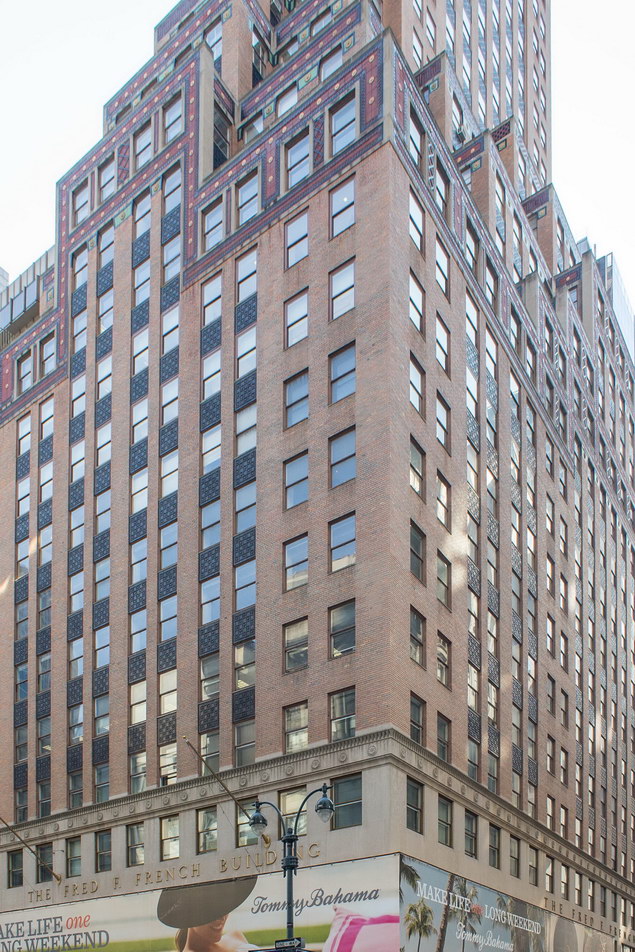
![[Fifth Avenue Swath] B01_5550 [7/8/2012 2:04:14 PM] [Fifth Avenue Swath] B01_5550 [7/8/2012 2:04:14 PM]](https://www.newyorkitecture.com/wp-content/gallery/fifth-avenue-swath/b01_5550_resize.jpg)
![[Fifth Avenue Swath] B02_5520 [7/8/2012 1:42:37 PM] [Fifth Avenue Swath] B02_5520 [7/8/2012 1:42:37 PM]](https://www.newyorkitecture.com/wp-content/gallery/fifth-avenue-swath/b02_5520_resize.jpg)
![[Fifth Avenue Swath] B03_5525 [7/8/2012 1:44:46 PM] [Fifth Avenue Swath] B03_5525 [7/8/2012 1:44:46 PM]](https://www.newyorkitecture.com/wp-content/gallery/fifth-avenue-swath/b03_5525_resize.jpg)
![[Fifth Avenue Swath] B04_4372 [6/21/2012 9:10:10 AM] [Fifth Avenue Swath] B04_4372 [6/21/2012 9:10:10 AM]](https://www.newyorkitecture.com/wp-content/gallery/fifth-avenue-swath/b04_4372_resize.jpg)
![[Fifth Avenue Swath] B05_5539 [7/8/2012 1:56:39 PM] [Fifth Avenue Swath] B05_5539 [7/8/2012 1:56:39 PM]](https://www.newyorkitecture.com/wp-content/gallery/fifth-avenue-swath/b05_5539_resize.jpg)
![[Fifth Avenue Swath] C01_3050 [6/11/2012 9:30:07 AM] [Fifth Avenue Swath] C01_3050 [6/11/2012 9:30:07 AM]](https://www.newyorkitecture.com/wp-content/gallery/fifth-avenue-swath/c01_3050_resize.jpg)
![[Fifth Avenue Swath] C02_4460 [6/21/2012 10:05:33 AM] [Fifth Avenue Swath] C02_4460 [6/21/2012 10:05:33 AM]](https://www.newyorkitecture.com/wp-content/gallery/fifth-avenue-swath/c02_4460_resize.jpg)
![[Fifth Avenue Swath] C03_4791 [7/3/2012 11:34:29 AM] [Fifth Avenue Swath] C03_4791 [7/3/2012 11:34:29 AM]](https://www.newyorkitecture.com/wp-content/gallery/fifth-avenue-swath/c03_4791_resize.jpg)
![[Fifth Avenue Swath] D01_4713 [7/3/2012 10:47:42 AM] [Fifth Avenue Swath] D01_4713 [7/3/2012 10:47:42 AM]](https://www.newyorkitecture.com/wp-content/gallery/fifth-avenue-swath/d01_4713_resize.jpg)
![[Fifth Avenue Swath] D02_4725 [7/3/2012 10:53:31 AM] [Fifth Avenue Swath] D02_4725 [7/3/2012 10:53:31 AM]](https://www.newyorkitecture.com/wp-content/gallery/fifth-avenue-swath/d02_4725_resize.jpg)
![[Fifth Avenue Swath] D03_4701 [7/3/2012 10:39:35 AM] [Fifth Avenue Swath] D03_4701 [7/3/2012 10:39:35 AM]](https://www.newyorkitecture.com/wp-content/gallery/fifth-avenue-swath/d03_4701_resize.jpg)
![[Fifth Avenue Swath] D04_4707 [7/3/2012 10:46:22 AM] [Fifth Avenue Swath] D04_4707 [7/3/2012 10:46:22 AM]](https://www.newyorkitecture.com/wp-content/gallery/fifth-avenue-swath/d04_4707_resize.jpg)
![[Fifth Avenue Swath] E00_3020 [6/11/2012 9:17:00 AM] [Fifth Avenue Swath] E00_3020 [6/11/2012 9:17:00 AM]](https://www.newyorkitecture.com/wp-content/gallery/fifth-avenue-swath/e00_3020_resize.jpg)
![[Fifth Avenue Swath] E00_3235 [6/11/2012 10:54:15 AM] [Fifth Avenue Swath] E00_3235 [6/11/2012 10:54:15 AM]](https://www.newyorkitecture.com/wp-content/gallery/fifth-avenue-swath/e00_3235_resize.jpg)
![[Fifth Avenue Swath] E00_4459 [6/21/2012 10:02:26 AM] [Fifth Avenue Swath] E00_4459 [6/21/2012 10:02:26 AM]](https://www.newyorkitecture.com/wp-content/gallery/fifth-avenue-swath/e00_4459_resize.jpg)
![[Fifth Avenue Swath] E00_4705 [7/3/2012 10:44:05 AM] [Fifth Avenue Swath] E00_4705 [7/3/2012 10:44:05 AM]](https://www.newyorkitecture.com/wp-content/gallery/fifth-avenue-swath/e00_4705_resize.jpg)
![[Fifth Avenue Swath] F00_3036 [6/11/2012 9:23:58 AM] [Fifth Avenue Swath] F00_3036 [6/11/2012 9:23:58 AM]](https://www.newyorkitecture.com/wp-content/gallery/fifth-avenue-swath/f00_3036_resize.jpg)
![[Fifth Avenue Swath] F00_3040 [6/11/2012 9:25:14 AM] [Fifth Avenue Swath] F00_3040 [6/11/2012 9:25:14 AM]](https://www.newyorkitecture.com/wp-content/gallery/fifth-avenue-swath/f00_3040_resize.jpg)
![[Fifth Avenue Swath] F00_3080 [6/11/2012 9:40:47 AM] [Fifth Avenue Swath] F00_3080 [6/11/2012 9:40:47 AM]](https://www.newyorkitecture.com/wp-content/gallery/fifth-avenue-swath/f00_3080_resize.jpg)
![[Fifth Avenue Swath] G00_3000 [6/11/2012 9:04:16 AM] [Fifth Avenue Swath] G00_3000 [6/11/2012 9:04:16 AM]](https://www.newyorkitecture.com/wp-content/gallery/fifth-avenue-swath/g00_3000_resize.jpg)
![[Fifth Avenue Swath] G00_3307 [6/11/2012 11:15:08 AM] [Fifth Avenue Swath] G00_3307 [6/11/2012 11:15:08 AM]](https://www.newyorkitecture.com/wp-content/gallery/fifth-avenue-swath/g00_3307_resize.jpg)
![[Fifth Avenue Swath] G00_3330 [6/11/2012 11:18:49 AM] [Fifth Avenue Swath] G00_3330 [6/11/2012 11:18:49 AM]](https://www.newyorkitecture.com/wp-content/gallery/fifth-avenue-swath/g00_3330_resize.jpg)
![[Fifth Avenue Swath] G00_3756 [6/15/2012 10:36:52 AM] [Fifth Avenue Swath] G00_3756 [6/15/2012 10:36:52 AM]](https://www.newyorkitecture.com/wp-content/gallery/fifth-avenue-swath/g00_3756_resize.jpg)
![[Fifth Avenue Swath] G00_3787 [6/15/2012 10:47:15 AM] [Fifth Avenue Swath] G00_3787 [6/15/2012 10:47:15 AM]](https://www.newyorkitecture.com/wp-content/gallery/fifth-avenue-swath/g00_3787_resize.jpg)
![[Fifth Avenue Swath] G00_4278 [6/21/2012 8:26:01 AM] [Fifth Avenue Swath] G00_4278 [6/21/2012 8:26:01 AM]](https://www.newyorkitecture.com/wp-content/gallery/fifth-avenue-swath/g00_4278_resize.jpg)
![[Fifth Avenue Swath] G00_4285 [6/21/2012 8:27:01 AM] [Fifth Avenue Swath] G00_4285 [6/21/2012 8:27:01 AM]](https://www.newyorkitecture.com/wp-content/gallery/fifth-avenue-swath/g00_4285_resize.jpg)
![[Fifth Avenue Swath] H10_3318 [6/11/2012 11:16:54 AM] [Fifth Avenue Swath] H10_3318 [6/11/2012 11:16:54 AM]](https://www.newyorkitecture.com/wp-content/gallery/fifth-avenue-swath/h10_3318_resize.jpg)
![[Fifth Avenue Swath] H10_3614 [6/15/2012 9:30:32 AM] [Fifth Avenue Swath] H10_3614 [6/15/2012 9:30:32 AM]](https://www.newyorkitecture.com/wp-content/gallery/fifth-avenue-swath/h10_3614_resize.jpg)
![[Fifth Avenue Swath] H20_3622 [6/15/2012 9:35:25 AM] [Fifth Avenue Swath] H20_3622 [6/15/2012 9:35:25 AM]](https://www.newyorkitecture.com/wp-content/gallery/fifth-avenue-swath/h20_3622_resize.jpg)
![[Fifth Avenue Swath] H20_4471 [6/21/2012 10:10:27 AM] [Fifth Avenue Swath] H20_4471 [6/21/2012 10:10:27 AM]](https://www.newyorkitecture.com/wp-content/gallery/fifth-avenue-swath/h20_4471_resize.jpg)
![[Fifth Avenue Swath] H30_4336 [6/21/2012 8:53:11 AM] [Fifth Avenue Swath] H30_4336 [6/21/2012 8:53:11 AM]](https://www.newyorkitecture.com/wp-content/gallery/fifth-avenue-swath/h30_4336_resize.jpg)
![[Fifth Avenue Swath] H30_4340 [6/21/2012 8:56:10 AM] [Fifth Avenue Swath] H30_4340 [6/21/2012 8:56:10 AM]](https://www.newyorkitecture.com/wp-content/gallery/fifth-avenue-swath/h30_4340_resize.jpg)
![[Fifth Avenue Swath] H40_4027 [6/20/2012 8:37:34 AM] [Fifth Avenue Swath] H40_4027 [6/20/2012 8:37:34 AM]](https://www.newyorkitecture.com/wp-content/gallery/fifth-avenue-swath/h40_4027_resize.jpg)
![[Fifth Avenue Swath] H40_4029 [6/20/2012 8:39:29 AM] [Fifth Avenue Swath] H40_4029 [6/20/2012 8:39:29 AM]](https://www.newyorkitecture.com/wp-content/gallery/fifth-avenue-swath/h40_4029_resize.jpg)
![[Fifth Avenue Swath] H40_4041 [6/20/2012 8:43:15 AM] [Fifth Avenue Swath] H40_4041 [6/20/2012 8:43:15 AM]](https://www.newyorkitecture.com/wp-content/gallery/fifth-avenue-swath/h40_4041_resize.jpg)
![[Fifth Avenue Swath] H40_4049 [6/20/2012 8:47:28 AM] [Fifth Avenue Swath] H40_4049 [6/20/2012 8:47:28 AM]](https://www.newyorkitecture.com/wp-content/gallery/fifth-avenue-swath/h40_4049_resize.jpg)
![[Fifth Avenue Swath] H50_3726 [6/15/2012 10:18:07 AM] [Fifth Avenue Swath] H50_3726 [6/15/2012 10:18:07 AM]](https://www.newyorkitecture.com/wp-content/gallery/fifth-avenue-swath/h50_3726_resize.jpg)
![[Fifth Avenue Swath] H60_3647 [6/15/2012 9:49:25 AM] [Fifth Avenue Swath] H60_3647 [6/15/2012 9:49:25 AM]](https://www.newyorkitecture.com/wp-content/gallery/fifth-avenue-swath/h60_3647_resize.jpg)
![[Fifth Avenue Swath] H70_4348 [6/21/2012 8:58:49 AM] [Fifth Avenue Swath] H70_4348 [6/21/2012 8:58:49 AM]](https://www.newyorkitecture.com/wp-content/gallery/fifth-avenue-swath/h70_4348_resize.jpg)
![[Fifth Avenue Swath] H70_4352 [6/21/2012 9:00:47 AM] [Fifth Avenue Swath] H70_4352 [6/21/2012 9:00:47 AM]](https://www.newyorkitecture.com/wp-content/gallery/fifth-avenue-swath/h70_4352_resize.jpg)
![[Fifth Avenue Swath] H80_4444 [6/21/2012 9:49:01 AM] [Fifth Avenue Swath] H80_4444 [6/21/2012 9:49:01 AM]](https://www.newyorkitecture.com/wp-content/gallery/fifth-avenue-swath/h80_4444_resize.jpg)
![[Fifth Avenue Swath] H90_3145 [6/11/2012 10:17:59 AM] [Fifth Avenue Swath] H90_3145 [6/11/2012 10:17:59 AM]](https://www.newyorkitecture.com/wp-content/gallery/fifth-avenue-swath/h90_3145_resize.jpg)
![[Fifth Avenue Swath] H90_3151 [6/11/2012 10:21:34 AM] [Fifth Avenue Swath] H90_3151 [6/11/2012 10:21:34 AM]](https://www.newyorkitecture.com/wp-content/gallery/fifth-avenue-swath/h90_3151_resize.jpg)
![[Fifth Avenue Swath] H90_3170 [6/11/2012 10:30:59 AM] [Fifth Avenue Swath] H90_3170 [6/11/2012 10:30:59 AM]](https://www.newyorkitecture.com/wp-content/gallery/fifth-avenue-swath/h90_3170_resize.jpg)
![[Fifth Avenue Swath] H90_3535 [6/15/2012 8:40:43 AM] [Fifth Avenue Swath] H90_3535 [6/15/2012 8:40:43 AM]](https://www.newyorkitecture.com/wp-content/gallery/fifth-avenue-swath/h90_3535_resize.jpg)
![[Fifth Avenue Swath] H90_3536 [6/15/2012 8:41:10 AM] [Fifth Avenue Swath] H90_3536 [6/15/2012 8:41:10 AM]](https://www.newyorkitecture.com/wp-content/gallery/fifth-avenue-swath/h90_3536_resize.jpg)
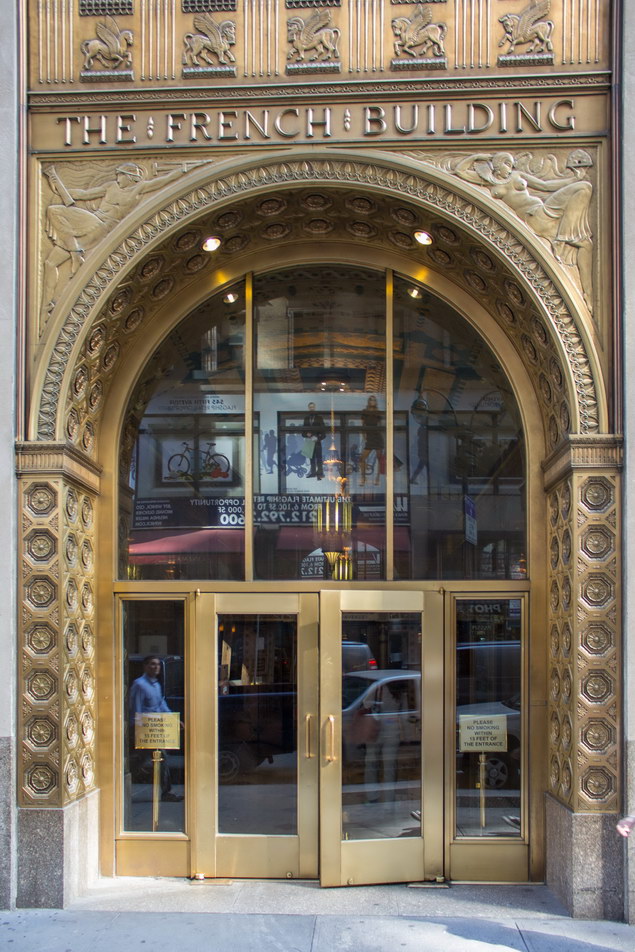
![[Fifth Avenue Swath] I00_3156 [6/11/2012 10:27:03 AM] [Fifth Avenue Swath] I00_3156 [6/11/2012 10:27:03 AM]](https://www.newyorkitecture.com/wp-content/gallery/fifth-avenue-swath/i00_3156_resize.jpg)
![[Fifth Avenue Swath] I00_3163 [6/11/2012 10:29:24 AM] [Fifth Avenue Swath] I00_3163 [6/11/2012 10:29:24 AM]](https://www.newyorkitecture.com/wp-content/gallery/fifth-avenue-swath/i00_3163_resize.jpg)
![[Fifth Avenue Swath] I00_3166 [6/11/2012 10:30:29 AM] [Fifth Avenue Swath] I00_3166 [6/11/2012 10:30:29 AM]](https://www.newyorkitecture.com/wp-content/gallery/fifth-avenue-swath/i00_3166_resize.jpg)
![[Fifth Avenue Swath] I00_3816 [6/15/2012 11:01:08 AM] [Fifth Avenue Swath] I00_3816 [6/15/2012 11:01:08 AM]](https://www.newyorkitecture.com/wp-content/gallery/fifth-avenue-swath/i00_3816_resize.jpg)
![[Sherry Netherland] IMG_4460 [6/21/2012 10:05:33 AM] [Sherry Netherland] IMG_4460 [6/21/2012 10:05:33 AM]](https://www.newyorkitecture.com/wp-content/gallery/fifth-avenue-swath/IMG_4460_resize.jpg)
![[Sherry Netherland] IMG_4668 [7/3/2012 10:20:41 AM] [Sherry Netherland] IMG_4668 [7/3/2012 10:20:41 AM]](https://www.newyorkitecture.com/wp-content/gallery/fifth-avenue-swath/IMG_4668_resize1.jpg)
![[Fifth Avenue Swath] J00_3281 [6/11/2012 11:08:19 AM] [Fifth Avenue Swath] J00_3281 [6/11/2012 11:08:19 AM]](https://www.newyorkitecture.com/wp-content/gallery/fifth-avenue-swath/j00_3281_resize.jpg)
![[Fifth Avenue Swath] J00_4455 [6/21/2012 10:01:05 AM] [Fifth Avenue Swath] J00_4455 [6/21/2012 10:01:05 AM]](https://www.newyorkitecture.com/wp-content/gallery/fifth-avenue-swath/j00_4455_resize.jpg)
![[Fifth Avenue Swath] J00_4764 [7/3/2012 11:24:27 AM] [Fifth Avenue Swath] J00_4764 [7/3/2012 11:24:27 AM]](https://www.newyorkitecture.com/wp-content/gallery/fifth-avenue-swath/j00_4764_resize.jpg)
![[Fifth Avenue Swath] J00_5290 [7/7/2012 10:56:30 AM] [Fifth Avenue Swath] J00_5290 [7/7/2012 10:56:30 AM]](https://www.newyorkitecture.com/wp-content/gallery/fifth-avenue-swath/j00_5290_resize.jpg)
![[Fifth Avenue Swath] K00_3140 [6/11/2012 10:16:59 AM] [Fifth Avenue Swath] K00_3140 [6/11/2012 10:16:59 AM]](https://www.newyorkitecture.com/wp-content/gallery/fifth-avenue-swath/k00_3140_resize.jpg)
![[Fifth Avenue Swath] K00_3291 [6/11/2012 11:11:14 AM] [Fifth Avenue Swath] K00_3291 [6/11/2012 11:11:14 AM]](https://www.newyorkitecture.com/wp-content/gallery/fifth-avenue-swath/k00_3291_resize.jpg)
![[Fifth Avenue Swath] K00_3806 [6/15/2012 10:56:18 AM] [Fifth Avenue Swath] K00_3806 [6/15/2012 10:56:18 AM]](https://www.newyorkitecture.com/wp-content/gallery/fifth-avenue-swath/k00_3806_resize.jpg)
![[Fifth Avenue Swath] K00_3841 [6/15/2012 11:14:10 AM] [Fifth Avenue Swath] K00_3841 [6/15/2012 11:14:10 AM]](https://www.newyorkitecture.com/wp-content/gallery/fifth-avenue-swath/k00_3841_resize.jpg)
![[Fifth Avenue Swath] K00_4463 [6/21/2012 10:06:00 AM] [Fifth Avenue Swath] K00_4463 [6/21/2012 10:06:00 AM]](https://www.newyorkitecture.com/wp-content/gallery/fifth-avenue-swath/k00_4463_resize.jpg)
![[Fifth Avenue Swath] L00_3351 [6/11/2012 11:26:28 AM] [Fifth Avenue Swath] L00_3351 [6/11/2012 11:26:28 AM]](https://www.newyorkitecture.com/wp-content/gallery/fifth-avenue-swath/l00_3351_resize.jpg)
![[Fifth Avenue Swath] L00_3546 [6/15/2012 8:53:16 AM] [Fifth Avenue Swath] L00_3546 [6/15/2012 8:53:16 AM]](https://www.newyorkitecture.com/wp-content/gallery/fifth-avenue-swath/l00_3546_resize.jpg)
![[Fifth Avenue Swath] L00_3625 [6/15/2012 9:37:53 AM] [Fifth Avenue Swath] L00_3625 [6/15/2012 9:37:53 AM]](https://www.newyorkitecture.com/wp-content/gallery/fifth-avenue-swath/l00_3625_resize.jpg)
![[Fifth Avenue Swath] L00_5357 [7/7/2012 11:18:00 AM] [Fifth Avenue Swath] L00_5357 [7/7/2012 11:18:00 AM]](https://www.newyorkitecture.com/wp-content/gallery/fifth-avenue-swath/l00_5357_resize.jpg)
![[Fifth Avenue Swath] M00_3204 [6/11/2012 10:45:28 AM] [Fifth Avenue Swath] M00_3204 [6/11/2012 10:45:28 AM]](https://www.newyorkitecture.com/wp-content/gallery/fifth-avenue-swath/m00_3204_resize.jpg)
![[Fifth Avenue Swath] M00_3216 [6/11/2012 10:47:44 AM] [Fifth Avenue Swath] M00_3216 [6/11/2012 10:47:44 AM]](https://www.newyorkitecture.com/wp-content/gallery/fifth-avenue-swath/m00_3216_resize.jpg)
![[Fifth Avenue Swath] M00_3360 [6/11/2012 11:28:59 AM] [Fifth Avenue Swath] M00_3360 [6/11/2012 11:28:59 AM]](https://www.newyorkitecture.com/wp-content/gallery/fifth-avenue-swath/m00_3360_resize.jpg)
![[Fifth Avenue Swath] N00_3750 [6/15/2012 10:31:27 AM] [Fifth Avenue Swath] N00_3750 [6/15/2012 10:31:27 AM]](https://www.newyorkitecture.com/wp-content/gallery/fifth-avenue-swath/n00_3750_resize.jpg)
![[Fifth Avenue Swath] N00_3753 [6/15/2012 10:31:54 AM] [Fifth Avenue Swath] N00_3753 [6/15/2012 10:31:54 AM]](https://www.newyorkitecture.com/wp-content/gallery/fifth-avenue-swath/n00_3753_resize.jpg)
![[Fifth Avenue Swath] N00_3989 [6/20/2012 8:19:33 AM] [Fifth Avenue Swath] N00_3989 [6/20/2012 8:19:33 AM]](https://www.newyorkitecture.com/wp-content/gallery/fifth-avenue-swath/n00_3989_resize.jpg)
![[Fifth Avenue Swath] O00_4324 [6/21/2012 8:43:39 AM] [Fifth Avenue Swath] O00_4324 [6/21/2012 8:43:39 AM]](https://www.newyorkitecture.com/wp-content/gallery/fifth-avenue-swath/o00_4324_resize.jpg)
![[Fifth Avenue Swath] O00_4328 [6/21/2012 8:45:02 AM] [Fifth Avenue Swath] O00_4328 [6/21/2012 8:45:02 AM]](https://www.newyorkitecture.com/wp-content/gallery/fifth-avenue-swath/o00_4328_resize.jpg)
![[Fifth Avenue Swath] O00_4333 [6/21/2012 8:49:43 AM] [Fifth Avenue Swath] O00_4333 [6/21/2012 8:49:43 AM]](https://www.newyorkitecture.com/wp-content/gallery/fifth-avenue-swath/o00_4333_resize.jpg)
![[Fifth Avenue Swath] O00_5528 [7/8/2012 1:48:47 PM] [Fifth Avenue Swath] O00_5528 [7/8/2012 1:48:47 PM]](https://www.newyorkitecture.com/wp-content/gallery/fifth-avenue-swath/o00_5528_resize.jpg)
![[Fifth Avenue Swath] P00_3830 [6/15/2012 11:10:59 AM] [Fifth Avenue Swath] P00_3830 [6/15/2012 11:10:59 AM]](https://www.newyorkitecture.com/wp-content/gallery/fifth-avenue-swath/p00_3830_resize.jpg)
![[Fifth Avenue Swath] P00_3835 [6/15/2012 11:12:35 AM] [Fifth Avenue Swath] P00_3835 [6/15/2012 11:12:35 AM]](https://www.newyorkitecture.com/wp-content/gallery/fifth-avenue-swath/p00_3835_resize.jpg)
![[Fifth Avenue Swath] P00_3842 [6/15/2012 11:14:55 AM] [Fifth Avenue Swath] P00_3842 [6/15/2012 11:14:55 AM]](https://www.newyorkitecture.com/wp-content/gallery/fifth-avenue-swath/p00_3842_resize.jpg)
![[Fifth Avenue Swath] P00_4059 [6/20/2012 8:53:45 AM] [Fifth Avenue Swath] P00_4059 [6/20/2012 8:53:45 AM]](https://www.newyorkitecture.com/wp-content/gallery/fifth-avenue-swath/p00_4059_resize.jpg)
![[Fifth Avenue Swath] Q00_3088 [6/11/2012 9:44:22 AM] [Fifth Avenue Swath] Q00_3088 [6/11/2012 9:44:22 AM]](https://www.newyorkitecture.com/wp-content/gallery/fifth-avenue-swath/q00_3088_resize.jpg)
![[Fifth Avenue Swath] Q00_3096 [6/11/2012 9:48:34 AM] [Fifth Avenue Swath] Q00_3096 [6/11/2012 9:48:34 AM]](https://www.newyorkitecture.com/wp-content/gallery/fifth-avenue-swath/q00_3096_resize.jpg)
![[Fifth Avenue Swath] Q00_3107 [6/11/2012 9:55:02 AM] [Fifth Avenue Swath] Q00_3107 [6/11/2012 9:55:02 AM]](https://www.newyorkitecture.com/wp-content/gallery/fifth-avenue-swath/q00_3107_resize.jpg)
![[Fifth Avenue Swath] Q00_3113 [6/11/2012 9:56:26 AM] [Fifth Avenue Swath] Q00_3113 [6/11/2012 9:56:26 AM]](https://www.newyorkitecture.com/wp-content/gallery/fifth-avenue-swath/q00_3113_resize.jpg)
![[Fifth Avenue Swath] Q00_3186 [6/11/2012 10:36:26 AM] [Fifth Avenue Swath] Q00_3186 [6/11/2012 10:36:26 AM]](https://www.newyorkitecture.com/wp-content/gallery/fifth-avenue-swath/q00_3186_resize.jpg)
![[Fifth Avenue Swath] Q00_3189 [6/11/2012 10:36:36 AM] [Fifth Avenue Swath] Q00_3189 [6/11/2012 10:36:36 AM]](https://www.newyorkitecture.com/wp-content/gallery/fifth-avenue-swath/q00_3189_resize.jpg)
![[Fifth Avenue Swath] Q00_3194 [6/11/2012 10:40:41 AM] [Fifth Avenue Swath] Q00_3194 [6/11/2012 10:40:41 AM]](https://www.newyorkitecture.com/wp-content/gallery/fifth-avenue-swath/q00_3194_resize.jpg)
![[Fifth Avenue Swath] Q00_3230 [6/11/2012 10:52:05 AM] [Fifth Avenue Swath] Q00_3230 [6/11/2012 10:52:05 AM]](https://www.newyorkitecture.com/wp-content/gallery/fifth-avenue-swath/q00_3230_resize.jpg)
![[Fifth Avenue Swath] Q00_3232 [6/11/2012 10:53:26 AM] [Fifth Avenue Swath] Q00_3232 [6/11/2012 10:53:26 AM]](https://www.newyorkitecture.com/wp-content/gallery/fifth-avenue-swath/q00_3232_resize.jpg)
![[Fifth Avenue Swath] Q00_3236 [6/11/2012 10:54:33 AM] [Fifth Avenue Swath] Q00_3236 [6/11/2012 10:54:33 AM]](https://www.newyorkitecture.com/wp-content/gallery/fifth-avenue-swath/q00_3236_resize.jpg)
![[Fifth Avenue Swath] Q00_3251 [6/11/2012 10:59:50 AM] [Fifth Avenue Swath] Q00_3251 [6/11/2012 10:59:50 AM]](https://www.newyorkitecture.com/wp-content/gallery/fifth-avenue-swath/q00_3251_resize.jpg)
![[Fifth Avenue Swath] Q00_3253 [6/11/2012 11:01:27 AM] [Fifth Avenue Swath] Q00_3253 [6/11/2012 11:01:27 AM]](https://www.newyorkitecture.com/wp-content/gallery/fifth-avenue-swath/q00_3253_resize.jpg)
![[Fifth Avenue Swath] Q00_3262 [6/11/2012 11:03:22 AM] [Fifth Avenue Swath] Q00_3262 [6/11/2012 11:03:22 AM]](https://www.newyorkitecture.com/wp-content/gallery/fifth-avenue-swath/q00_3262_resize.jpg)
![[Fifth Avenue Swath] Q00_3275 [6/11/2012 11:07:08 AM] [Fifth Avenue Swath] Q00_3275 [6/11/2012 11:07:08 AM]](https://www.newyorkitecture.com/wp-content/gallery/fifth-avenue-swath/q00_3275_resize.jpg)
![[Fifth Avenue Swath] Q00_3300 [6/11/2012 11:13:13 AM] [Fifth Avenue Swath] Q00_3300 [6/11/2012 11:13:13 AM]](https://www.newyorkitecture.com/wp-content/gallery/fifth-avenue-swath/q00_3300_resize.jpg)
![[Fifth Avenue Swath] Q00_3565 [6/15/2012 9:02:26 AM] [Fifth Avenue Swath] Q00_3565 [6/15/2012 9:02:26 AM]](https://www.newyorkitecture.com/wp-content/gallery/fifth-avenue-swath/q00_3565_resize.jpg)
![[Fifth Avenue Swath] Q00_3671 [6/15/2012 9:58:38 AM] [Fifth Avenue Swath] Q00_3671 [6/15/2012 9:58:38 AM]](https://www.newyorkitecture.com/wp-content/gallery/fifth-avenue-swath/q00_3671_resize.jpg)
![[Fifth Avenue Swath] Q00_3810 [6/15/2012 10:57:51 AM] [Fifth Avenue Swath] Q00_3810 [6/15/2012 10:57:51 AM]](https://www.newyorkitecture.com/wp-content/gallery/fifth-avenue-swath/q00_3810_resize.jpg)
![[Fifth Avenue Swath] Q00_3846 [6/15/2012 11:16:43 AM] [Fifth Avenue Swath] Q00_3846 [6/15/2012 11:16:43 AM]](https://www.newyorkitecture.com/wp-content/gallery/fifth-avenue-swath/Q00_3846_resize.jpg)
![[Fifth Avenue Swath] Q00_3851 [6/15/2012 11:20:27 AM] [Fifth Avenue Swath] Q00_3851 [6/15/2012 11:20:27 AM]](https://www.newyorkitecture.com/wp-content/gallery/fifth-avenue-swath/Q00_3851_resize.jpg)
![[Fifth Avenue Swath] Q00_4003 [6/20/2012 8:26:00 AM] [Fifth Avenue Swath] Q00_4003 [6/20/2012 8:26:00 AM]](https://www.newyorkitecture.com/wp-content/gallery/fifth-avenue-swath/Q00_4003_resize.jpg)
![[Fifth Avenue Swath] Q00_4011 [6/20/2012 8:29:46 AM] [Fifth Avenue Swath] Q00_4011 [6/20/2012 8:29:46 AM]](https://www.newyorkitecture.com/wp-content/gallery/fifth-avenue-swath/Q00_4011_resize.jpg)
![[Fifth Avenue Swath] Q00_4090 [6/20/2012 9:16:19 AM] [Fifth Avenue Swath] Q00_4090 [6/20/2012 9:16:19 AM]](https://www.newyorkitecture.com/wp-content/gallery/fifth-avenue-swath/Q00_4090_resize.jpg)
![[Fifth Avenue Swath] Q00_4238 [6/20/2012 10:28:46 AM] [Fifth Avenue Swath] Q00_4238 [6/20/2012 10:28:46 AM]](https://www.newyorkitecture.com/wp-content/gallery/fifth-avenue-swath/Q00_4238_resize.jpg)
![[Fifth Avenue Swath] Q00_4295 [6/21/2012 8:31:09 AM] [Fifth Avenue Swath] Q00_4295 [6/21/2012 8:31:09 AM]](https://www.newyorkitecture.com/wp-content/gallery/fifth-avenue-swath/Q00_4295_resize.jpg)
![[Fifth Avenue Swath] Q00_4355 [6/21/2012 9:02:15 AM] [Fifth Avenue Swath] Q00_4355 [6/21/2012 9:02:15 AM]](https://www.newyorkitecture.com/wp-content/gallery/fifth-avenue-swath/Q00_4355_resize.jpg)
![[Fifth Avenue Swath] Q00_4397 [6/21/2012 9:20:27 AM] [Fifth Avenue Swath] Q00_4397 [6/21/2012 9:20:27 AM]](https://www.newyorkitecture.com/wp-content/gallery/fifth-avenue-swath/Q00_4397_resize.jpg)
![[Fifth Avenue Swath] Q00_4448 [6/21/2012 9:55:41 AM] [Fifth Avenue Swath] Q00_4448 [6/21/2012 9:55:41 AM]](https://www.newyorkitecture.com/wp-content/gallery/fifth-avenue-swath/Q00_4448_resize.jpg)
![[Fifth Avenue Swath] Q00_4784 [7/3/2012 11:30:50 AM] [Fifth Avenue Swath] Q00_4784 [7/3/2012 11:30:50 AM]](https://www.newyorkitecture.com/wp-content/gallery/fifth-avenue-swath/Q00_4784_resize.jpg)
![[Fifth Avenue Swath] R00_3009 [6/11/2012 9:09:45 AM] [Fifth Avenue Swath] R00_3009 [6/11/2012 9:09:45 AM]](https://www.newyorkitecture.com/wp-content/gallery/fifth-avenue-swath/R00_3009_resize.jpg)
![[Fifth Avenue Swath] R00_3012 [6/11/2012 9:14:47 AM] [Fifth Avenue Swath] R00_3012 [6/11/2012 9:14:47 AM]](https://www.newyorkitecture.com/wp-content/gallery/fifth-avenue-swath/R00_3012_resize.jpg)
![[Fifth Avenue Swath] R00_3064 [6/11/2012 9:35:11 AM] [Fifth Avenue Swath] R00_3064 [6/11/2012 9:35:11 AM]](https://www.newyorkitecture.com/wp-content/gallery/fifth-avenue-swath/R00_3064_resize.jpg)
![[Fifth Avenue Swath] R00_3118 [6/11/2012 10:01:52 AM] [Fifth Avenue Swath] R00_3118 [6/11/2012 10:01:52 AM]](https://www.newyorkitecture.com/wp-content/gallery/fifth-avenue-swath/R00_3118_resize.jpg)
![[Fifth Avenue Swath] R00_3368 [6/11/2012 11:32:36 AM] [Fifth Avenue Swath] R00_3368 [6/11/2012 11:32:36 AM]](https://www.newyorkitecture.com/wp-content/gallery/fifth-avenue-swath/R00_3368_resize.jpg)
![[Fifth Avenue Swath] R00_3550 [6/15/2012 8:56:30 AM] [Fifth Avenue Swath] R00_3550 [6/15/2012 8:56:30 AM]](https://www.newyorkitecture.com/wp-content/gallery/fifth-avenue-swath/R00_3550_resize.jpg)
![[Fifth Avenue Swath] R00_3580 [6/15/2012 9:08:21 AM] [Fifth Avenue Swath] R00_3580 [6/15/2012 9:08:21 AM]](https://www.newyorkitecture.com/wp-content/gallery/fifth-avenue-swath/R00_3580_resize.jpg)
![[Fifth Avenue Swath] R00_3581 [6/15/2012 9:08:27 AM] [Fifth Avenue Swath] R00_3581 [6/15/2012 9:08:27 AM]](https://www.newyorkitecture.com/wp-content/gallery/fifth-avenue-swath/R00_3581_resize.jpg)
![[Fifth Avenue Swath] R00_3600 [6/15/2012 9:26:14 AM] [Fifth Avenue Swath] R00_3600 [6/15/2012 9:26:14 AM]](https://www.newyorkitecture.com/wp-content/gallery/fifth-avenue-swath/R00_3600_resize.jpg)
![[Fifth Avenue Swath] R00_3707 [6/15/2012 10:11:24 AM] [Fifth Avenue Swath] R00_3707 [6/15/2012 10:11:24 AM]](https://www.newyorkitecture.com/wp-content/gallery/fifth-avenue-swath/R00_3707_resize.jpg)
![[Fifth Avenue Swath] R00_3712 [6/15/2012 10:13:00 AM] [Fifth Avenue Swath] R00_3712 [6/15/2012 10:13:00 AM]](https://www.newyorkitecture.com/wp-content/gallery/fifth-avenue-swath/R00_3712_resize.jpg)
![[Fifth Avenue Swath] R00_3715 [6/15/2012 10:14:09 AM] [Fifth Avenue Swath] R00_3715 [6/15/2012 10:14:09 AM]](https://www.newyorkitecture.com/wp-content/gallery/fifth-avenue-swath/R00_3715_resize.jpg)
![[Fifth Avenue Swath] R00_3721 [6/15/2012 10:16:54 AM] [Fifth Avenue Swath] R00_3721 [6/15/2012 10:16:54 AM]](https://www.newyorkitecture.com/wp-content/gallery/fifth-avenue-swath/R00_3721_resize.jpg)
![[Fifth Avenue Swath] R00_3731 [6/15/2012 10:22:21 AM] [Fifth Avenue Swath] R00_3731 [6/15/2012 10:22:21 AM]](https://www.newyorkitecture.com/wp-content/gallery/fifth-avenue-swath/R00_3731_resize.jpg)
![[Fifth Avenue Swath] R00_3823 [6/15/2012 11:03:12 AM] [Fifth Avenue Swath] R00_3823 [6/15/2012 11:03:12 AM]](https://www.newyorkitecture.com/wp-content/gallery/fifth-avenue-swath/R00_3823_resize.jpg)
![[Fifth Avenue Swath] R00_3935 [6/20/2012 7:43:11 AM] [Fifth Avenue Swath] R00_3935 [6/20/2012 7:43:11 AM]](https://www.newyorkitecture.com/wp-content/gallery/fifth-avenue-swath/R00_3935_resize.jpg)
![[Fifth Avenue Swath] R00_3980 [6/20/2012 8:10:05 AM] [Fifth Avenue Swath] R00_3980 [6/20/2012 8:10:05 AM]](https://www.newyorkitecture.com/wp-content/gallery/fifth-avenue-swath/R00_3980_resize.jpg)
![[Fifth Avenue Swath] R00_3983 [6/20/2012 8:13:09 AM] [Fifth Avenue Swath] R00_3983 [6/20/2012 8:13:09 AM]](https://www.newyorkitecture.com/wp-content/gallery/fifth-avenue-swath/R00_3983_resize.jpg)
![[Fifth Avenue Swath] R00_3985 [6/20/2012 8:15:14 AM] [Fifth Avenue Swath] R00_3985 [6/20/2012 8:15:14 AM]](https://www.newyorkitecture.com/wp-content/gallery/fifth-avenue-swath/R00_3985_resize.jpg)
![[Fifth Avenue Swath] R00_4005 [6/20/2012 8:27:45 AM] [Fifth Avenue Swath] R00_4005 [6/20/2012 8:27:45 AM]](https://www.newyorkitecture.com/wp-content/gallery/fifth-avenue-swath/R00_4005_resize.jpg)
![[Fifth Avenue Swath] R00_4044 [6/20/2012 8:45:53 AM] [Fifth Avenue Swath] R00_4044 [6/20/2012 8:45:53 AM]](https://www.newyorkitecture.com/wp-content/gallery/fifth-avenue-swath/R00_4044_resize.jpg)
![[Fifth Avenue Swath] R00_4052 [6/20/2012 8:49:24 AM] [Fifth Avenue Swath] R00_4052 [6/20/2012 8:49:24 AM]](https://www.newyorkitecture.com/wp-content/gallery/fifth-avenue-swath/R00_4052_resize.jpg)
![[Fifth Avenue Swath] R00_4087 [6/20/2012 9:13:36 AM] [Fifth Avenue Swath] R00_4087 [6/20/2012 9:13:36 AM]](https://www.newyorkitecture.com/wp-content/gallery/fifth-avenue-swath/R00_4087_resize.jpg)
![[Fifth Avenue Swath] R00_4227 [6/20/2012 10:23:46 AM] [Fifth Avenue Swath] R00_4227 [6/20/2012 10:23:46 AM]](https://www.newyorkitecture.com/wp-content/gallery/fifth-avenue-swath/R00_4227_resize.jpg)
![[Fifth Avenue Swath] R00_4275 [6/21/2012 8:24:10 AM] [Fifth Avenue Swath] R00_4275 [6/21/2012 8:24:10 AM]](https://www.newyorkitecture.com/wp-content/gallery/fifth-avenue-swath/R00_4275_resize.jpg)
![[Fifth Avenue Swath] R00_4293 [6/21/2012 8:29:39 AM] [Fifth Avenue Swath] R00_4293 [6/21/2012 8:29:39 AM]](https://www.newyorkitecture.com/wp-content/gallery/fifth-avenue-swath/R00_4293_resize.jpg)
![[Fifth Avenue Swath] R00_4313 [6/21/2012 8:38:21 AM] [Fifth Avenue Swath] R00_4313 [6/21/2012 8:38:21 AM]](https://www.newyorkitecture.com/wp-content/gallery/fifth-avenue-swath/R00_4313_resize.jpg)
![[Fifth Avenue Swath] R00_4337 [6/21/2012 8:53:56 AM] [Fifth Avenue Swath] R00_4337 [6/21/2012 8:53:56 AM]](https://www.newyorkitecture.com/wp-content/gallery/fifth-avenue-swath/R00_4337_resize.jpg)
![[Fifth Avenue Swath] R00_4380 [6/21/2012 9:13:53 AM] [Fifth Avenue Swath] R00_4380 [6/21/2012 9:13:53 AM]](https://www.newyorkitecture.com/wp-content/gallery/fifth-avenue-swath/R00_4380_resize.jpg)
![[Fifth Avenue Swath] R00_4386 [6/21/2012 9:19:13 AM] [Fifth Avenue Swath] R00_4386 [6/21/2012 9:19:13 AM]](https://www.newyorkitecture.com/wp-content/gallery/fifth-avenue-swath/R00_4386_resize.jpg)
![[Fifth Avenue Swath] R00_4400 [6/21/2012 9:21:09 AM] [Fifth Avenue Swath] R00_4400 [6/21/2012 9:21:09 AM]](https://www.newyorkitecture.com/wp-content/gallery/fifth-avenue-swath/R00_4400_resize.jpg)
![[Fifth Avenue Swath] R00_4405 [6/21/2012 9:21:51 AM] [Fifth Avenue Swath] R00_4405 [6/21/2012 9:21:51 AM]](https://www.newyorkitecture.com/wp-content/gallery/fifth-avenue-swath/R00_4405_resize.jpg)
![[Fifth Avenue Swath] R00_4409 [6/21/2012 9:23:17 AM] [Fifth Avenue Swath] R00_4409 [6/21/2012 9:23:17 AM]](https://www.newyorkitecture.com/wp-content/gallery/fifth-avenue-swath/R00_4409_resize.jpg)
![[Fifth Avenue Swath] R00_4491 [6/21/2012 10:28:46 AM] [Fifth Avenue Swath] R00_4491 [6/21/2012 10:28:46 AM]](https://www.newyorkitecture.com/wp-content/gallery/fifth-avenue-swath/R00_4491_resize.jpg)
![[Fifth Avenue Swath] R00_4495 [6/21/2012 10:32:27 AM] [Fifth Avenue Swath] R00_4495 [6/21/2012 10:32:27 AM]](https://www.newyorkitecture.com/wp-content/gallery/fifth-avenue-swath/R00_4495_resize.jpg)
![[Fifth Avenue Swath] R00_4496 [6/21/2012 10:33:12 AM] [Fifth Avenue Swath] R00_4496 [6/21/2012 10:33:12 AM]](https://www.newyorkitecture.com/wp-content/gallery/fifth-avenue-swath/R00_4496_resize.jpg)
![[Fifth Avenue Swath] R00_4503 [6/21/2012 10:34:26 AM] [Fifth Avenue Swath] R00_4503 [6/21/2012 10:34:26 AM]](https://www.newyorkitecture.com/wp-content/gallery/fifth-avenue-swath/R00_4503_resize.jpg)
![[Fifth Avenue Swath] R00_4632 [7/3/2012 10:08:50 AM] [Fifth Avenue Swath] R00_4632 [7/3/2012 10:08:50 AM]](https://www.newyorkitecture.com/wp-content/gallery/fifth-avenue-swath/R00_4632_resize.jpg)
![[Fifth Avenue Swath] R00_4634 [7/3/2012 10:09:56 AM] [Fifth Avenue Swath] R00_4634 [7/3/2012 10:09:56 AM]](https://www.newyorkitecture.com/wp-content/gallery/fifth-avenue-swath/R00_4634_resize.jpg)
![[Fifth Avenue Swath] R00_4642 [7/3/2012 10:15:13 AM] [Fifth Avenue Swath] R00_4642 [7/3/2012 10:15:13 AM]](https://www.newyorkitecture.com/wp-content/gallery/fifth-avenue-swath/R00_4642_resize.jpg)
![[Fifth Avenue Swath] R00_4702 [7/3/2012 10:40:07 AM] [Fifth Avenue Swath] R00_4702 [7/3/2012 10:40:07 AM]](https://www.newyorkitecture.com/wp-content/gallery/fifth-avenue-swath/R00_4702_resize.jpg)
![[Fifth Avenue Swath] R00_4728 [7/3/2012 10:55:15 AM] [Fifth Avenue Swath] R00_4728 [7/3/2012 10:55:15 AM]](https://www.newyorkitecture.com/wp-content/gallery/fifth-avenue-swath/R00_4728_resize.jpg)
![[Fifth Avenue Swath] R00_4736 [7/3/2012 10:59:04 AM] [Fifth Avenue Swath] R00_4736 [7/3/2012 10:59:04 AM]](https://www.newyorkitecture.com/wp-content/gallery/fifth-avenue-swath/R00_4736_resize.jpg)
![[Fifth Avenue Swath] R00_4738 [7/3/2012 11:02:40 AM] [Fifth Avenue Swath] R00_4738 [7/3/2012 11:02:40 AM]](https://www.newyorkitecture.com/wp-content/gallery/fifth-avenue-swath/R00_4738_resize.jpg)
![[Fifth Avenue Swath] R00_4749 [7/3/2012 11:04:58 AM] [Fifth Avenue Swath] R00_4749 [7/3/2012 11:04:58 AM]](https://www.newyorkitecture.com/wp-content/gallery/fifth-avenue-swath/R00_4749_resize.jpg)
![[Fifth Avenue Swath] R00_4794 [7/3/2012 11:38:29 AM] [Fifth Avenue Swath] R00_4794 [7/3/2012 11:38:29 AM]](https://www.newyorkitecture.com/wp-content/gallery/fifth-avenue-swath/R00_4794_resize.jpg)
![[Fifth Avenue Swath] R00_5178 [7/7/2012 9:22:32 AM] [Fifth Avenue Swath] R00_5178 [7/7/2012 9:22:32 AM]](https://www.newyorkitecture.com/wp-content/gallery/fifth-avenue-swath/R00_5178_resize.jpg)
![[Fifth Avenue Swath] R00_5179 [7/7/2012 9:23:13 AM] [Fifth Avenue Swath] R00_5179 [7/7/2012 9:23:13 AM]](https://www.newyorkitecture.com/wp-content/gallery/fifth-avenue-swath/R00_5179_resize.jpg)
![[Fifth Avenue Swath] R00_5442 [7/8/2012 12:56:27 PM] [Fifth Avenue Swath] R00_5442 [7/8/2012 12:56:27 PM]](https://www.newyorkitecture.com/wp-content/gallery/fifth-avenue-swath/R00_5442_resize.jpg)
![[Fifth Avenue Swath] R00_5508 [7/8/2012 1:33:08 PM] [Fifth Avenue Swath] R00_5508 [7/8/2012 1:33:08 PM]](https://www.newyorkitecture.com/wp-content/gallery/fifth-avenue-swath/R00_5508_resize.jpg)
![[Fifth Avenue Swath] R00_5534 [7/8/2012 1:52:38 PM] [Fifth Avenue Swath] R00_5534 [7/8/2012 1:52:38 PM]](https://www.newyorkitecture.com/wp-content/gallery/fifth-avenue-swath/R00_5534_resize.jpg)
![[Fifth Avenue Swath] R01_4010 [6/20/2012 8:29:23 AM] [Fifth Avenue Swath] R01_4010 [6/20/2012 8:29:23 AM]](https://www.newyorkitecture.com/wp-content/gallery/fifth-avenue-swath/R01_4010_resize.jpg)
![[Fifth Avenue Swath] R01_4115 [6/20/2012 9:28:07 AM] [Fifth Avenue Swath] R01_4115 [6/20/2012 9:28:07 AM]](https://www.newyorkitecture.com/wp-content/gallery/fifth-avenue-swath/R01_4115_resize.jpg)
![[Fifth Avenue Swath] R02_4244 [6/21/2012 8:11:19 AM] [Fifth Avenue Swath] R02_4244 [6/21/2012 8:11:19 AM]](https://www.newyorkitecture.com/wp-content/gallery/fifth-avenue-swath/R02_4244_resize.jpg)
![[Fifth Avenue Swath] R02_5430 [7/8/2012 12:45:17 PM] [Fifth Avenue Swath] R02_5430 [7/8/2012 12:45:17 PM]](https://www.newyorkitecture.com/wp-content/gallery/fifth-avenue-swath/R02_5430_resize.jpg)
![[Fifth Avenue Swath] R03_3301 [6/11/2012 11:13:53 AM] [Fifth Avenue Swath] R03_3301 [6/11/2012 11:13:53 AM]](https://www.newyorkitecture.com/wp-content/gallery/fifth-avenue-swath/R03_3301_resize.jpg)
![[Fifth Avenue Swath] R03_3575 [6/15/2012 9:06:49 AM] [Fifth Avenue Swath] R03_3575 [6/15/2012 9:06:49 AM]](https://www.newyorkitecture.com/wp-content/gallery/fifth-avenue-swath/R03_3575_resize.jpg)
![[Fifth Avenue Swath] R03_5291 [7/7/2012 10:56:35 AM] [Fifth Avenue Swath] R03_5291 [7/7/2012 10:56:35 AM]](https://www.newyorkitecture.com/wp-content/gallery/fifth-avenue-swath/R03_5291_resize.jpg)
![[Fifth Avenue Swath] R04_3778 [6/15/2012 10:42:33 AM] [Fifth Avenue Swath] R04_3778 [6/15/2012 10:42:33 AM]](https://www.newyorkitecture.com/wp-content/gallery/fifth-avenue-swath/R04_3778_resize.jpg)
![[Fifth Avenue Swath] R04_3779 [6/15/2012 10:43:56 AM] [Fifth Avenue Swath] R04_3779 [6/15/2012 10:43:56 AM]](https://www.newyorkitecture.com/wp-content/gallery/fifth-avenue-swath/R04_3779_resize.jpg)
![[Fifth Avenue Swath] R04_5176 [7/7/2012 9:21:28 AM] [Fifth Avenue Swath] R04_5176 [7/7/2012 9:21:28 AM]](https://www.newyorkitecture.com/wp-content/gallery/fifth-avenue-swath/R04_5176_resize.jpg)
![[Fifth Avenue Swath] R10_3627 [6/15/2012 9:40:29 AM] [Fifth Avenue Swath] R10_3627 [6/15/2012 9:40:29 AM]](https://www.newyorkitecture.com/wp-content/gallery/fifth-avenue-swath/R10_3627_resize.jpg)
![[Fifth Avenue Swath] R10_3630 [6/15/2012 9:40:51 AM] [Fifth Avenue Swath] R10_3630 [6/15/2012 9:40:51 AM]](https://www.newyorkitecture.com/wp-content/gallery/fifth-avenue-swath/R10_3630_resize.jpg)
![[Fifth Avenue Swath] R10_3636 [6/15/2012 9:44:15 AM] [Fifth Avenue Swath] R10_3636 [6/15/2012 9:44:15 AM]](https://www.newyorkitecture.com/wp-content/gallery/fifth-avenue-swath/R10_3636_resize.jpg)
![[Fifth Avenue Swath] R10_3637 [6/15/2012 9:44:38 AM] [Fifth Avenue Swath] R10_3637 [6/15/2012 9:44:38 AM]](https://www.newyorkitecture.com/wp-content/gallery/fifth-avenue-swath/R10_3637_resize.jpg)
![[Fifth Avenue Swath] R20_3631 [6/15/2012 9:41:52 AM] [Fifth Avenue Swath] R20_3631 [6/15/2012 9:41:52 AM]](https://www.newyorkitecture.com/wp-content/gallery/fifth-avenue-swath/R20_3631_resize.jpg)
![[Fifth Avenue Swath] R20_3634 [6/15/2012 9:43:04 AM] [Fifth Avenue Swath] R20_3634 [6/15/2012 9:43:04 AM]](https://www.newyorkitecture.com/wp-content/gallery/fifth-avenue-swath/R20_3634_resize.jpg)
![[Fifth Avenue Swath] R20_3640 [6/15/2012 9:45:25 AM] [Fifth Avenue Swath] R20_3640 [6/15/2012 9:45:25 AM]](https://www.newyorkitecture.com/wp-content/gallery/fifth-avenue-swath/R20_3640_resize.jpg)
![[Fifth Avenue Swath] R20_3666 [6/15/2012 9:56:51 AM] [Fifth Avenue Swath] R20_3666 [6/15/2012 9:56:51 AM]](https://www.newyorkitecture.com/wp-content/gallery/fifth-avenue-swath/R20_3666_resize.jpg)
![[Fifth Avenue Swath] R30_3790 [6/15/2012 10:48:33 AM] [Fifth Avenue Swath] R30_3790 [6/15/2012 10:48:33 AM]](https://www.newyorkitecture.com/wp-content/gallery/fifth-avenue-swath/R30_3790_resize.jpg)
![[Fifth Avenue Swath] R30_3995 [6/20/2012 8:20:56 AM] [Fifth Avenue Swath] R30_3995 [6/20/2012 8:20:56 AM]](https://www.newyorkitecture.com/wp-content/gallery/fifth-avenue-swath/R30_3995_resize.jpg)
![[Fifth Avenue Swath] S00_3717 [6/15/2012 10:15:02 AM] [Fifth Avenue Swath] S00_3717 [6/15/2012 10:15:02 AM]](https://www.newyorkitecture.com/wp-content/gallery/fifth-avenue-swath/S00_3717_resize.jpg)
![[Fifth Avenue Swath] S00_4699 [7/3/2012 10:38:12 AM] [Fifth Avenue Swath] S00_4699 [7/3/2012 10:38:12 AM]](https://www.newyorkitecture.com/wp-content/gallery/fifth-avenue-swath/S00_4699_resize.jpg)
![[Fifth Avenue Swath] S00_4762 [7/3/2012 11:18:31 AM] [Fifth Avenue Swath] S00_4762 [7/3/2012 11:18:31 AM]](https://www.newyorkitecture.com/wp-content/gallery/fifth-avenue-swath/S00_4762_resize.jpg)
![[Fifth Avenue Swath] S00_5293 [7/7/2012 10:57:25 AM] [Fifth Avenue Swath] S00_5293 [7/7/2012 10:57:25 AM]](https://www.newyorkitecture.com/wp-content/gallery/fifth-avenue-swath/S00_5293_resize.jpg)
![[Fifth Avenue Swath] S10_4241 [6/21/2012 8:10:33 AM] [Fifth Avenue Swath] S10_4241 [6/21/2012 8:10:33 AM]](https://www.newyorkitecture.com/wp-content/gallery/fifth-avenue-swath/S10_4241_resize.jpg)
![[Fifth Avenue Swath] S10_4260 [6/21/2012 8:18:49 AM] [Fifth Avenue Swath] S10_4260 [6/21/2012 8:18:49 AM]](https://www.newyorkitecture.com/wp-content/gallery/fifth-avenue-swath/S10_4260_resize.jpg)
![[Fifth Avenue Swath] S10_5428 [7/8/2012 12:44:26 PM] [Fifth Avenue Swath] S10_5428 [7/8/2012 12:44:26 PM]](https://www.newyorkitecture.com/wp-content/gallery/fifth-avenue-swath/S10_5428_resize.jpg)
![[Fifth Avenue Swath] T00_3029 [6/11/2012 9:21:13 AM] [Fifth Avenue Swath] T00_3029 [6/11/2012 9:21:13 AM]](https://www.newyorkitecture.com/wp-content/gallery/fifth-avenue-swath/T00_3029_resize.jpg)
![[Fifth Avenue Swath] T00_3684 [6/15/2012 10:02:42 AM] [Fifth Avenue Swath] T00_3684 [6/15/2012 10:02:42 AM]](https://www.newyorkitecture.com/wp-content/gallery/fifth-avenue-swath/T00_3684_resize.jpg)
![[Fifth Avenue Swath] T00_3692 [6/15/2012 10:05:39 AM] [Fifth Avenue Swath] T00_3692 [6/15/2012 10:05:39 AM]](https://www.newyorkitecture.com/wp-content/gallery/fifth-avenue-swath/T00_3692_resize.jpg)
![[Fifth Avenue Swath] T00_3999 [6/20/2012 8:21:55 AM] [Fifth Avenue Swath] T00_3999 [6/20/2012 8:21:55 AM]](https://www.newyorkitecture.com/wp-content/gallery/fifth-avenue-swath/T00_3999_resize.jpg)
![[Fifth Avenue Swath] T00_4082 [6/20/2012 9:12:27 AM] [Fifth Avenue Swath] T00_4082 [6/20/2012 9:12:27 AM]](https://www.newyorkitecture.com/wp-content/gallery/fifth-avenue-swath/T00_4082_resize.jpg)
![[Fifth Avenue Swath] T00_4643 [7/3/2012 10:15:46 AM] [Fifth Avenue Swath] T00_4643 [7/3/2012 10:15:46 AM]](https://www.newyorkitecture.com/wp-content/gallery/fifth-avenue-swath/T00_4643_resize.jpg)
![[Fifth Avenue Swath] U00_3075 [6/11/2012 9:39:31 AM] [Fifth Avenue Swath] U00_3075 [6/11/2012 9:39:31 AM]](https://www.newyorkitecture.com/wp-content/gallery/fifth-avenue-swath/U00_3075_resize.jpg)
![[Fifth Avenue Swath] U00_3598 [6/15/2012 9:23:05 AM] [Fifth Avenue Swath] U00_3598 [6/15/2012 9:23:05 AM]](https://www.newyorkitecture.com/wp-content/gallery/fifth-avenue-swath/U00_3598_resize.jpg)
![[Fifth Avenue Swath] U00_3736 [6/15/2012 10:25:15 AM] [Fifth Avenue Swath] U00_3736 [6/15/2012 10:25:15 AM]](https://www.newyorkitecture.com/wp-content/gallery/fifth-avenue-swath/U00_3736_resize.jpg)